
Accounts from both pilots take us behind the scenes and into their cockpits
BOEING AIRCRAFT OF CANADA The Aerospace Giant’s Early Days in Vancouver Cessna 182 Panel Makeover DEEP POCKETS MAY BE REQUIRED WAAS and Augmented GPS ED McDONALD EXPLAINS THEIR WORKINGS CANADA’S MOST POPULAR AVIATION NEWSSTAND TITLE MAY/JUN 2024 CANADIANAVIATOR.COM DISPLAY UNTIL JUNE 30 QUICK SUBSCRIBE! PM42583014 R10939 $7.95 RCAF FIGHTERS OF TODAY AND YESTERYEAR

FROM THE GROUND UP, 30th Edition
PrivatePilot Magazine
if you are going to buy a flight manual and only want to have one around the house, this is the one.”
“There is a smoothness and ease-of-reading that make this book a pleasure to read… everyone out there should read the engine section, which is excellent and covers timing, carburetors, magnetos, solid-state ignitions and even a procedure for a backfire during starting…
For over 80 years, the content of From the Ground Up has stood as a literary benchmark that defines the multitude of theories associated to aeronautics. It describes the practices necessary to achieve the highest levels of distinction as safe, competent and skilled life-long aviators.
Flyer Magazine
“[From the Ground Up] offers a wide range of advice and information, technique and instruction, on practically every aspect of flying –in a single volume… The level of detail and its easy-going writing are way ahead of some of the text books we’re used to, especially when it comes to radio navigation and aircraft technical explanations… I found From the Ground Up so useful that it’s becoming part of my deskside library.”
“For 50 years the book From the Ground Up has been published and is one of the most comprehensive volumes on the subject of flying and learning to fly… it can be read right through, from cover to cover, or can be dipped into for information on specific subjects. Some aviation books cannot comfortably be used in this dual role.” International Flight Training News
Through its evolving editions, many generations of readers have used this award-winning title as the foundation of their introduction to the concepts that require thorough understanding in advance of the sought-after hours of flying enjoyment that are the ultimate goal of all who seek to earn their wings and expand their knowledge of flight theory and practice.
From the Ground Up ®
Aviation Publishers Co. Ltd.
ISBNwww.aviationpublishers.com
978-0-9730036-3-5
9780973003635
The content of From the Ground Up may, at times, seem complex, but the pathway to learning the fundamentals of aeronautics is one that reaps much in the way of personal reward for all who pursue the goal of thoroughly understanding the subject. Indeed, it was by design that its original author, “Sandy” A. F. MacDonald — a man recognized as a “father” of what still stands today as the standard curriculum for ground school instruction — devised this aeronautical textbook to be comprehensive and current while conveying its material in such a way as to enhance the reader’s understanding of every written word.
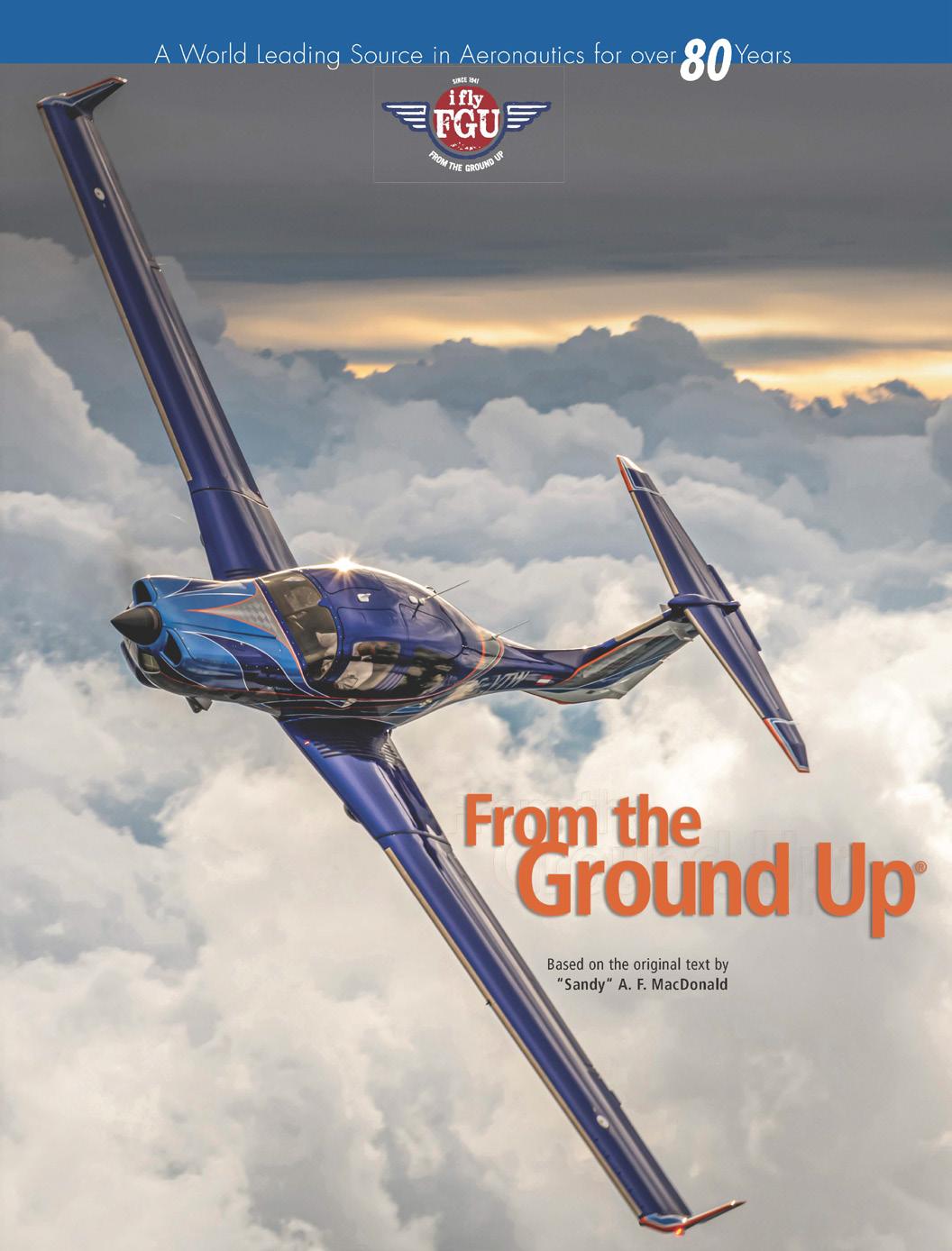
Published by Aviation Publishers Co. Ltd.
Not one to permit his vast experience to allow for foregone conclusions, “Sandy” MacDonald’s meticulous care in the creation of From the Ground Up has become the hallmark for its widespread use and respect as the reference manual of choice in hundreds of flying schools throughout Canada and around the world.
Its latest edition is the 30th Edition. A French-language version is also available under the title Entre Ciel et Terre Totalling over 400 pages of in-depth content formatted in a sequential, logical and easy-to-read fashion, the publication boasts over 360 graphics, charts, diagrams, illustrations and photos. An additional full-colour navigation chart and a sample weather chart are included.
All chapters are current in the latest technological and legislative aeronautical matters and cover such topics as The Airplane, Theory of Flight, Aero Engines, Aeronautical Rules & Procedures, Aviation Weather, Navigation, Radio & Radio Navigation, Airmanship, Human Factors, and Air Safety From the Ground Up also includes an extensive index, glossary and a 200-question practice examination.
Since the 1940’s, virtually every student — civilian, military, commercial, recreational — who has ever learned to fly in Canada has used From the Ground Up as the primary ground school textbook from which they’ve learned everything one can learn about aeronautics, and about flying. Referred to as “the bible” of ground school instruction, and updated with every frequent re-print, From the Ground Up has long been considered an essential resource for all with any interest whatsoever in the theory of flight, and in the practice of aviating.
For more information about this title, visit us on the web where you can obtain details on how to acquire this, and all of our other aeronautical publications.
A World Leading Source in Aeronautics for 80 Years
AVIATION PUBLISHERS CO. LIMITED Box 1361, Station B, Ottawa, Ontario, Canada, K1P 5R4 www.aviationpublishers.com
aviationpublishers.com
A v a ilable from
IN THIS ISSUE

DEPARTMENTS
5 / WALKAROUND
The recreational pursuit of business?
6 / WAYPOINTS
Aviation news
By Aviator Staff
8 / AIRMAIL
Memory lane
By Aviator Staff
9 / GEAR & GADGETS
Four aviation products
By Aviator Staff
10 / FLYING STORIES
Islander continued
By Jack Schofield
12 / THE PLANE FIXER
All in a day’s work
By Liana Buessecker
14 / TALES FROM THE LAKEVIEW
Volunteer extraordinaire
By Robert S. Grant
16 / EXPERT PILOT
One thing led to another
By Richard Pittet
18 / A PILOT’S LIFE
Ice everywhere and on everything
By Chris Weicht
20 / INSTRUMENTAL FACTS
Augmented GPS explained
By Ed McDonald
22 / VECTORS
Is ATC work stressful?
By Michael Oxner
24 / RIGHT SEAT
Transitions
By Mireille Goyer
26 / PEP TALK
RSCs and CRFIs explained
By Graeme Peppler
28 / COLE’S NOTES
In memorium
By W.T. (Tim) Cole
50 / BOOKSHELF
Top aviation titles
52 / SERVICE CENTRE
Deals and offers
54 / FLIGHT BAG
Puzzle and questions
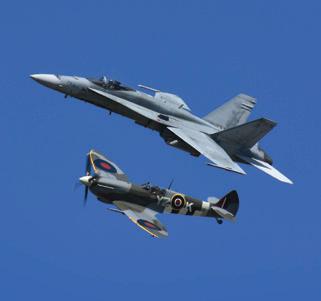
ON THE COVER
An RCAF CF-18 joins a Victory Flight Spitfire in the skies over Gatineau last summer. Two of our three features this month relate to this memorable event.
FEATURES
30 Victory Flight
Three highly skilled pilots were brought together and mated with three vintage warbirds; a Hurricane, a Mustang and a Spitfire. Learn how the Victory Flight was formed.
By Dave Hadfield
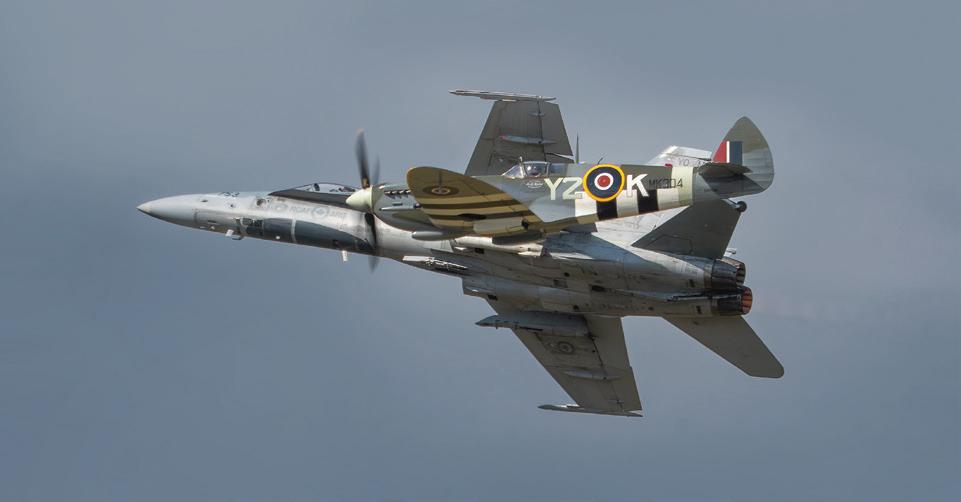
38 A Hornet & a Spitfire
In 2023, AERO Gatineau was a very special event for this aviator and was a highlight of his Air Force career. And flying a CF-18 alongside a Spitfire made it unique.
By Major Justin King, RCAF
44 Boeing’s Flying Boats

Almost a century ago, William E. Boeing was active in the Vancouver area building boats, first the sailing kind then the flying kind. But it was the airplanes he built that made their mark, most of which supported the Allied war effort against the Axis powers.
By Ed Das
MAY/JUN 2024 VOLUME 34 NUMBER 3
Photo by André Laviolette
CANADIANAVIATOR.COM 3




publisher + editor Steve Drinkwater steve@canadianaviator.com 604.999.2411 contributing editor Robert S. Grant graphic designer Janice Hildybrant advertising sales account manager Katherine Kjaer katherine@canadianaviator.com 250.592.5331 director of consumer marketing Craig Sweetman ADMINISTRATION group controller Anthea Williams awilliams@opmediagroup.ca Office 604.428.0261 subscriptions Marissa Miller marissa@opmediagroup.ca 1.800.656.7598 Canadian Aviator is published six times a year: Jan/Feb, Mar/Apr, May/Jun, Jul/Aug, Sep/Oct, Nov/Dec Canadian Aviator Publishing Ltd. 802-1166 Alberni Street Vancouver, B.C. V6E 3Z3 Phone: 604.999.2411 canadianaviator.com Printed in Canada. Agreement No. 42583014. Postage paid at Vancouver, B.C. Contents copyright 2024 by Canadian Aviator Publishing Ltd. All rights reserved. ISSN 1492-0255. Return undeliverable Canadian mail to Circulation Department. 802-1166 Alberni St., Vancouver B.C. V6E 3Z3. From time to time we make our subscribers’ names available to reputable companies whose products or services we feel may be of interest to you. To be excluded from these mailings, just send us your mailing label with a request to delete your name. Publications Mail Registration No. 10939. 50% SUBSCRIPTION HOTLINE 1.800.656.7598 CanadianAviatorMedia @canadianaviatormag canadianaviator.com subscription inquiries admin@canadianaviator.com subscription rates 1 year (6 issues) $26.00 (Taxes vary by province); Outside Canada: $32.00 per year editorial submissions Editorial contributions should be sent to the editor by email in plain text with high-resolution photos attached: steve@canadianaviator.com MONARCH PREMIUM CAPS Premium Stainless Steel Umbrella Caps for yourCessna177 through210 www.hartwigfuelcell.com info@hartwig-fuelcell.com US: 1-800-843-8033 CDN: 1-800-665-0236 INTL: 1-204-668-3234 FAX: 1-204-339-3351 NEW TANKS - 10 YEAR WARRANTY Keeping aircraft in the air since 1952 SPECIALIZING IN BEAVER & OTTER FUEL CELLS QUOTES ON: Cherokee Tanks Fuel Cells & Metal Tanks Repair, overhauled & new Technical Information or Free Fuel Grade Decals Keeping aircraft in the ROTECH MOTOR LTD. 1-(236)-600-0137 SALES@ROTECHMOTOR.CA ROTECHMOTOR.CA AUTHORISED ROTAX DISTRIBUTOR XPS AVIATION ENGINE OIL Formulated specifically for Rotax aircraft engines. FORMULATED FOR THOSE WHO CARE. 4 CANADIAN AVIATOR MAY/JUN 2024
The Recreational Pursuit of Business?
As someone whose occupation requires a certain awareness of aviation events in Canada, I subscribe to a daily summary of TC’s Civil Aviation Daily Occurrence Reporting System reports (CADORS). I only read the details of a few of them, and not every day. However, several in particular catch my attention and I read further. They are ones classified where the aircraft use is classified as “Recreational.”
Most reports are initiated by Nav Canada ATC employees. In completing the report, they must choose the CAR sub-part option that corresponds with the aircraft type. All the CAR Part VII subparts, which cover the different commercial operations, are listed, as is 406 (Flight
Training) and 604 (Private Operators). The remaining options are Other, Recreational Aviation and Unknown.
Sub-part 604 is for aircraft operating under a Private Operator Certificate, which is required for most operations of certain larger aircraft, such as those greater than 12,500 lb, turbine-powered aircraft and pressurized aircraft with six or more passenger seats that carry cargo or passengers.
What is disturbing, however, is that the operation of aircraft owned by companies or individuals that do not meet the 604 criteria are lumped into the Recreational Aviation category. Over the years I’ve seen many reports of relatively expensive, high-performance piston aircraft

that the system classifies as recreational aircraft. Just last week there was a report of a corporately owned Cessna 340 that violated an airspace restriction that required ADS-B. The report, and others like it, implied that the pilot was “out having a good time flying around.”
Regardless of the infraction, what is evident is that there is a chunk of General Aviation aircraft that are used as business tools but whose use is considered recreational flying by Nav Canada and the federal government.
Is it not surprising, then, when senior managers and bureaucrats are presented with aviation statistics, decisions are made without regard to the legitimate business use of many aircraft types?


WALKAROUND EDITORIAL BY
DRINKWATER ONE STOP SHOPPING • LOWEST PRICES • SAME DAY SHIPMENT ORDER YOUR FREE 2023-2024 CATALOG!
STEVE
CANADIANAVIATOR.COM 5
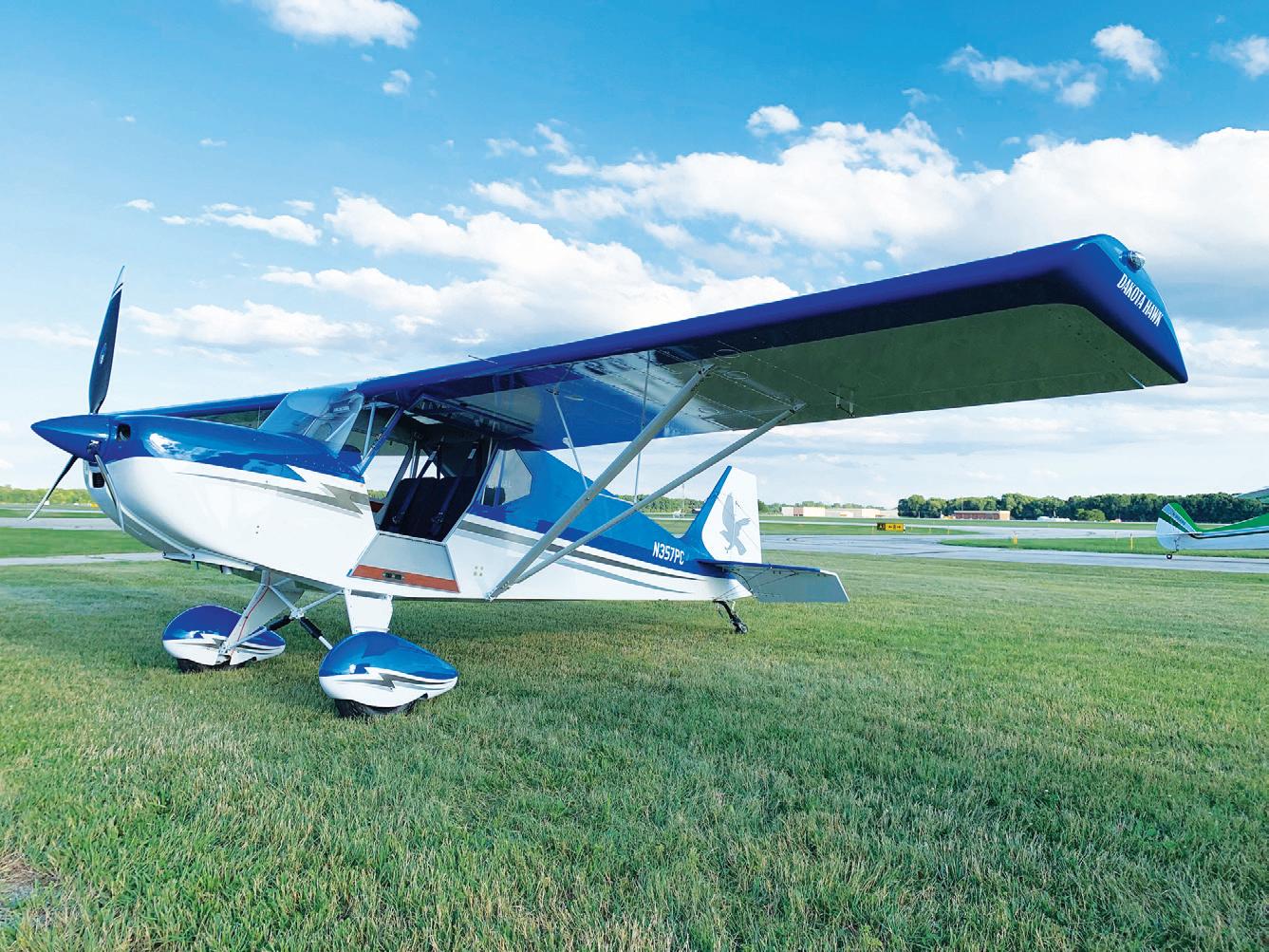
CKG Aero Announces Battery-Electric Kit Plane
FISHER DAKOTA HAWK GAINS ELECTRIC OPTION
In 2022 Fisher Flying Products of Dorchester, Ontario, an accomplished kit plane manufacturer, was acquired by Arun Modgil of Mississauga’s CKD Packaging and renamed CKG Aero, and they have recently announced the company’s latest offering, a battery-electric version of the Fisher Dakota Hawk, the CKD Aero Dakota e-Hawk.
Propelling the two-seat (side-by-side) e-Hawk is an electric motor developed and manufactured by Kite Magnetics of Australia, the KM-60. Flight time of over one hour can be achieved if paired with an appropriate high-capacity battery, according to CKD Aero.
“With Kite Magnetics’ propulsion system’s incredible efficiency and CKD Aero’s commitment to excellence, this partnership is poised to redefine what it means to fly, making the skies more accessible, more sustainable, and more exhilarating for everyone,” Modgil, CKD Aero’s CEO, said.
Kite Magnetics’ KM-60 motor generates 60 kW, or 80 hp, while its KM-120 powerplant generates double to power and is intended for larger aircraft. The motor uses a newly developed and trademarked magnetic material developed by Melbourne’s Monash University called Aeroperm. Kite Magnetics says this material has allowed for lighter, more efficient electric motors.

CKD Aero and Kite Magnetics are planning to showcase the Dakota e-Hawk at AirVenture 2024 in Oshkosh, Wisconsin in July.
French Alternative to CL-415 in Development
CANADIAN CONSULTING COMPANY TO ASSIST
Hynaero, a French company based in Bordeaux, announced in February that it has contracted Montreal-based Altitude Aerospace to assist with the design and engineering of their Fregate-F100 amphibious water bomber, a clean-sheet design that the company touts as a next-generation aerial firefighter aircraft, ready to take on the growing threat of wildfires around the world.
With a payload of 10 tonnes of water, a cruising speed of 250 knots and an endurance of up to four hours, the company admits it is challenging de Havilland Canada’s CL-415 head-on, targeting both private and government markets. The aircraft will feature fly-bywire controls and a glass cockpit.
“This agreement represents, in addition to the know-how and experience of Altitude Aerospace, significant financial

COMPILED BY AVIATOR STAFF WAYPOINTS
EAA CHAPTER 132 KITE MAGNETICS
6 CANADIAN AVIATOR MAY/JUN 2024
A U.S.-registered Fisher Dakota Hawk with a conventional piston powerplant.
“We are delighted to collaborate on this ambitious and innovate new program, which is completely in line with the strategic positioning of the group and, moreover, with our geographical development in France.”
DeltaHawk Expands Engine Lineup
support and a major step forward for the next phases of our aircraft program,” said Hynaero’s co-founder and president David Pincet.
Altitude Aerospace was founded in 2005 and employs more than 170 engineers in Montreal and at its two branch offices in Toulouse (France) and Portland (Oregon).
“We are delighted to collaborate on this ambitious and innovate new program, which is completely in line with the strategic positioning of the group and, moreover, with our geographical development in France,” Altitude Aerospace Group president Nancy Venneman said.
Hynaero, which has obtained funding and support from local, regional, national and European levels of government, hopes to have the Fregate-F100 ready for the market by 2031.

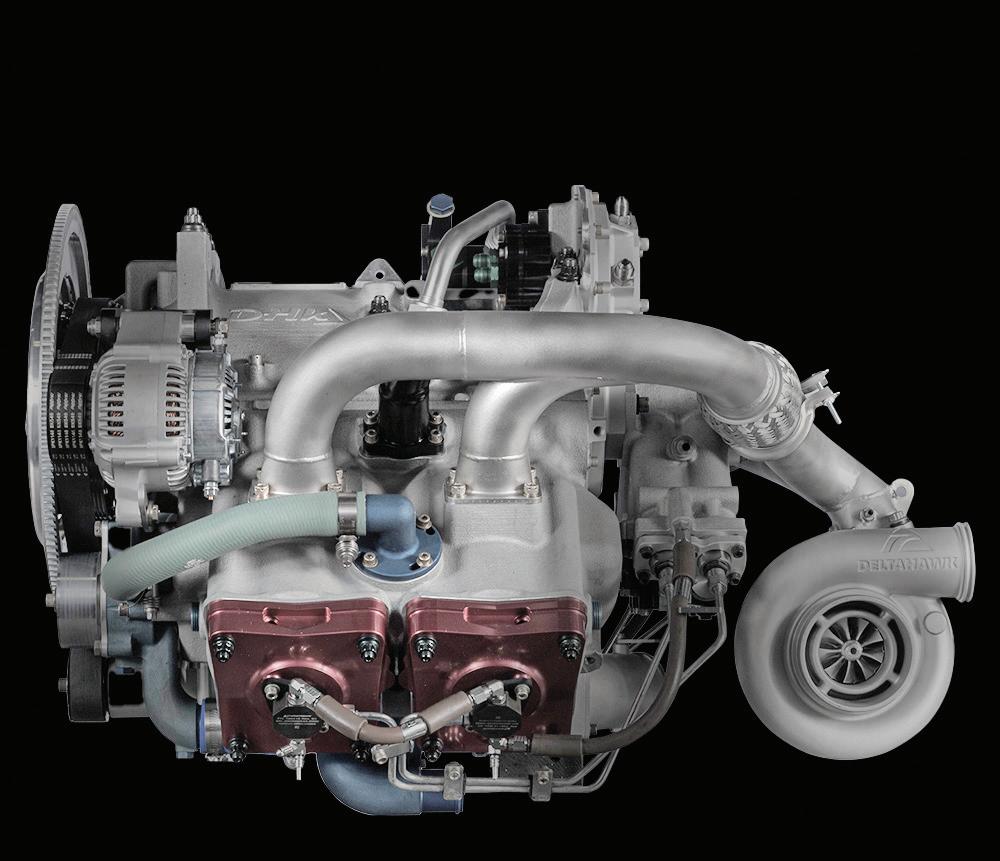
DeltaHawk Engines of Racine, Wisconsin has announced two new jet fuelburning piston engines to their existing 180-hp DHK180 offering. The two new versions are the DHK200 and DHK235, generating 200 hp and 235 hp respectively. All three engines use the same 202-cubic inch (3.3 l) block with 4-inch bore by 4-inch stroke cylinders.
The company’s DHK180 was certified by the FAA in May 2023 and production is expected to get underway later this year. Certification of the DHK200 and DHK235 is expected this year with production of the former to begin this year and the latter in 2025.
“Following FAA certification of the DHK180, customer interest and reservation deposits from aircraft OEMs and individual owners in both certified and experimental markets has been extremely high,” said DeltaHawk’s CEO Chris Ruud.
DeltaHawk highlights several advantages to their engines, citing among other benefits its ease of starting in both hot and cold conditions, 40 percent fewer parts and 35 to 40 percent more fuel efficient than Avgas equivalents and its ability to burn a range of jet fuels, including SAF. Another significant advantage is the elimination of lead contamination of the environment. The price point targeted by the company for its DHK180 is U$100,000.
As reported in our Nov-Dec issue, Bearhawk Aircraft is offering the DHK180 on their four-place model, the Four.
Formed in 1996, the DeltaHawk Aircraft struggled over the years to advance their vision of an alternative to Avgas-burning piston engines. It wasn’t until 2015 that the company received a significant investment that led to the certification of the DHK180 last year, growing their workforce from the original three employees to over 60 in 2019. To date, DeltaHawk says that over U$100 million has been invested in the project.
MORE JET FUEL-SIPPING PISTON ENGINES BECOMING AVAILABLE
Nancy Venneman, president, Altitude Aerospace Group
HYNAERO
CANADIANAVIATOR.COM 7
DELTAHAWK ENGINES
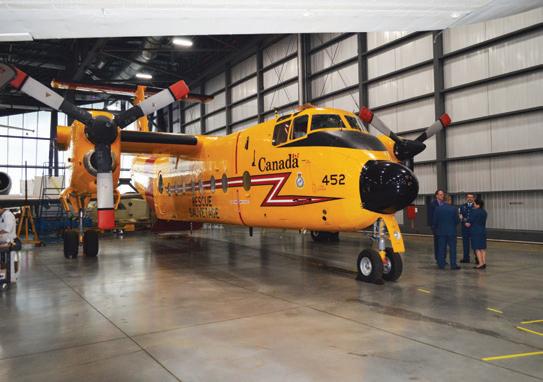







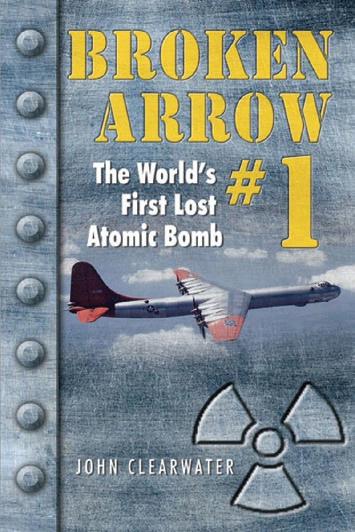
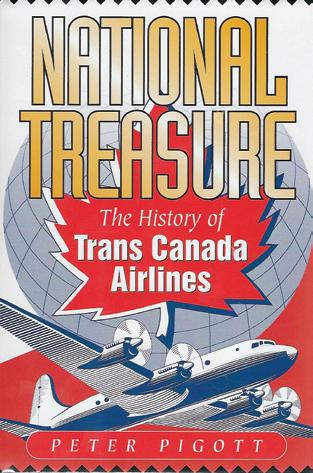
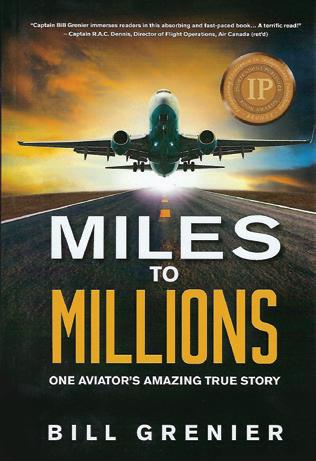
I came across reference to SaintHubert-based 429 Squadron in Robert Grant’s article “De Havilland’s Venerable Buffalo” (Mar/ Apr 2024). Wait, I thought, isn’t that supposed to be 643 Squadron? As a 15-year-old Royal Canadian Air Cadet I attended Escadron 643 Squadron at Saint-Hubert in 1967, not far from our home on Montreal’s South Shore. A little digging revealed that RC Air Cadets have their own squadron designations, and that 429 (Tactical Transport Unit) was established at Saint-Hubert in 1967. The 429 was disbanded in 2005 but reactivated in 2007 (renamed Transport Squadron). In addition to the de Havilland Buffalo featured in Grant’s article, 429 used Lockheed Hercules and Boeing Globemaster III in support of Canada’s operations in Afghanistan.
René R. Gadacz Grande Prairie,
Alberta
Your Source for Canadian Aviation Literature aviatorsbookshelf.ca AIRMAIL
The
Squadron Memories
Send us your letters Canadian Aviator welcomes reader letters on topics of concern to Canadian pilots and the aviation industry. Please be brief, to the point and polite in your submissions. Email Steve Drinkwater steve@canadianaviator.com BY ROBERT S. GRANT A my shoes slammed into the snowbank, reminded myself that close acquisition rated higher than shivering scalp. Media relations officer Philippe Tremcliffe’s pristine premises. Now, after stumbling through 15-knot gale, staggered into the The brilliant yellow aircraft came across as breathtaking in brilliance and size. Museum director-general Christopher Kitzan explained wingless exhibit. On October 11, 2023, six flatbed transport trucks had delivered the prize from CFB Trenton where the sleek example RCAF veteran technicians and CASM’s Réjean The existence of 452 and another 125 from 14-cylinder Pratt & Whitney R-2000-powered DHC-4 Caribou. Efficient and record setting for its era, de Havilland acceded to US Army turbine transport project capable of hauling almost double the load. flew on April 9, 1964, as the DHC-5A and the RCAF ordered 15, designated as CC-115s by Story, averaged $1,550,000. The museum’s July 1967, example initially carried civil registration CF-QVA with serial number 06 before Squadron. Unlike most military acquisitions, 452 reverted to the same lettering in 1972 on lease to de Havilland for icing trials before carrier, 12,500 pounds could be taken aloft — more than twice the load of Douglas DC-3. With outstanding STOL capabilities, thanks and spoilers, 452 could carry 41 troops, so said De Havilland News Backgrounder. With full fuel, range reached as much as 1,391 DE HAVILLAND’S VENERABLE BUFFALO A Canadian Legend Takes Rightful Place At CASM 8 CANADIAN AVIATOR MAY/JUN 2024
GEAR & GADGETS

First Aid/Survival Kit
Crashkit International Corporation, a company based in Medicine Hat, Alberta, offers a series of first aid kits designed by, and made for, pilots. They are designed such that, once opened, they are impossible to close again. This is because their carefully selected and packed contents are compressed into a Pelican case designed to withstand an aircraft crash. The kits are available in a variety of sizes to accommodate various aircraft passenger capacities. At the lower end of the product line is their Crashkit Lite series, designed for 2-, 4- ,6- or 10-passenger aircraft. The Crashkit 4Lite contains 190 unique and essential items for shelter, signal, fire and water purification. This product is 27 cm x 24.6 cm x 17.4 cm and weighs 4.31 kg. About C$885. Learn more at, and available from, crashkit.ca
Windshield Cleaner
McFarlane Aviation of Kansas offers an aircraft window cleaner that they say, “This stuff is so D A M good we had to share it!” Offered in three sizes, Aircraft (1.5 oz.), Hangar (16 oz.) and Refill Size (1 gallon), D A M Window Cleaner is a liquid spray with no ammonia and only a trace of alcohol. It uses carnauba wax and polymers to fill in minor scratches, leaving a slick surface that repels dust. They claim it is safe on all surfaces. It can be used on other acrylic surfaces, such as those found on motorcycles, boats and RVs. From C$7.95.
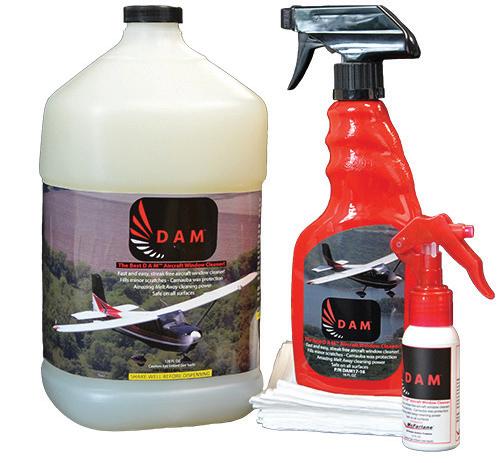
Learn more at, and available from, mcfarlaneaviation.com and aircraftspruce.ca
Aircraft Tug

As each year adds up and our aircraft do not get lighter or easier to handle, maybe it’s time to think about an aircraft tug. AC Air Technology of California offers a range of remote-controlled battery-operated tugs that are designed to handle airplanes from 1,500 to 21,000 pounds, as well as a model designed for helicopters. On the lower end of the scale, AC’s TrackTech T1V2 - Compact Tug can handle airplanes with up to 3,500-pound gross weight and tire sizes from 5 x 5 to 6 x 6. They can also be quipped with LED lights. A tailwheel adaptor is also available. About U$4,700. Learn more at, and available from, acairtechnology.com
Kneeboard
There never seems to be a single kneeboard configuration that meets everyone’s tastes. U.S.-based Lift Aviation is offering a pair of kneeboards, the Navigator T-1, that they dub “non-slip workstations.” Made of nylon or leather, they sport a removable EVA knee pad and are designed to support tablets up to the size of an iPad Mini. The Velco-equipped leg straps are made of silicon so they don’t slip, and there is a clear plastic document retainer on the top. It comes with an acrylic clipboard. About U$49 (nylon) or U$89 (leather). Learn more at, and available from, liftaviationusa.com

PRODUCT REVIEWS COMPILED BY AVIATOR STAFF
CANADIANAVIATOR.COM 9
Just Another Islander
DEB’S SAGA CONTINUES
You read in the first episode of this epistle that I was engaged to ferry a Britten-Norman BN-2 Islander from Cambridge, Maryland to Campbell River, British Columbia. Ken, my co-pilot to be, and the buyer of the airplane had found it in the pages of Trade-a-Plane and bought it sight unseen over the phone with only the owner’s assurances that it was airworthy. We flew the airlines to Boston, Massachusetts and were dumbfounded to be advised by the airline’s agent that Cambridge, Mass. didn’t have an airport. “You’ve got the wrong Cambridge, my friends,” she laughed, when looking at the phone number Ken had from the Trade-APlane newspaper. “You want to be in Cambridge, Maryland. We can get you to Baltimore — the rest is up to you.”
So, here we are, standing at a designated taxiway at Baltimore International Airport, awaiting the arrival of the owner of the Islander to pick us up and fly us to his private airstrip in Cambridge, Maryland, a beautifully paved runway, as it turned out, and a light lunch waiting for us in the immaculate, prosperous-appearing terminal office operated by a real estate company, an airline and an aircraft sales operation. The big news happened for me when we were on final for that runway: a big high tail in the lineup of planes with a green reminder that Donald E. Braithwaite’s initials would soon appear as our tires barked on the touchdown. CF-DEB, painted in green, stood proud on the tail as did the Gulf Air logo. What a surprise!
“We flew it home across the U S of A de-registered as it was,” laughed our smiling host. “Nobody raised an eyebrow,” he added. “And that’s exactly what you should do unless
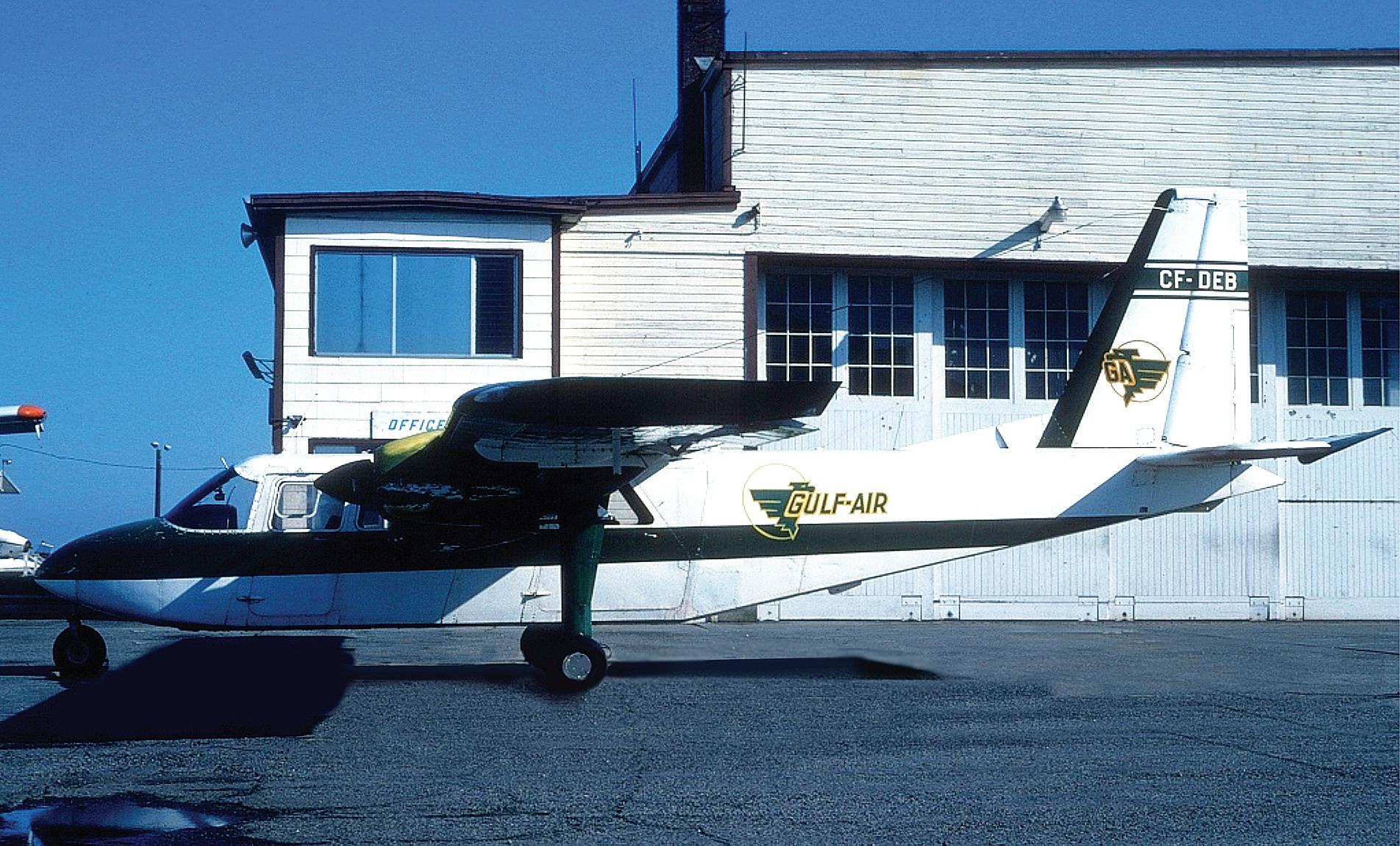
you wish to take up living here waiting for the FAA to issue you a ferry permit.” He was laughing at our alarm. “They’ve (the FAA) been making a lot of mistakes recently and found very wanting by the government. You should just get in that bird and fly home. Call yourself Canadian Civil DEB, that’s what we did.”
I looked at Ken and his eyes sparkled — this was his kind of challenge. “Let’s get airborne,” he laughed. So we flightplanned, innocently, with the FAA and were given a list of places we were allowed to land at — a long, long list. “Just those places,” said the voice. “No other airports.”
We got into the unregistered DEB, waved goodbye and took off with those two Lycomings snarling their best from the 24-squared settings from the recently top-overhauled IO-540s. “Nice,” I thought as we topped the required 8,000 feet for VFR passage through the Washington National Control Zone, which gave us vectors for Louisville and put us on flight following.
“Where in hell’s Louisville?” asked Ken. “Got me,” I said, “but it is not on the list of airports we are allowed to land at.” Ken replied, “Oh, great. Then let’s land there. I need some maps.”
This wasn’t cross-country ‘Nav 101’ for sure, but Ken loved it. Louisville, by the way, is in Kentucky and is a nice, clean, neat, single-paved runway in the middle of nowhere, totally surrounded by a giant forest. The population? One man, who was very happy to sell us all his map stock and some of his 130-octane green avgas.
We now set our sights on Kansas, and I couldn’t help whistling, “Yellow Brick Road” and “Somewhere, over the Rainbow” as I recalled the Straw Man, Dorothy and that entire crew all trying to get back to Kansas City. And the dog. What was the dog’s name?
Dog notwithstanding, we did not land at Kansas. Instead, an abandoned atom-bomber base with runways built for the B-52 — wide enough for the Islander to land across the numbers.
I can’t remember that airport’s name either, but it wasn’t on the list of FAA
FLYING STORIES
HANGAR TALK WITH JACK SCHOFIELD
AIRLINERS.NET 10 CANADIAN AVIATOR MAY/JUN 2024
acceptable places for a ‘Canadian Civil’ to land.
I must now admit that I am writing this without benefit of my old logbooks, which detailed the succession of landings as we augered our way across the U.S. with Seattle as our planned port of departure back to Canada. Those logbooks are in the attic of my home on Mayne Island and to get at them one needs to employ a very heavy stepladder that has been gaining weight outside in the rain. Not only that, but one needs to have the use of one’s legs, something now denied me by a syndrome named Guillain-Barré (GBS) that struck in the night recently! So, please suffer my recollections of the geography as we motor across the skies of now Colorado where we followed the old Mormon trail up and over the peaks that brought us, as it did them, to Salt Lake City. There was a lovely, paved strip at the 4,000-foot elevation, so we landed there to get gas before going for the 12,000-foot summit. The attendant was very friendly but somewhat apprehensive as he put the nozzle in our tanks.
“Are you planning to use a Canadian credit card to pay for this?” he queried. “Yes,” replied Ken, “Why?”
“We were badly bitten by some cowboy from Vancouver, B.C. Do you know where that is? He got us for about four hundred bucks.” Ken admitted he knew where Vancouver was, but assured the man of his own good credit and we were soon leaving that extra-long runway and climbing over the still-visible trail made by the Mormon migration so many years ago as they made home of their chosen Salt Lake City.
When we topped 12,000 feet, we had 200 feet between us and the rocks. Then suddenly we were at 12,000 feet over Salt Lake City as the mountain became a very sheer cliff. We let down carefully, not wanting to cool those cylinders too quickly after that long
“I am a worrywart about overhead transmission lines and, as we flew into this gorge, I got to thinking that there had to be such hazards if there was a dam generating electrical power involved.”
hard climb. It was a gorgeous day for at least a thousand miles. The salt flats, where all the high-speed testing of vehicles had taken place over the years, stretched out for miles beneath us and the lake, which gave one such extra buoyancy that perhaps we could walk on water, gleamed in the sun. We thought it a good idea to become tourists in S.L.C. and stayed overnight before taking off for our next stopover at the head of the Columbia River.
There is a long, deep gorge leading to the Grand Coulee Dam where it is possible to fly below sea level, which we commenced doing having been assured earlier by a total stranger that there were no overhead wires to worry about. I am a worrywart about overhead transmission lines and, as we flew into this gorge, I got to thinking that there had to be such hazards if there was a dam generating electrical power involved. So I did an abrupt 180, which startled my co-pilot. Ken admonished me for performing such an abrupt turnaround, but I was happy to be up where we would be back flying in well-mapped country with hydro lines clearly identified.
As we flew into Washington state with the smell of home, real or imagined in our minds if not in the air, we relaxed and enjoyed the return to familiar ground. DEB crossed the 49th parallel and I am sure I could hear a renewed energy from the two
Lycomings as they carried us up the coast of Vancouver Island and onto final at their old home at Campbell River airport (CYBL) where a Canada Customs officer awaited. We each held our breaths as he examined all the documents, ours and those of the aircraft. When he laid down the latter, he looked up at us with an astonished look on his face. He didn’t speak for quite a long pause, then, “Welcome home gentlemen.” Then, with a look as if to assure us, said, “I’m not going there!” He gathered up his stuff and walked away. He didn’t go there because we never, ever, heard a peep from any branch of government, including Transport.
When I was about to retire from flying and go into the publishing business, I got a nice job flying an Aero Commander Shrike with a 12-foot stinger in the tail to perform magnetometer readings out of Inuvik. I was to pick up this airplane in Whitehorse where I would find the beauty parked among a gaggle of other craft. The clapped-out-appearing plane parked immediately beside the spiffy Aero Commander bore the registration DEB. There was no sign of Don Braithwaite green nor Jimmy Pattison’s white and red paint. It looked to be in terrible repair.
When I finally did retire from flying, I launched this very publication, only we called it BC Aviator in the beginning. I rented office space from Viking Air in one of their Pat Bay hangars. It was a nice office in Hangar Three with a big window looking into the hangar. The tail of one of the hangared planes got in the way of a good view of the other stored aircraft. The tail had what was then a new ident of 4 letters C-FDEB. She flew every morning carrying what they call “time-sensitive mail” to Vancouver and beyond. She was painted a dull uninteresting grey, but I thought kind of a proud look to what most would consider just another BN-2 Islander.
CANADIANAVIATOR.COM 11
Cookie Books and Tangled Seatbelts
A CURSORY LOOK AT WHAT PLANE FIXERS DO

THE PLANE FIXER
SWINGING WRENCHES WITH LIANA BUESSECKER
ILLUSTRATION: KATH BOAKE 12 CANADIAN AVIATOR MAY/JUN 2024
Have you ever been in the boarding lounge of an airport when you hear those dreaded words, “Delayed due to maintenance”? Maybe it’s not even your flight but the plane at the adjacent gate, and still you feel an array of emotions: angry about the delay, spiteful because of course it’s maintenance — it’s always maintenance, and nervous about getting on a plane that five minutes ago wasn’t good enough to fly. You look out the window and either there’s a person out there staring up at the engine, scratching their head, or you don’t see anything — no sign of a mechanic or a toolbox or anything indicating a real issue.
What is a real issue that causes a maintenance delay? And what could possibly be broken five minutes ago that renders the aircraft not airworthy, that is fixed so quickly? The engines are still there, none of the tires look flat and both pilots look comfortably seated in operating chairs.
Welcome to Edmonton, Alberta in mid-January while it’s -37° outside (without the windchill). As an airline aircraft maintenance engineer (AME), I’ve responded to dozens of ramp calls to complete an MEL, which is a Minimum Equipment List rectification stating the aircraft is safe to fly with whatever system is inoperable or broken. Sunshine or blizzard, your local AME will be outside troubleshooting, replacing components and diving through manuals for correct operating procedures. Snags that can be signed out with an MEL rectification range vastly from a stuck engine intake bypass door, a broken overhead bin latch, or a worn-out spring of a lavatory garbage canister. In these cases, a unique set of requirements must be met, such as the lavatory being locked out so it cannot be used. If you ask any pilot, the most important MEL item on any aircraft is the coffee machine; airplanes can’t fly without at least one in proper working condition. (Spoiler alert: airplanes may run on jet fuel, but pilots run on caffeine.)
While dozens of passengers remain inside the terminal during their maintenance delay, with their faces pressed against the glass wondering if and when their plane will be fixed, the maintenance team is always working as quickly and safely as possible. I’ve spent two hours replacing a relay that usually could be replaced in five minutes. If you’ve ever had to handle 5/32" nuts in -40°C, then you’d understand how you get about 45 functional seconds before you have to warm your hands inside the truck. I’ve dealt with planes returning immediately after takeoff due to pressurization problems, only to close a small drain screw in the cabin door. And I’ve had to make the dreaded decision to tell the captain to deplane the passengers, “This plane isn’t going anywhere.”
Sometimes your maintenance delay will go beyond the 20-minute deferral process, and it isn’t just because we’re topping up the tire pressure. If the baggage cart has ripped the cargo door off its hinges, or a fuel truck has bent a propeller blade, or the catering truck has taken off the last foot of the wingtip (all of which I’ve unfortunately seen), then your plane isn’t going to be flying. When the aircraft requires simple cosmetic repairs, flight attendants will write these up in the cabin logbook or, as some maintenance personnel call it, the “Cookie Book.” We grease the wheels on the trolley cart, and tighten the arms on the tray tables, and adjust the angle of the reading light.
severely wrong. One day I had a man complain of a hole in the side of the airplane. The explanation? A window behind the forward galley had the covering slip down and daylight was passing between the interior panels. A woman once expressed that her seat was falling apart. A wiring bundle provides power to the inflight entertainment screen in the seatback, and this bundle had slipped loose from its clamps and was dangling beside her feet.
“If you ask any pilot, the most important MEL item on any aircraft is the coffee machine; airplanes can’t fly without at least one in proper working condition.”
I’ve been called to fix tangled seatbelts that a passenger refused to let the flight attendant untwist, and to re-tape down a cabin carpet because someone was having intrusive thoughts and wanted to peel the carpet all the way back. Friends have texted me as they’re boarding their flights: why is the rudder a different colour? The captain said they’d be flying unpressurized — can planes even do that? What is that awful noise the plane makes after shutdown? And why do the cabin lights flicker while the engines are starting?
Often passengers will raise questions about the airworthiness of the aircraft, and those are always my favourite reports. Because, while they always share their findings with the utmost genuine concern (and seriously, never stop), they are usually, and thankfully,
Having the answers to these questions is why I got into aircraft maintenance in the first place. I sat beside a runway watching the planes take off and land and asked all these same questions, and I couldn’t stand not knowing. I find there’s always a bit of comfort in understanding why something isn’t a concern. We all sit through the same safety demonstration prior to takeoff, yet the flight attendants never look concerned when the airplane shudders and shakes down the runway. Perhaps it’s because they have a firm understanding of the theory of aerodynamics. Or maybe they have the utmost faith in their AME, who bid them a good flight with a, “See you when you get back.”
CANADIANAVIATOR.COM 13
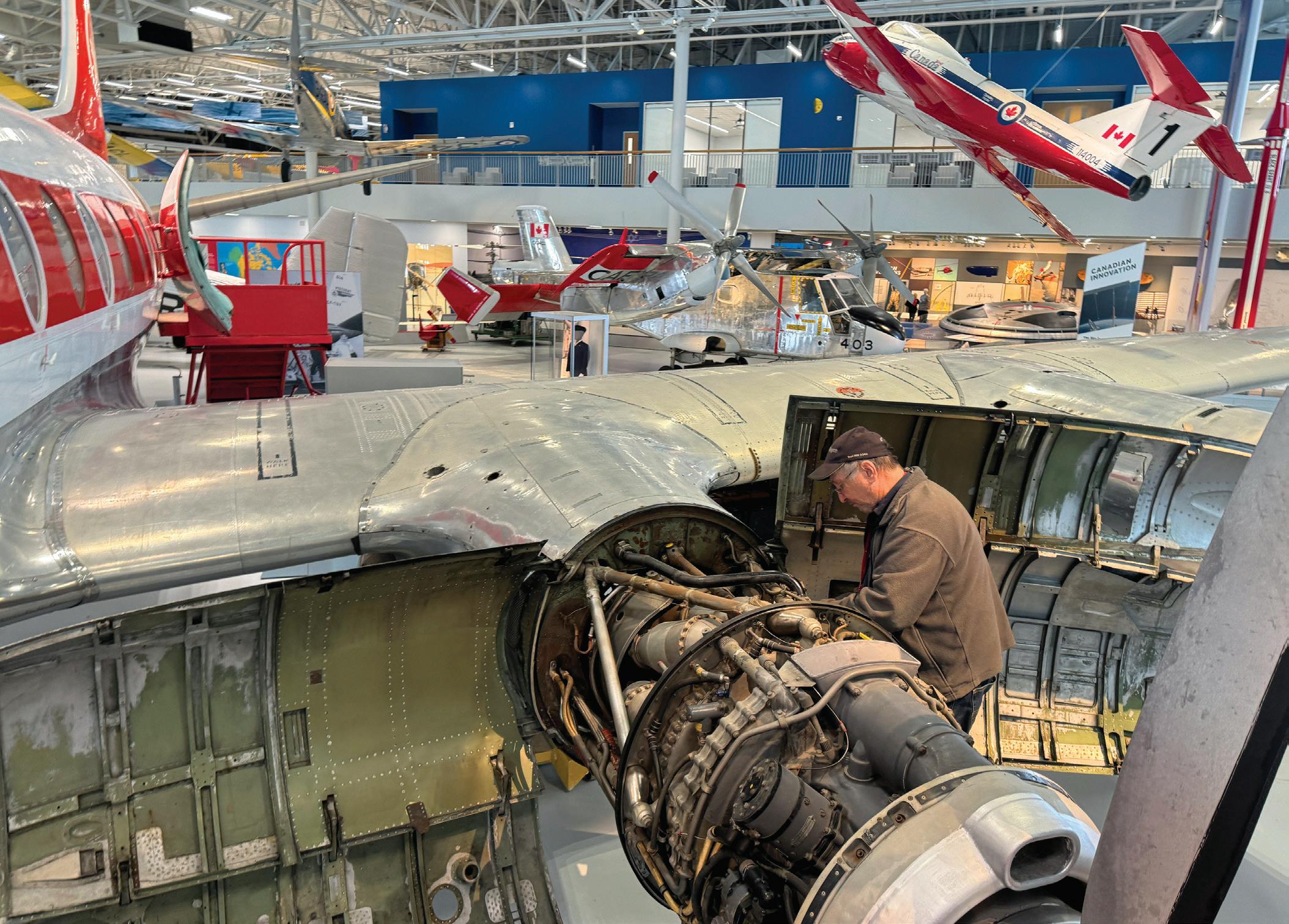
Robert W. Arnold
WINNIPEG’S REMARKABLE MUSEUM VOLUNTEER
Strange how an evening Yuletide airplane hop can lead to a lifetime dedication to aviation. As a child in Winnipeg, Robert W. Arnold enjoyed occasional Christmas publicity rides provided by Air Canada’s precursor Trans-Canada Air Lines during the late 1950s. While gazing through the oversize plexiglass windows of Vickers Viscounts, he had no idea that one day he would be considered an expert on the four-engine British-built transport first flown in England on July 16, 1948. Arnold did not become a professional pilot roaming Manitoba wilderness nor leap northward as an aircraft maintenance engineer. At age 14, however, he
signed on with the Royal Canadian Air Cadets and studied airmanship, meteorology, navigation as well as engine and airframe basics during four of his teenage years. Later employment kept him within the sprawling metropolis of Winnipeg. One occupation in 1976 brought him to early morning groundskeeping duties at a popular golf club. The position entailed free afternoons.
“I was cruising the local telephone book and came across something called the Western Canada Aviation Museum (WCAM) near downtown Winnipeg, which started as the Manitoba Airplane Restoration Group in 1970,” Arnold reflected. “I called them and spoke with
Gordon Charles Emberley, one of the five founding members, who suggested dropping into their new facilities at 11 Lily Street.”
Emberley, later inducted into the Order of Canada as a “... driving force helping to preserve our country’s aviation heritage,” listened to Arnold’s aeronautical interests. He discovered that his first-time visitor enjoyed the hands-on aspect of ‘pulling wrenches’ and promptly introduced him to other members of the rapidly expanding organization.
For slightly more than his first volunteer year, Arnold laboured in the engine department and revelled
TALES FROM THE LAKEVIEW BUSH FLYING WITH
S.
ROBERT
GRANT
14 CANADIAN AVIATOR MAY/JUN 2024
VANESSA DESORCY
in handling historical metal artifacts or absorbing fragrances of aviation gasoline, hydraulic fluids and oil. He considered himself privileged to learn from pioneers who endured austere winters and fogbound open-water seasons. Most passed on ‘tricks-of-thetrade’ and related tales of fingernails pierced by metal slivers or the stink of thawing boots. Arnold respected their contributions.
“After becoming absorbed in the outdoor aspects of museum work and airplane types, I decided to leave my full-time job and donate at least two years volunteering with WCAM,” he said. “That’s when I really gained a lot of experience but never forgot the earpiercing whine of the Viscounts’ RollsRoyce Dart engines while living almost directly under the Winnipeg airport’s hectic approach path.”
As WCAM expanded, a TransCanada Air Lines Vickers Viscount registered CF-THS, which flew with the airline from 1958 until 1974, joined the collection. Shortage of exhibit space forced temporary storage of the 88-foot, 11-inch wing-spanned aircraft at Gimli, 51 miles north of the city. A hangar had been made available, but the Type 757’s vertical stabilizer proved too tall for the structure. Arnold and four other volunteers dismantled the upper section.
The responsibilities of placing the aircraft on display in 1982 increased Arnold’s fascination for the legendary airliner. Air Canada (renamed from Trans-Canada Air Lines in 1964) added reams of documentation to the donation package. Instead of discarding excess historical material, museum management offered the files to Arnold.
“I can either blame or thank them but I’m certainly glad they let me know about reducing the collection. No wow factor here. No specific section really stands out; all the gold’s hidden deep in the pages,” Arnold reflected. “People who worked on or flew Canada’s Viscounts started contacting me and offering their related material. Many said: ‘Since you have that in your collection, it’s only right you now have this where it can be put to good use’.”
Arnold not only became a renowned expert on type in international circles, he continued dedicating hours to other recoveries and restorations. In October 1987 he participated in what became WCAM’s longest aircraft tow when moving a Lockheed Lodestar 18-56, 480 miles from Thunder Bay to Gimli. After the survey aircraft’s left main landing gear had collapsed at a Baffin Island airstrip, the airframe travelled as ship cargo to Thunder Bay’s freshwater port. Arnold and a team of like-minded aficionados completed delivery to museum storage.
Pinched fingers, spider-infested airframes and greasy ropes became routine. On one assignment, Arnold acted as a taxi pilot for a corrugated metal Junkers Ju 52/1m to activate air bottles for braking. As short-term project manager from 2019 until 2022 for Bellanca Aircruiser CF-AWR, he located, refurbished and, with help, installed a Wright 1820-32 engine while arranging with Winnipeg’s Canadian Propeller to overhaul and install the massive unit and hub mechanism for WCAM (whose name changed to Royal Aviation Museum of Western Canada in 2014).
A six-day drive in July 1980 took place when a team, including Emberley, rolled away from Manitoba’s flatlands en route to Mayo, Yukon, to recover a Fairchild F-11-2 Husky floatplane manufactured in Montreal. One of 12, the rare aircraft experienced engine failure on July 12, 1979. Museum staff decided this example of Canadian ingenuity could not be left to corrode in a patch of Yukon spruce.
“We survived the slippery mud and gravel beyond Whitehorse and then helicoptered in from a mining camp lined with sleds of core samples,” Arnold said. “Three days later, the wreck was dismantled and ready for lift when we had a tense issue with a hungry black bear.”
Although the team succeeded in driving the animal away, it continued placing itself between crew and camp. Concerned that helicopter noise might cause the bear to wreak his fear and frustration on their group, they made
a collective safety call and soon, the camp obtained a substantial addition to food supplies. Today, CF-MAN awaits restoration at the “Royal.”
Robert W. Arnold possessed the aptitudes to enter the world of professional aviators or maintenance engineers. Instead of occupying cockpits or taming obstinate airplanes, he turned his knowledge and talents toward educating young and old about the fortitudes of the men and women who came before. Each one, Arnold believes, from airline presidents to loaders freezing fingers in wilderness lakes, deserve respect.
During a personal odyssey, arranged in part by a pilot-friend, Arnold experienced an eye-opening week filling fuel tanks, cleaning windshields and pumping floats of a de Havilland DHC2 Mk.III Turbo Beaver. Stationed at Ontario Ministry of Natural Resources’ Nym Lake base, 119 miles west of Thunder Bay, summer heat and seasonal blackflies became part of the drama. Worse, he helped shuffle a 200-pound apartment-size propane refrigerator into CF-OPA as high winds roiled the lake. He and his workmates barely escaped injury when the cumbersome object slipped on the water-streaked floor.
“That week certainly cemented my point of view of aviation’s pioneers. We did almost everything during good weather and mostly in a controlled environment. My predecessors were not so fortunate,” said Arnold. “They did the same work and much more in not-sopleasant places from +40°C to -40°C in bug-infested muskeg, lakes and bushes with likely forced landings in inhospitable terrain far from civilization with limited or zero communication.”
Passengers constantly migrate from Winnipeg’s nearby airport terminal and school buses trundle in with excited children eager to enjoy “things with wings” and the stories that go with them. Beyond the exhibits and usually out-ofsight, Arnold ensures that restoration and recoveries progress. In quiet times, he often ponders the legacy of the massive single spar Vickers Viscount he boarded as a child on a long-ago winter night.
CANADIANAVIATOR.COM 15
My Panel Upgrade
A TECHNOLOGICAL LEAP FORWARD FOR A 2002 CESSNA 182T
Those of you who follow this column may recall my efforts a few years back to find a light twin we could fly after retirement from the airline. In the end, the search didn’t turn up any winners, mostly owing to the dearth of worn-out old multis suddenly appearing on the pages of Controller and in the hangars of aircraft brokers. Even our bulletproof Plan B tanked, the one where we would by a vintage Piper Seneca from 90-year-old potato-farming Uncle Virgil in Idaho, then launch into a total restoration project. I’ll blame that failure on the blight.
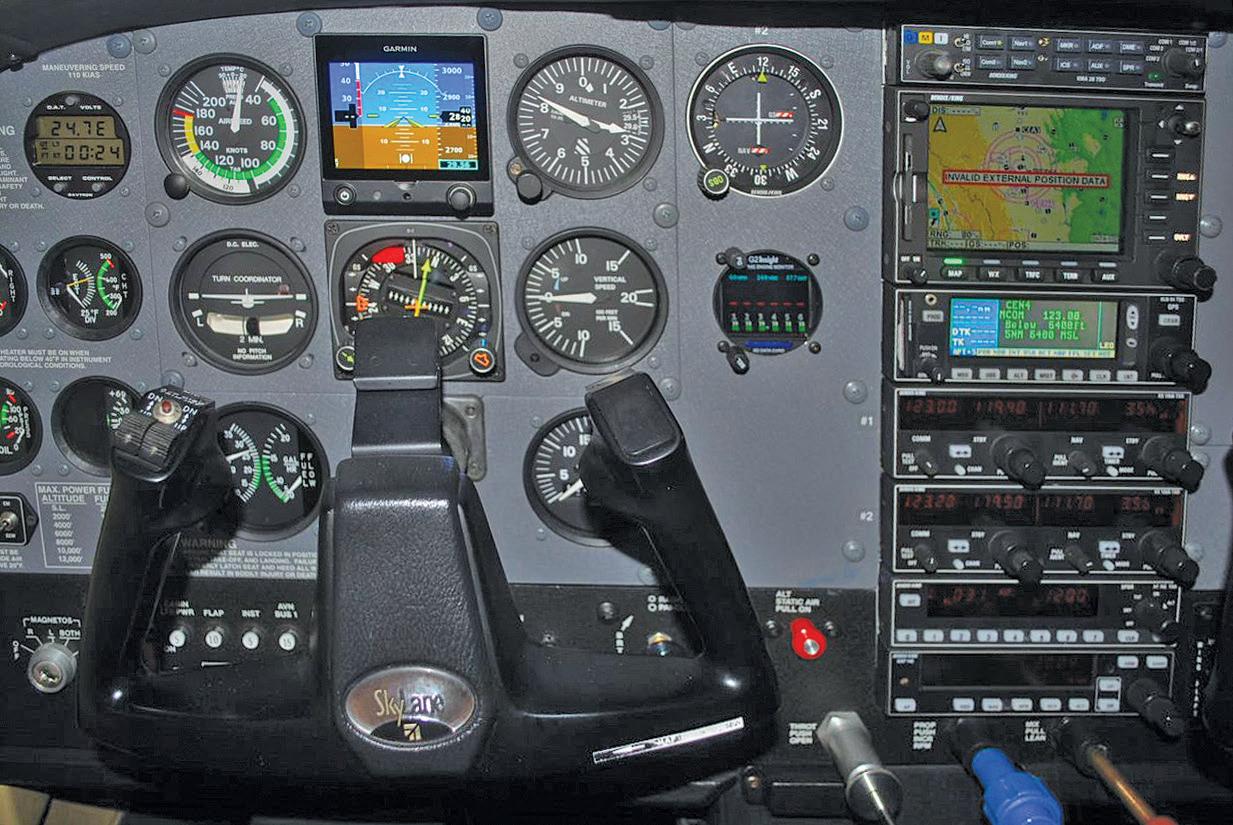

My wife suggested that we consider upgrading the panel in our 2002 Cessna 182T. Great idea, Karen. But what continued to irk me was that, apart from an attitude indicator failing during the early days of COVID, the factory-installed gear was all working great. The ongoing fly in the proverbial ointment, however, was our need for ADS-B capability to provide for hassle-free flying in U.S. airspace (with Canadian ADS-B airspace requirements soon to follow). In case you haven’t heard, ADS-B boxes require a WAAS GPS data source, which our vintage KLN 94B GPS was never designed to provide.
The plan started out simply and affordably enough. Replace our legacy Bendix-King GPS with a new Garmin GNC 355, then add a diversity transponder to satisfy ADS-B Out requirements. That should do it ... right? Soon after came, “And while we’re at it, why not spring for a new Garmin audio panel, one compatible with the digital transceiver co-located in the GNC 355 Navigator?” Then things really got out of hand.
Before going all-in on a new avionics configuration, I thought it best to consult
the Air Regs. CARS 605.18 is clear where IFR flight is involved. It details the requirement for a second navigation source that would allow either continuing an instrument approach, or diverting to an alternate airport should a single navigation source fail. The obvious question is then, “Why not just install a Garmin GNC 650 or 750 since those navigators come with built-in VOR/ILS receivers? Wouldn’t this satisfy the TC equipment redundancy requirement?”
The answer is ... maybe. With only one satellite receiver on board, carrying out a GPS missed approach, should your single navigation receiver fail, is most likely impossible. Even with a VOR receiver on board, you would require both a VOR on or near the field, not to mention an alternate missed approach procedure. Add to that the ability to actually navigate to an alternate airport. The obvious solution was installing a second GNC 355.
At my airline, GPS approaches are actually the preferred procedure. Virtually every destination we fly our Skylane to also provides the same kind of GPSbased instrument let downs. LPV accuracy (Localizer Performance with Vertical Guidance) allows for minimums approaching those of a conventional ILS. Using Garmin’s Advisory Glide Path function, even non-precision LNAVs begin to resemble Constant Descent Angle approaches, the industry-standard. The future has arrived, and it’s not one where ground-based navaids figure prominently. Saying goodbye to the legacy VOR/ILS Nav/ Coms netted a 33-pound weight reduction.
Justifying a new autopilot (A/P) was more difficult, especially since our Bendix/King KAP 140 was working perfectly. Having spent the last 35-plus years with a highly skilled colleague sharing in the flying duties, the GFC 500 seemed an acceptable stand-in for a talented first officer looking out for me. Having now flown the system, I can state unequivocally that this is one of the best autopilots I’ve ever used — in any GA aircraft.
With GPS navigators and a new A/P decided on, the splurge continued. Karen’s a big fan of glass panels in GA airplanes, insisting that our modernization project include a digital Primary Flight Display. That choice was easy: a Garmin G3X. In addition to its synthetic vision, complete with obstacle and terrain warnings and built-in flight director, the system features wind vector and true air- and groundspeed symbology. An optional engine monitor is prominent on the left side of the screen and features a Lean Assist function. At the top of the LED screen are automation and navigation modes, both active and armed.
EXPERT PILOT FLY LIKE A PRO WITH RICHARD PITTET
16 CANADIAN AVIATOR MAY/JUN 2024
Not a single analog instrument survived this Cessna 182 panel makeover as can be seen in these before (above) and after (below) photos.
NEW EQUIPMENT LIST
GNC 355 GPS/COM (2)
GMA 345 Audio Panel
G3X Touch PFD with optional engine monitor
GTX 355 Diversity ADS-B Transponder
GDL 52R ADS-B “In” Remote Datalink, plus XM Weather and Music
GFC 500 Autopilot
G5 Attitude Indicator
“Was it all worth it? That depends entirely on your mission. What is undeniable is the remarkable situational awareness this new panel delivers.”
Along with airspeed and altitude tapes, the G3X even comes with a flightpath vector, augmenting the traditional attitude indicator’s pitch information. It even has a go-around button, pitching command bars to your predetermined pitch attitude in the event of a missed approach. An entire article would barely cover the capability of this system. A lot of work went into designing what will probably be our one and only panel upgrade. In its final form, the presentation is now clean and ergonomic, starting with the autopilot controls sitting on the top of the avionics stack, rather than buried at the bottom, out of sight and hard to use. The G5 attitude indicator previously installed
in our 182 now resides just left of its big brother, fully capable of controlling the auto flight system should the G3X suffer a major failure. For my part, I will never again fly an airplane with a single attitude indicator in IMC, even one with two separate vacuum sources.
Was it all worth it? That depends entirely on your mission. What is undeniable is the remarkable situational awareness this new panel delivers. Given that it costs about as much as a new Corvette, it better! Needless to say, I’m a most fortunate man to have both a partner in life and airline career that allows for this degree of indulgence. I just hope Nav Canada and the FAA appreciate what I let Karen talk me into!

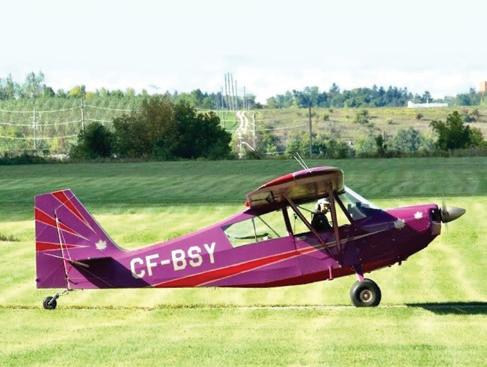
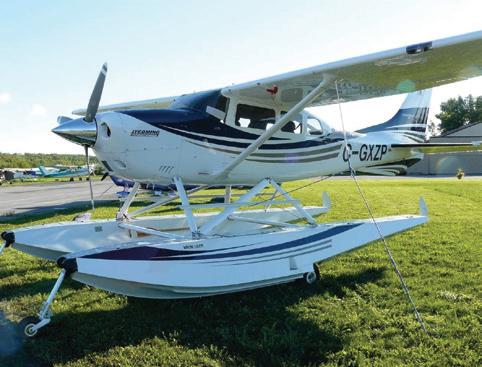

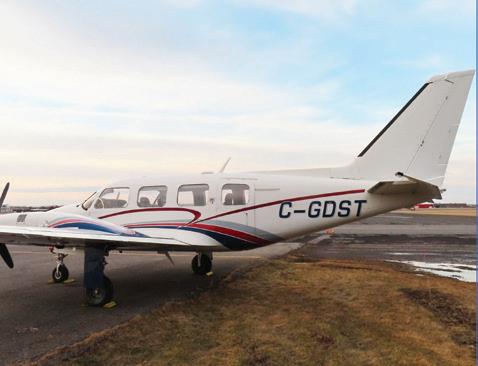



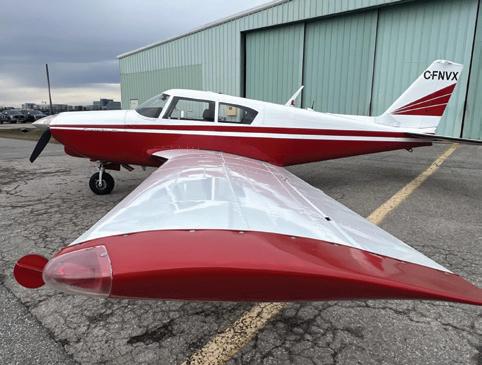
2010 PIPISTREL
SW USD $89,000
VIRUS
USD $299,500
2005 CESSNA TURBO 206H AMPHIBIAN USD $575,000 1980 BEECHCRAFT 58P
USD
2024
ELECTRO Please call for price
Please call for price 1962 PIPER COMANCHE 250 USD $89,000
USD $78,000 CANADA’S EXCLUSIVE DISTRIBUTOR FOR 226-666-2192 / sales@apexaircraft.com APEXAIRCRAFT.COM
1980 CESSNA A185F
$375,000
PIPISTREL VELIS
1976 PIPER NAVAJO
WE KNOW AIRCRAFT 1972
BELLANCA CITABRIA 7GCBC
CANADIANAVIATOR.COM 17
Corporate Flying in British Columbia
ICY AIRFRAMES, PROPS, WINGS AND RUNWAYS
Through the airport grapevine I learned that Northwood Mills, a division of Noranda Mines Ltd. of Toronto, were looking for a summer relief pilot at Prince George, British Columbia flying their Mitsubishi MU-2 DP, CF-CEL. I quickly applied for the position and was hired on July 15, 1975.
After I had taken their in-house course on the aircraft and received training on the MU-2 operations, I was introduced to the niceties of corporate flying. I learned to operate the pressurization system and the differences of flying the Garrett TPE331 turboprop engines. The MU-2 is a complex aircraft and is vastly different than an aircraft like the Piper Navajo. For instance, it has a very small wing, and the aircraft is turned not by ailerons like most other aircraft, but by spoilers on the top of each wing. The aircraft is very fast and suitable for small airports, and it handles much more like a small jet aircraft.
hang glider, which was very, very close. We did a fighter break to the right and dumped the executives and their glasses of scotch all over the ceiling of the aircraft’s cabin. I imagine that the guy in the hang glider probably, at the very least, messed his pants. Of course, the hang glider was not seen by air traffic control radar as it was made of aluminum tubes covered with something like bed sheets. I don’t want to experience being that close again. (But I was.)
I started to fly with Futura on October 6, 1975, in Aero Commander 680E (CF-SNC) on their regular ‘bag run’ from Vancouver to Calgary and sometimes to the Edmonton municipal airport. On my first flight with chief pilot Bob Jacques, we picked up so much ice near Chilliwack Lake (remember Mount Slesse) that we had to turn around and return to the Vancouver airport where our freight was loaded on to the company Learjet 25 and flown by Brady.
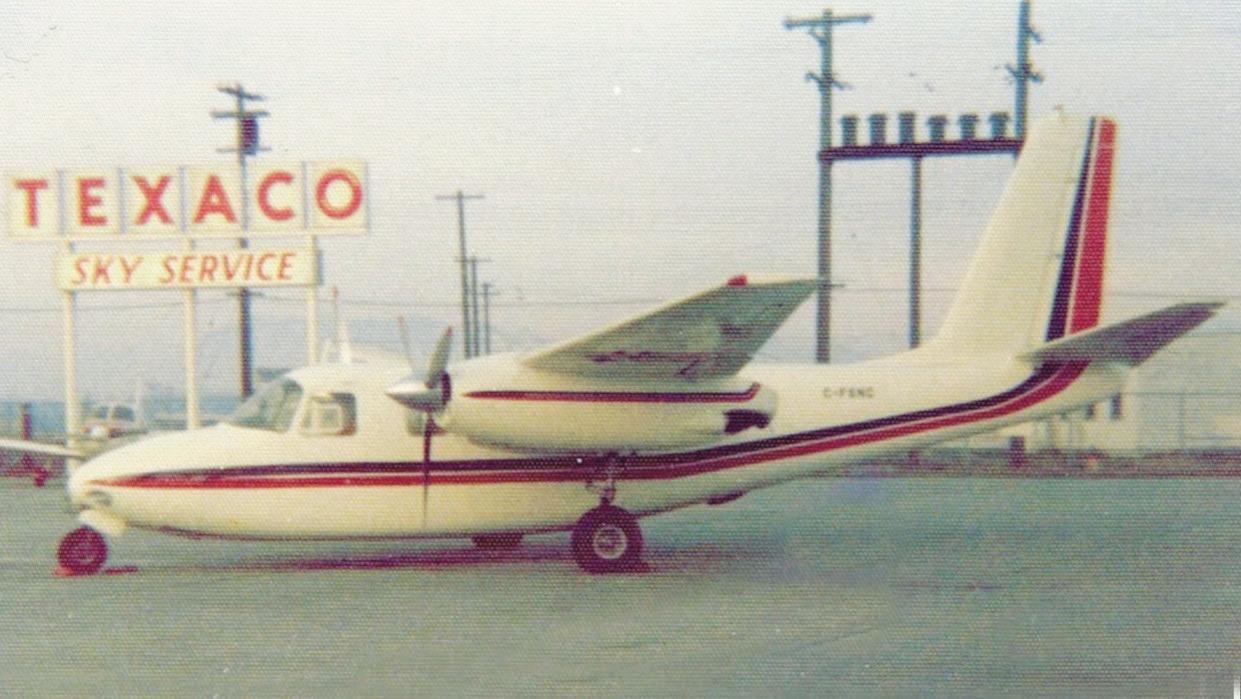
I couldn’t have asked for better people to work with. Chief pilot Red Croisdale and co-captain Don Redden were very competent and capable. ‘Red’ let me live in his basement suite and gave the odd dinner.
We flew CEL on company flights throughout western Canada and the U.S. with their executives and technical personnel. One flight that was somewhat exciting was from Prince George to Vancouver during which we were in solid cloud. As we approached Vancouver, air traffic control cleared us to descend out of 20,000 feet; we were still in cloud and were coming up over Grouse Mountain in North Vancouver. Suddenly we broke out of the cloud and right in front of us was a
As the summer progressed and I knew that the summer job would soon be finished, I started to look for work that would allow me to continue doing the type of flying that had a future and that I enjoyed. I contacted Mark Brady who operated Futura Aviation Services, located in the Innotech hangar on the north side of Vancouver airport; it was one of the former RCAF hangars belonging to 442 and 443 Auxiliary Squadrons.
Brady said that he would have an opening for a pilot shortly. In the meantime, I flew occasionally with Fred May of Tradewinds in their Navajo Chieftain (CFRLR) as well as with Dwayne Aldrich who operated a corporate Cessna 421 (C-GBLA) from the south terminal of Vancouver airport.
SNC and another Commander that Futura later acquired (CF-FJR) were marginally equipped for legal instrument flight (IFR). It had no wing or propeller de-ice nor windshield heat. In fact, its only de-icing equipment were the dual heated pitot tubes that provided information to the airspeed indicator and altimeter and carburetor heat.
With these limitations, it was up to its pilot to come up with some way of surmounting the inevitable problems of winter flying over the Coast and Rocky Mountains to Calgary and return. One temporary solution that we found for this problem was the application of a product called silicone slick spray to the propeller blades and the leading edge of the wings and tail surfaces. We found that this would, for a time, prevent the formation of ice on these surfaces and give us a little more time to climb above the area where ice would form.
We tried to climb directly out of Vancouver to about 20,000 feet after going on oxygen at 10,000 feet. This usually put us in air that was exceptionally cold, where ice didn’t usually form. We then maintained that altitude until we crossed the mountains and were on descent into
A PILOT’S LIFE LIVING THE DREAM WITH CHRIS WEICHT
PHOTOS
18 CANADIAN AVIATOR MAY/JUN 2024
Aero Commander 680E CF-SNC
SUBMITTED
Calgary. However, this way of doing things often didn’t work out, as we packed on so much ice that we couldn’t climb above it.
An example of this occurred in October 1975 with Bob Jacques and me in SNC. We were climbing out on V317 airway, and we started to pick up ice that soon became heavy. Without any warning, the aircraft’s wing stalled and the nose dropped out – we had to fight with it to maintain directional control and we were coming down fast. We were over Pitt Lake and called air traffic control and pleaded for radar vectors away from the mountains and out to the Fraser Valley. We were vectored to a landing on Vancouver’s Runway 08 and returned to our base. Upon getting out of the aircraft the amount of ice we saw remaining was unbelievable. There was close to six inches on the wings and propeller spinner.

One way we found that would help us get to our desired 22,000-foot altitude was to take off and get air traffic control to vector us westward, away from the mountains until we reached our altitude and then reverse course eastward to Calgary.
There was another problem I experienced on heading east in SNC. It was while climbing out eastward on V317 and after I had been given an altitude restriction by ATC of 14,000 feet. After levelling off as instructed, we advised ATC. A westbound Air Canada flight on the same airway was instructed to level off and maintain 16,000 feet, which he acknowledged to Centre. Shortly after, the airliner passed directly over us at what I estimated to be less than 500 feet. Not long afterward he called and said “sorry”, and that was the last I heard of it, but there were some loud and unprintable expletives being yelled in our aircraft.
At risk of boring the reader with stories of SNC adventures, I will relate the story as told to me about the pilot who took over from me when I was promoted onto another aircraft. This pilot who had a very interesting previous career was on the usual bag run in Aero
Commander SNC to Calgary and was in level flight at night near Golden, B.C. when he blundered into a thunderstorm. As I said previously, this aircraft had a bare minimum capability for instrument flight and certainly was not equipped with onboard weather radar. The pilot lost control in extreme turbulence and fell in a spin until the thunderstorm spat him out of its bottom, where he was able to recover control, but he had lost all his electrical systems including the radio. The story tells that he was able to see the highway and that gave him some means of navigation to his destination. He manoeuvred his way through the Rocky Mountains at night and sighted Calgary airport but was unable to communicate with the tower, so he observed the traffic on then-Runway 34, fitted himself between incoming flights, landed, got off the active runway and taxied to the FBO (Field Aviation). No-one knew he had arrived safe and sound until he cancelled his flight plan.
Futura Aviation’s fleet started to grow, and it acquired a Swearingen Merlin II-B, a pressurized turboprop aircraft from the British Columbia Telephone Company (a precursor of Telus). CF-TEL was an executive aircraft with comfortable seating for six passengers and a crew of two pilots.
The company was hiring more pilots to fly old SNC and I was promoted on to the Merlin, although I had no experience on the type and would fill the co-pilot position until I had acquired enough time on turboprop and pressurized aircraft to become its captain.
Bob Sansome and I were assigned to fly a charter for Bill Bennett, who was campaigning to become B.C. premier. We flew several flights for Bennett without
any difficulty. However, it was another story on November 22, 1975. Bennett had done an afternoon campaign stop in Kamloops after which we flew to Dawson Creek for his evening campaigning. We had checked the weather for the flight, and it was marginal at the Dawson Creek airport. We arrived overhead and visibility was very poor in blowing snow. We advised Bennett’s campaign manager of the situation and suggested that we land at Fort St. John, which had a better instrument landing system, but the manager was insistent that we had to land to carry out their commitment to the community.
The legal requirement for landing using the non-precision approach was to have visual sight of the ground at an altitude of 772 feet above it and have at least 1½ miles of forward visibility. The actual weather report at that time stated it was indefinite ceiling and sky obscured in blowing snow. We decided to give it a try and proceeded with the approach to Runway 24. We saw fleeting images of the terrain but certainly did not have the required visibility. The lights on the runway were barely visible and we made contact with the ice- and snow-covered runway – it had not been plowed recently. The propellers were put in full reverse and brakes applied. At this point I guess the right wheel hit a bare patch and pulled the still fast-moving Merlin off the right side of the runway and into the snowfield. Considerable power was applied, and the aircraft was brought back on the runway and to the terminal building.
Unfortunately, reporters from both Vancouver newspapers were on board and both gave the incident front-page coverage.
Later in the evening we took off and flew without incident to Fort St. John for another meeting. However, as we taxied to the terminal the tach-generator on the right engine failed, which meant that the Merlin would not be leaving until the part was replaced. So, company owner Brady flew up in the Learjet 25 and took them to Kelowna.
Swearingen Merlin CF-TEL at Dawson Creek, November 22, 1975
CANADIANAVIATOR.COM 19
Augmented GPS – What Is It?
In the previous article, unaided GPS or raw GPS approaches were reviewed. This included the LNAV approach, with and without a calculated glideslope, and an approach style using GPS for lateral navigation and barometric altimetry for vertical navigation (LNAV/VNAV). This article examines augmented GPS and how it provides a capability identical, and arguably superior to the venerable Instrument Landing System (ILS).
Wide Area Augmentation System (WAAS) improves all the necessary qualities of navigation (accuracy, integrity, availability and continuity) to be an ILS replacement. When it was first conceived 20 years ago, the hope was providing a non-precision capability (250-foot approach limits). Over time, with improvements and increasing confidence in it, WAAS has evolved to provide a precision approach capability with approach limits identical to the ILS (200 feet).
The ILS infrastructure has built-in capabilities to monitor its performance continually; the WAAS monitoring stations throughout North America perform the same role in monitoring the health of the underlying GPS satellite network. In addition, a WAAS receiver has a similar capability located on board the aircraft, not on the ground. A WAAS receiver continually monitors its lateral and vertical position; if it goes outside certain bounds an alert is provided to the pilot and an instrument approach using WAAS is not possible.
An instrument landing system has a fixed position and the aircraft position with respect to the localizer and glidepath is determined by the radio signals from these transmitters. WAAS approaches, however, are entirely mathematical creations starting with the run-
INSTRUMENTAL FACTS FLYING IFR WITH ED M c DONALD
HOW WAAS
APPROACHES Source of Canadian Civil Aeronau tical Data: © 2023 NAV CANADA A ll rights reserved CYOW-IAP-3G 0 5 10 15 20 25 (NM) CYOW-IAP-3G OTTAWA/MACDONALD-CARTIER INTL, ON RNAV (GNSS) Z RWY 32 451921N0754002WVAR 14°W CYOW ATIS – 121.15 (En) 132.95 (Fr) ARR – 135.15 TWR – 118.8 GND – 121.9 SAFE ALT 100 NM 7000 WAAS Ch 80163 W32A APCH CRS 320° MIN ALT VODUL 2000 LDA 10005 CATEGORY A B C D LPV 567 (200) ½ RVR 26 LNAV/VNAV (min. -19ºC, max. 54ºC) 654 (287) 1 RVR 50 Knotsft/minMin:Sec 70370 LNAV 760 (393) 1 RVR 50 90480 110580 130690 150800 RNAV (GNSS) Z RWY 32 CYOW EFF 24 MAR 22 EFF 24 MAR 22 EFF 10 OCT 19 Canada Air Pilot Effective 0901Z 10 AUG 2023 to 0901Z 5 OCT 2023 20 CANADIAN AVIATOR MAY/JUN 2024
IMPROVES PRECISION
way threshold position then mathematically computing positions of the localizer and glideslope. And with all these values emanating from an avionics database, the integrity of the database is crucial. When WAAS approaches are created, a Cyclical Redundancy Check (CRC) is used to verify that the numerical values used by the avionics are identical to the numerical values used in the procedure design.
A pilot gets a small insight to this with the WAAS channel found on the approach plate and when drawing the procedure from the database when loading the approach into the receiver. This is the WAAS channel shown on the approach plate.
Flying a WAAS approach is almost identical to flying an ILS. Like an ILS where one confirms that a valid ILS signal is being received (no flags, identification of the frequency, etc.), in the case of a WAAS/LPV approach the pilot must ensure that LPV annunciation appears
on the navigation display meaning that all the navigation requirements of the receiver are satisfied.
Since the WAAS signal is space-based, it is not subject to the challenges of the ground-based navigation such as scalloping of the glideslope, vehicle or aircraft interference of the localizer, or other issues. The ride on an LPV approach is perfectly smooth and uniform.
Older ILS installations provided a back-course approach to the opposite end of the runway; modern ILS installations no longer offer this. And like the localizer-only approach of yesteryear, WAAS does offer a similar approach known as LP (Lateral Procedure Only). This type of approach is used in unique situations where a vertically guided LPV is not possible. This could be when the final approach course exceeds a three-degree offset from the runway axis, the vertical path is too steep or other rare situations, typically found in the
mountains. In this case, the approach is a much more accurate two-dimensional approach and is flown identically to the LNAV approach described earlier.
A common question is, why are some WAAS/LPV approaches to 250-foot approach limits and others to 200-foot limits? In general, this is due to the runway classification — a non-precision runway allows approaches to as low as 250 feet while a precision runway (often associated with an ILS to the same runway) allows for 200-foot minimums. The obstacle clearance, protected area and approach lighting requirements of the precision runway are more rigorous than the non-precision runway; for most community airports, the incremental cost to achieve a precision runway standard is not worth the incremental 50-foot gain in approach limits.
In the next article we will discuss the Required Navigation Performance (RNP) style of instrument approach.

LEARN TO OPERATE IN THE AVIATION INDUSTY AVIATION MANAGEMENT AND OPERATIONS
Prepare for success in this dynamic industry while gaining hands-on knowledge and skills across aviation management, airline operations, data analytics, security, and more. Discover endless opportunities for growth and advancement as you embark on your aviation journey.
Learn more at bcit.ca/airportops
CANADIANAVIATOR.COM 21
Can an ATC Job be Stressful?
IT’S ALL RELATIVE — BUT STILL REWARDING
Like many of my current coworkers, I attended an Air Traffic Control recruitment seminar hosted by Transport Canada in the 1990s. At the time, the country’s Air Navigation System (ANS) was run by Transport Canada who was, and still is, the regulator for all things aviation in Canada.
The host, a gentleman of about 60 years of age, completed the presentation part of the forum and opened himself up to the floor for questions. A young lady in the front row asked the inevitable, yet valid, question: “Is ATC stressful?” His wrinkled face wrinkled just a little more as he searched for an answer. Eventually, he said, “Well, I’m 28 years old.”
The job of an air traffic controller is generally considered to be one of the more stressful jobs out there. You won’t get an argument out of me.
Different people respond to different stressors differently. A friend of mine is a former RCMP officer. I had the eye-opening experience in the distant past of doing a ride-along with him. At the time, someone from the general public, with prior permission, could spend all or part of a shift with an RCMP officer. I was floored by what he had to do that evening. I would never be able to handle it, yet he seemed to handle it easily, taking everything in stride. I’ve known him for years and he just adapted to it all. I don’t have to be a doctor to know that I’m not suited for that job either. People asking for help, but then not taking the advice, would eat at me. Having to deliver bad news to a patient or the relatives left behind would be a tough ask, and I believe it would leave me hollow. Others seem to handle it well.
The stresses that many other professions would present wouldn’t be kind to me, either.
But this one, I like. I’m interested in aviation, but don’t want to fly for a living. This career keeps me current in the industry, just in a different sense. I get to learn a number of things that cater to my interests, and even if I’ll never directly use them, they help me in my duties.
But there is stress. Seeing converging aircraft and having to try to make the best choices for everyone involved to accommodate safety and efficiency all while keeping a sense of order in the skies can be a challenge, especially with rapidly-changing, potentially dire circumstances like severe weather.
The unusual situations presented can leave you thinking deeply to the point of distraction. Be in air traffic control long enough and you’ll see some interesting things develop.
For example, over 25 years ago I was the last controller to talk to a pilot before the plane he was flying crashed. I sat in wonder for hours. Did I say something that misled the pilot into taking a course of action that proved to be unsafe? Could I have seen the situation developing and said something to prevent it from happening in the first place, but failed to see it? Did my actions (or inactions) contribute to the outcome in a way I should have seen?
News eventually broke. Fortunately, though there were some injuries, everyone survived. I was also found to have done nothing wrong in terms of my actions taken or the words I spoke. Still, that incident left an impression on me that is still as fresh
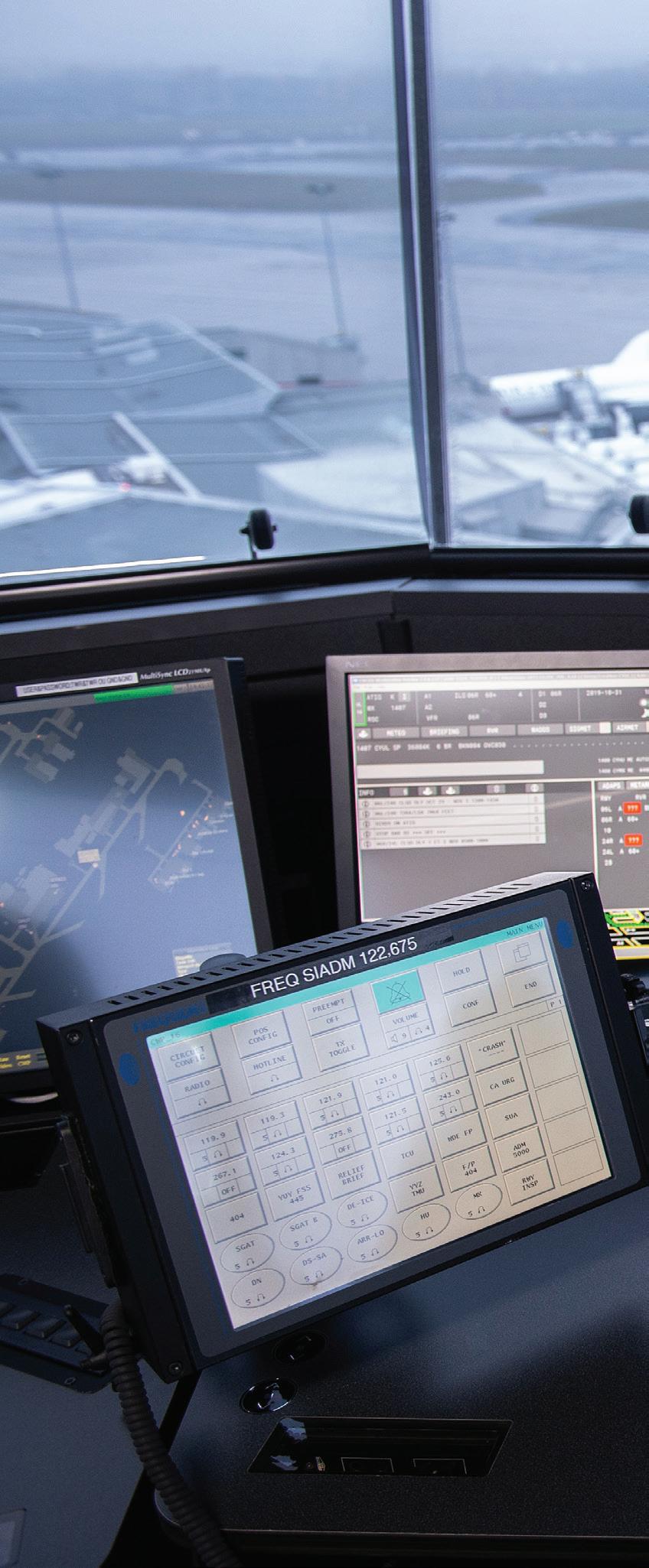
today as it was that night.
Then there is the vast number of situations over my more-than-30 years that I have witnessed and participated in when I fed pilots information, hoping to help them make better decisions. More often than not, they took the advice or information and chose differently, but sometimes they didn’t. When they don’t, it leaves one sitting and waiting to see what will happen in the end, all
VECTORS
ATC
VIEWPOINT WITH MICHAEL OXNER
22 CANADIAN AVIATOR MAY/JUN 2024

while still trying to keep up with the rest of the traffic in one’s airspace.
Does this sound like I’m trying to dissuade you from looking into becoming an air traffic controller? I hope not.
The ATC system is always looking for good people. Nav Canada, the nation’s ANS provider, has a website that opens the door to ATC recruitment. There is a process to go through, and it
will take some time since there is only so much capacity for training, but if you manage to get through, the career can be a rewarding one.
The pay is good. The hours in many facilities include work on weekends, evenings, holidays, and overnights. For some people like me, that works. It can be hard on family life but, overall, I prefer the variety of shifts.
It can be stressful, yes, but in my
view, the stressors involved are different for this job compared to others.
If you’re looking for a new path, you may want to explore ATC as an option. Start by checking out Nav Canada and the recruitment links on the website (Careers). It’s a lot of work, with a lot of information to absorb, but it’s a career like no other, even with the commonalities it may share with some others.
CANADIANAVIATOR.COM 23
Nav Canada uses advanced, state-of-the-art technology to manage air traffic.
NAV CANADA
The Perils of Transitioning
SWITCHING AIRCRAFT TYPES, OR EVEN AVIONICS, HAS ITS RISKS
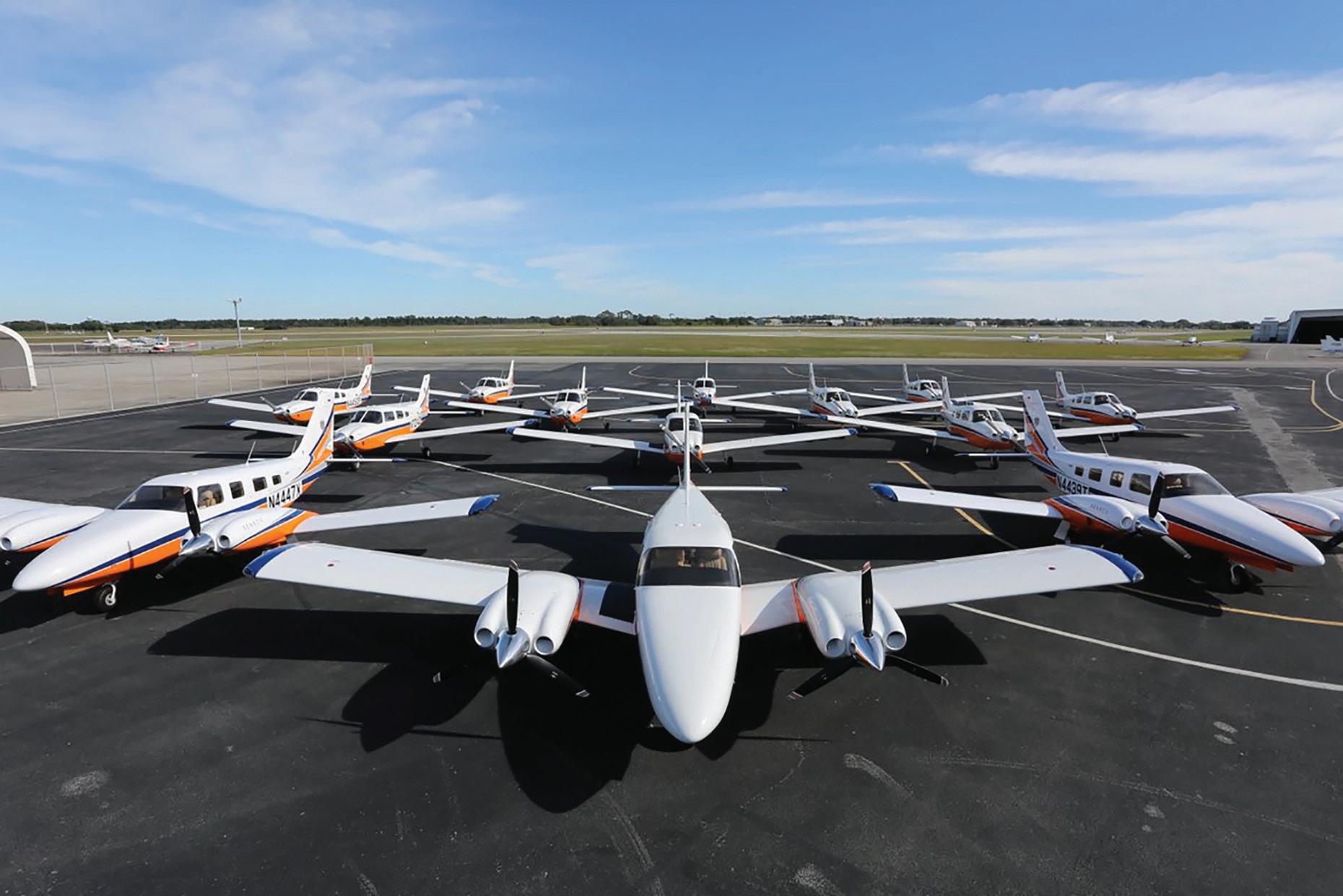
The thrill of taming a new aircraft type is unparalleled. However, navigating the transition smoothly requires a healthy dose of respect for the unfamiliar and a little help from a qualified mentor.
Airport hangars are filled with stories of aircraft transition experiences going sideways. Unfortunately, so are accident files. Statistically, the first 50 to 100 hours in a new aircraft type are particularly dangerous. That explains why some insurance companies require that new aircraft owners or renters fly with an approved instructor for a minimum number of hours before going solo.
Traditionally, transition training focuses on the numbers and aircraft
systems. But there is more to a successful transition than mastering technical data. Switching aircraft means changing operating patterns, visual and audio clues, and mindset.
Mastering the technical data is a matter of studying the pilot manual. That is where we find everything the aircraft manufacturer decided to share with aircraft operators. Remember the 737 Max fiasco? Boeing chose to keep information about the troublesome MCAS system out of the pilot manuals. In addition, it did not install a yoke kill switch designed to stop runaway trims like most B737s have to ensure the Max’s MCAS could operate unchallenged. The devil is in the details. Nothing is
truer than when it comes to manuals. They are full of “by-the-way”small notes that might make the difference between a safe flight and an accident. Be especially wary of hard-to-spot differences between aircraft models. It is easy to make assumptions when aircraft are visually similar. This advice applies to different versions of avionics software as well.
Studying the manual also allows pilots to get into the manufacturer’s mind and form an intimate relationship with the aircraft’s spirit. Each aircraft is designed to respond to a need and provide an experience. Engineers come up with different approaches to meet the stated goal. Understanding their philosophy
RIGHT SEAT ALWAYS LEARNING WITH MIREILLE GOYER
24 CANADIAN AVIATOR MAY/JUN 2024
Switching from one single-engine type to another, or a twin-engine model to another, needs well-planned-out transition training, even if the aircraft are from the same manufacturer.
PIPER AIRCRAFT
facilitates the transition because procedures make sense.
For example, an aircraft designed for bush flying is usually more manoeuvrable than an aircraft intended for IFR operations, where stable flight lowers the pilot workload. Both might hold certifications for additional types of operations but will be easier to manage in their primary role.
Nothing beats a series of stability exercises to understand an aircraft’s inherent behavior.
aircraft or to adjust to the wings getting in the way when switching between high- and low-wing aircraft. What pilot has not found him- or herself unconsciously matching the ‘slow’ landing speed when driving a motor vehicle after a flight?
“What pilot has not found him- or herself unconsciously matching the ‘slow’ landing speed when driving a motor vehicle after a flight?”
Explore and record the performance output (speed and altitude change rate) for various pitch/power/trim inputs. Try different bank angles and observe the resulting responses (resistance to roll, steady, increasing roll) to determine the bank angles to avoid when things get busy. After becoming comfortable with the normal behaviour, it is time to test the edge of the envelope with slow flight, stalls and emergencies.
Mastering avionic operation from one aircraft to the other has become one of the transition process’s most time-consuming and tedious phases, especially in general aviation, where fleet standardization is rarely an option. Manuals for modern navigation systems are often much thicker than their aircraft counterparts. While many standalone avionic simulators are available, they rarely allow pilots to experience how the various avionic units installed interact with each other during normal operations and under different failure modes.
Becoming familiar with the textbook differences on the ground is the first step. Flying the new aircraft is next, to learn physical and sensory differences. There is no substitute for actual exposure.
A good simulator can help get pilots accustomed to how and where to reach. Still, it cannot fully prepare pilots to approach the runway at twice the previous aircraft’s speed and vice versa when switching between high- and low-speed
Unconsciously reverting to old habits when under stress or distracted can be as much a source of errors as insufficient knowledge when transitioning between aircraft. For example, many fuel exhaustion incidents started with the pilot switching fuel tanks to OFF on a new plane. Early in the transition process, checking and re-checking is a wise and healthy habit. A humble mindset is essential.
Extreme caution and humility are mandatory when no regulatory or insurance requirements impose training. Whether transition training is mandated or not, hiring a good instructor will be well worth the investment. He or she can help ensure that nothing is overlooked and pinpoint the key differences to reduce the transition time to full enjoyment.
The trick might be to locate a qualified instructor for the transition. Insurance companies often keep a list of approved instructors or flight training units for aircraft transitions requiring training. If that is not available, look for an instructor with at least 100 hours of experience with the type and equipment you are taking on. Avoid a situation where the blind is leading the blind; it will save you money. More importantly, the right mentor will make the transition fun and safe.
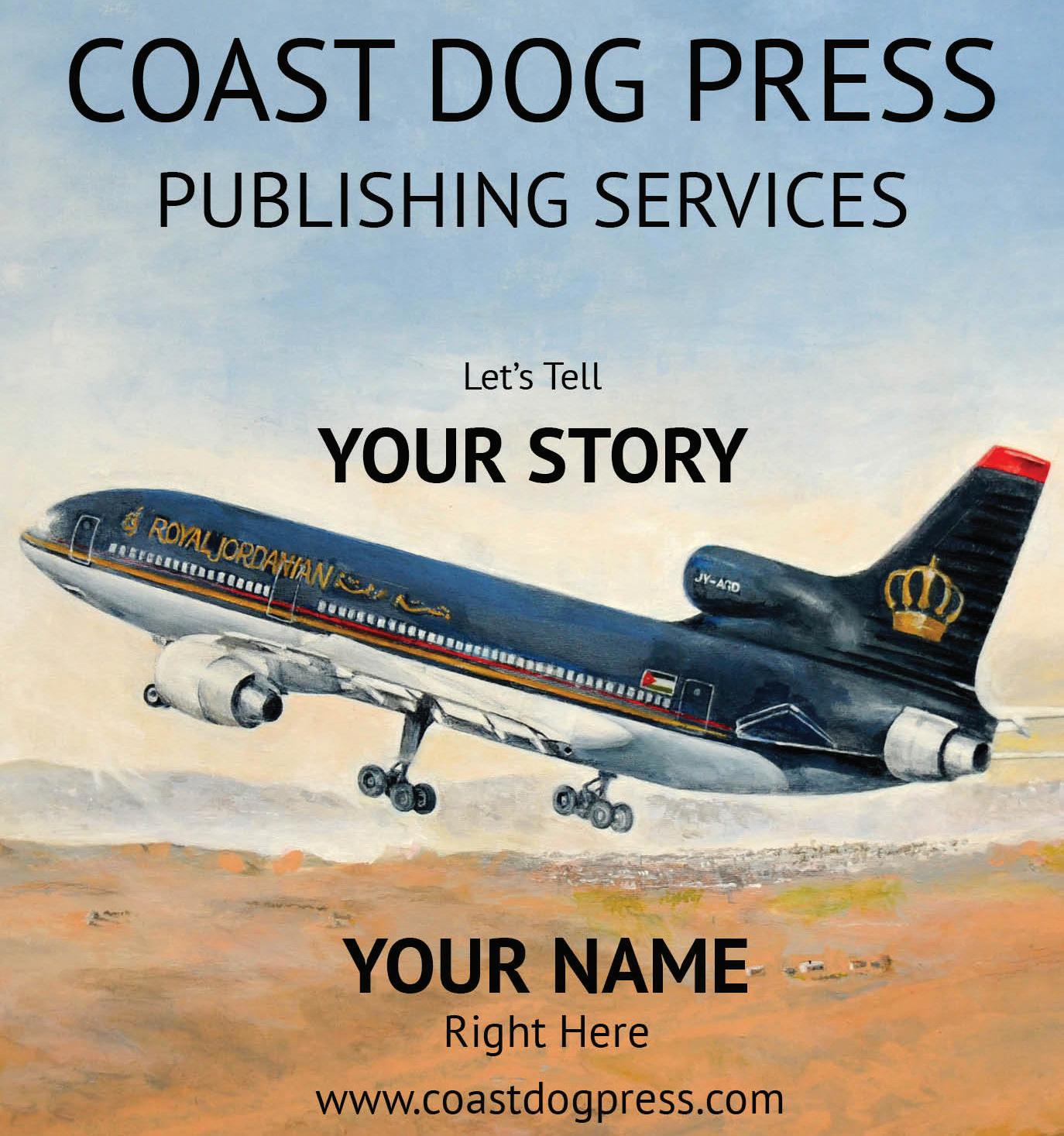
CANADIANAVIATOR.COM 25
Runway Condition Reports Decoded
AND WHY THEY MIGHT CONTAIN VITAL INFORMATION

It’s not often that one sees a passenger jet aquaplaning off a runway at breakneck speed in the same way that one might see a race car doing the same when its tires can no longer grip a soaking racetrack surface. Yet just such a scene made the YouTube hit parade early in 2024 when a Lithuanian Airbus A320, arriving at its destination of Vilnius, put on a spectacular display of loss of control that was recorded on camera for posterity. Thankfully, the episode ended with the pilots making a miraculous recovery to regain control of their sliding hunk of metal. Nevertheless, for one scary moment, the aircraft was heading inexorably for the heavily mucky sidelines, well away from the trajectory that aeroplanes usually follow when they
reconnect with the Earth.
Pilot skill, or sheer luck, may have both played a part in saving this aircraft’s day. No doubt, the 185 bewildered passengers on board were just happy to disembark with nothing worse than underwear as dirty as the filthily mud-spewed fuselage that the crew eventually brought to its designated arrival gate. This incident, of course, could have been worse.
The amount of spray consuming the aircraft upon touchdown was evidence that their arrival runway had turned itself into a canal. It’s for just such situations that runway condition reports are published: to provide
“Runways in Canada are, on average, wet or contaminated onethird of the time during the five coldest months of the year.”
cockpit crews with an awareness of pending states-of-play, thereby giving them the chance to avoid as close a call as experienced by the cockpit crew of the Avion Express flight into Lithuania’s capital city. Runways in Canada are, on average, wet or contaminated one-third of the time during the five coldest months of the year. That contamination — be it from water, slush, snow or ice — will degrade braking and substantially increase landing roll distances. Contaminated runways can make directional control difficult in crosswinds while also potentially leading to aquaplaning
PHOTO COURTESY VALEN (U/RARE-CELLIST5361) VIA REDDIT PEP TALK AIRMANSHIP WITH GRAEME PEPPLER
An Avion Express Airbus A320 slid off the runway while landing at Vilnius airport in Lithuania on February 24, 2024.
26 CANADIAN AVIATOR MAY/JUN 2024
when the pilot stands on the brakes. Runway surface condition (RSC) reports are, therefore, issued to advise pilots of prevailing runway conditions. Included in RSC reports is information on the braking action required by crews, and this information is indexed, in Canada, into a Canadian Runway Friction Index (CRFI) that is available for various runways in the nation.
Where available, these index readings are included as part of RSC reports which are transmitted as a special type of NOTAM known as an RSC NOTAM. The latter incorporates standardized safety information based on criteria established by the International Civil Aviation Organization (ICAO). RSC NOTAMs are available from air traffic services, from flight information centres (FIC) and via Nav Canada’s Collaborative Flight Planning Services (CFPS) website. The breadth of information available in RSC NOTAMs can be substantial to the point of it seeming like overkill. But their content is of this nature for good reason; aeroplanes are designed to fly, less so to drive. A car has four contact patches; an aeroplane has three. Therefore, while an automobile can better cope with a dodgy surface, in an aeroplane you need all the information you can get to manage the state of your terrestrial playing field.
An RSC NOTAM goes into such depth that it divides a runway into thirds. Thus, rather than giving an average of conditions across a runway’s length, it provides specific details of the conditions for three segments of the runway. For example, if the touchdown zone of a runway has water, but the middle third has slush, then the RSC NOTAM contains this information. In so doing, it enhances situational awareness for the pilot whose captaincy of a flight, it must never be forgotten, isn’t complete until the aeroplane is parked, and the key is
pulled from the ignition.
A maximum of two descriptors can be reported in an RSC NOTAM, either per runway third or for the full runway length. Rare though it could be, if more than two runway surface descriptors are present on a runway third, the two most prevalent conditions are reported. The descriptors are reported with the associated percentage of coverage. When pertinent, the associated depth in inches is given as well. Examples of RSC descriptors include such common conditions as “wet,” “ice,” “slush” and “standing water.” They can also offer greater detail, such as “dry snow on top of compacted snow,” “slush on top of ice,” “wet snow on top of ice” and “water on top of compacted snow.”
Runways that are reported in thirds can include a Runway Condition Code (RWYCC) which is a single-digit value that identifies a runway third’s degree of slipperiness. RWYCC values range from 0 to 6, with 0 representing the most slippery and 6 representing a dry runway. While some aerodromes will report runway conditions in thirds, (including RWYCC values), others will not. Aerodrome operators determine the necessity for the degree of reporting based on the type of operations taking place. Pilots can expect that longer runways will be reported in thirds, while shorter ones will be reported by full runway length.
What type of information may have been available to the cockpit crew of the Lithuanian Airbus is not evident. But it’s certain that they could have benefitted from the data available within an RSC NOTAM (or any Lithuanian equivalent). Their handling of their loss of directional control was, nevertheless, heroic. Thankfully, what came of this incident wasn’t the wreckage of a smouldering aircraft; it was simply a grime and filthy mess that needed a major wash and re-polish.


CANADIANAVIATOR.COM
Get great article suggestions and post alerts when new issues become available. DO YOU FOLLOW US ON INSTAGRAM?
CANADIANAVIATOR.COM 27
The Quintessential Canadian Aviator
JOACHIM (JOE) HESSBERGER, 1947-2024

Joe and I worked and flew together and were fast friends for over 30 years, and his life story reads like a fictional novel. He was one of the most amazing self-made men that I had ever met. He was an ardent Canadian and described himself as “a Canadian in every respect.” He also believed, in his own words, that “Any task, however menial, done with finesse, is always better and will never require an apology.”
Joe was an example of how a sense of determination, hard work, integrity, a passion for aviation, and some luck, guided a young immigrant boy from humble beginnings to become the quintessential Canadian aviator and a leader on both the Canadian and
international aviation stage.
Joe grew up as a kid playing in the rubble of post-Second World War Germany. He described himself as a “water rat” who, as a boy, loved playing on the nearby River Main. Boats and the water were his other passions that later in life led him to own several sailboats, one of which he and his wife sailed across the Indian Ocean.
As a teenager who didn’t speak English, Joe arrived in Toronto in July of 1966 with 50 dollars in his pocket. His early life in Canada was filled with many hardships. Being almost penniless he slept in an Alberta barn in the dead of winter. He worked at various manual labour jobs, including being a farmhand,
a chicken-plucker and many other bottom-of-the-rung jobs. It was during this time that he made two life-changing discoveries. In 1968 he developed a passion for aviation and obtained his private pilot licence in Toronto in 1969. During this time, he worked for a while as an apprentice AME at the Toronto Island Airport. In 1970 he met a young woman from Guyana, Claudette, who became his wife of over 53 years.
Joe started his commercial pilot licence in the Toronto area and, to build time, he purchased a 1946 Luscombe Silvaire. In 1972 the couple moved west to Manitoba where Joe finished his commercial licence. His first flying job was flying fish and groceries in a
COLE’S NOTES CAREER HIGHLIGHTS WITH W.T. (TIM) COLE
28 CANADIAN AVIATOR MAY/JUN 2024
Joe and his wife Claudette pose with their Piper Tri-Pacer at Langley Regional Airport in British Columbia. PHOTOS: COLE COLLECTION
Norseman for Moose Nose Airways of Ilford, Manitoba. For the next five years Joe flew a large variety of airplanes on wheels, floats and skis for many operators, primarily in northern Manitoba, Ontario, Alberta, the Yukon, Nunavut and the Northwest Territories. He obtained his instrument rating and airline transport licence and moved up to fly the DC-3 and Twin Otter for Lamb Air and Ken Borek Air. As he moved up to these larger airplanes he also moved further north and spent much of his time in the High Arctic based in northern communities, including Inuvik and Resolute Bay. All this flying necessitated much time away from home and it was always Claudette who kept the home fires burning.
Joe’s lifetime of aviation stories and experiences are too numerous to be told here in this short magazine article. Joe’s bush flying, Arctic stories and subsequent worldwide helicopter adventures are told in his memoir Arctic Bananas.
Joe’s aviation interests turned to helicopters and the family moved to Calgary, where he completed helicopter training in the winter of 1977-78. Once more Joe was starting off at the bottom of the aviation pecking order. His first helicopter job was in a tent camp in northern Saskatchewan flying a floatequipped Bell 47. He was checked out on many types of helicopters including the Hughes 500 and the Bell 206 Jet Ranger. He eventually went on to specialize on the Bell 212 and Sikorsky S-76 twin-engine helicopters. Calgary’s Bow Helicopters recruited him for Arctic work in the Beaufort Sea oil exploration operations on a Bell 212. When Bow was bought out by Okanagan Helicopters, the family moved to the Vancouver area and Joe’s new international career began. India, Thailand, the Philippines, Saudi Arabia, the United Arab Emirates, Africa and Central America became Joe’s work environment for the next 10 years, in addition to assignments throughout Canada, including the High Arctic. Joe spent constant tours of duty all over the world, servicing the offshore oil industry, fighting forest fires, working in the logging industry,
working in mineral exploration, assisting in scientific research projects and, of course, carrying out helicopter medevac duties.
In 1989 Joe joined Transport Canada as a Civil Aviation Inspector based in Vancouver. He worked in Air Carrier, System Safety and Enforcement Divisions. His vast operational experience, his common-sense approach to issues and his natural leadership qualities placed him a notch above the rest as a safety expert and regulator. In these positions Joe received administrative and regulatory training that was to add to his already impressive credentials. This training would stand him in good stead in his future endeavours. While working for Transport Canada, his employment didn’t require extensive travelling away from home and he was finally able to devote more time to his family.
for Vancouver’s Helijet Airways. He also accepted two short-term ICAO assignments, one for 13 months in the Philippines and then Joe spent several months in India.
During “retirement” Joe bought two hangars, one in Chilliwack, B.C. and later another one in Langley. Of course, you can’t have an empty hangar, so there were also three private aircraft.
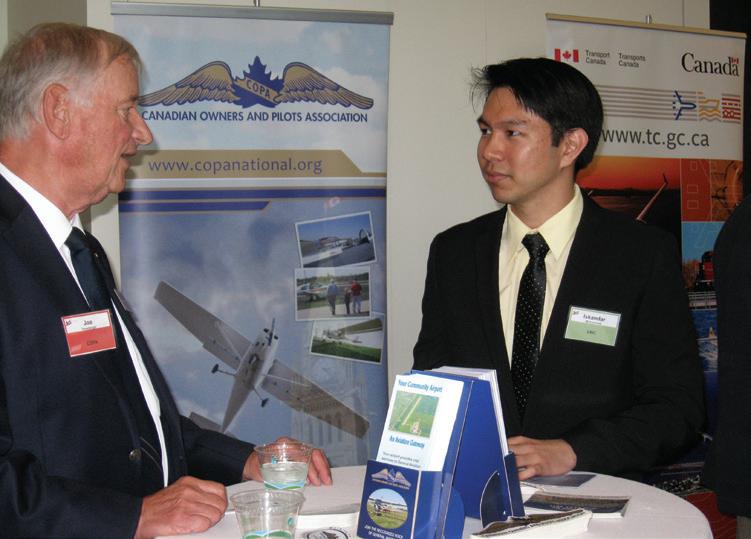
“[Joe] is a shining example for young and upcoming aviators who wish to carve out a career in aviation.”
After almost nine years with the Canadian government, Joe returned to the helicopter industry, joining Alpine Helicopters of Kelowna and completing two contracts with a Bell 212. One was in support to the German military who were training at the Shilo, Manitoba gunnery range and the other was a United Nations peacekeeping mission in Guatemala. It was during this latter contract that he was offered a position with the International Civil Aviation Organization (ICAO). Joe accepted and was posted to the United Arab Emirates, where he was employed for the next seven years. In 2005, Joe and Claudette returned to Canada to retire. But not really. For a while Joe worked as a medevac pilot on a Sikorsky S-76
First a Cessna Cardinal, then a Cessna 150 and finally a pristine little Piper Tri-Pacer. Joe also became a director for B.C. and the Yukon for the Canadian Owners and Pilots Association and, in this capacity, he became a very active volunteer at many of B.C.’s flying clubs. He was also travelling and flying his airplanes to meetings all over B.C. and as far away as Prince Edward Island. During his time as a COPA director, he participated in many COPA for Kids events and introduced many children to their first airplane adventure.
What a legacy and impact Joe Hessberger has made in so many facets of the aviation industry in Canada and the world. He is a shining example for young and upcoming aviators who wish to carve out a career in aviation. He was a man of strong beliefs and integrity. He loved to cook, to socialize and had a great sense of humour. Joe passed away in Langley in March 2024 at the age of 76. He touched so many lives in his lifetime and he will be missed by his family and many friends all over the world.
Joe, may you fly west on your next adventure. I wish you the old bush pilot’s blessing: May you have tight floats and tailwinds.
CANADIANAVIATOR.COM 29
Joe took his responsibilities as a COPA Director very seriously, mentoring young people at every opportunity.

VICTORY FLIGHT
HONOURING THE RCAF AND ITS 100TH ANNIVERSARY WITH THREE TIMELESS CLASSICS.
BY DAVE HADFIELD
PATRICK CARDINAL 30 CANADIAN AVIATOR MAY/JUN 2024
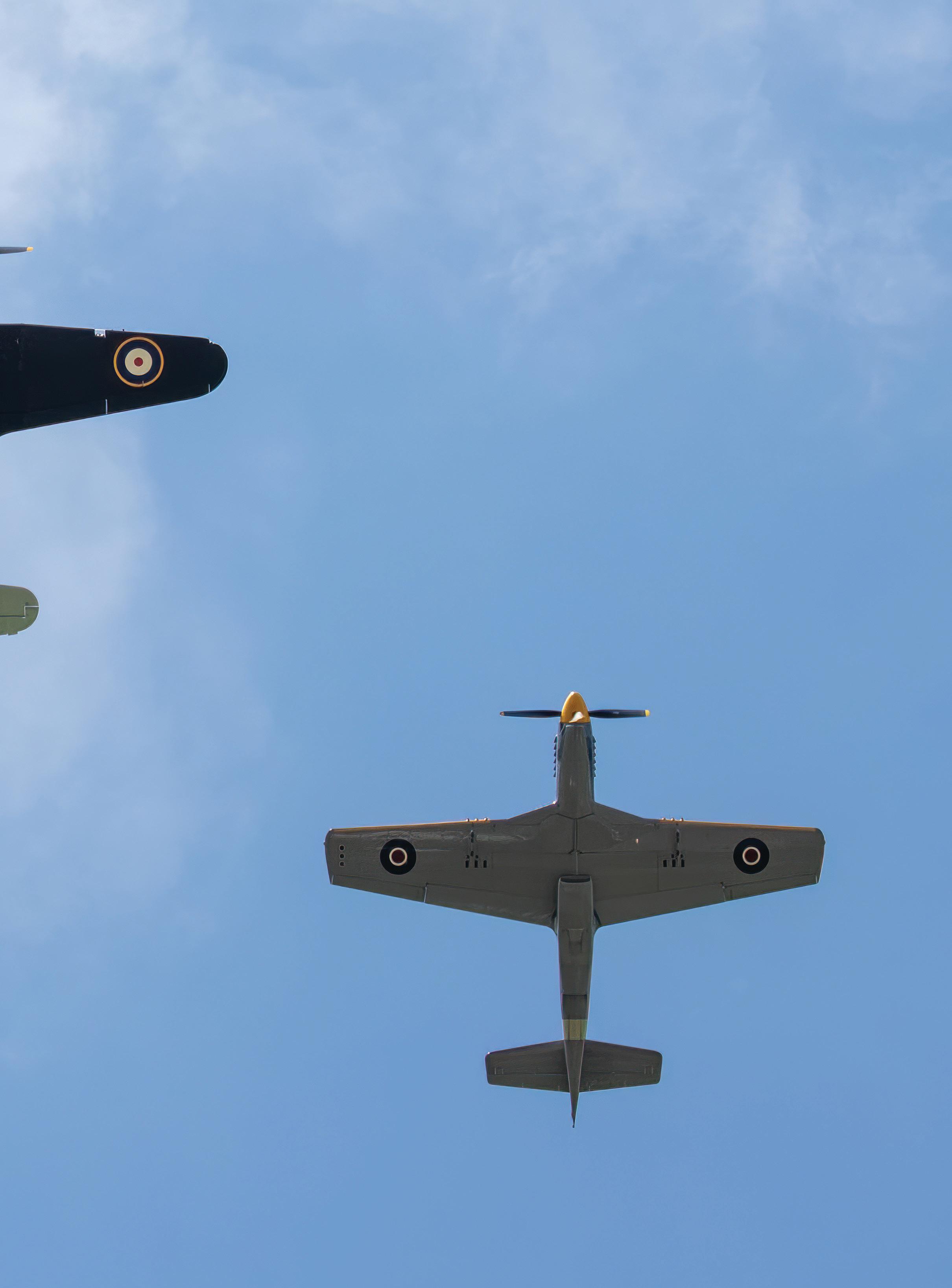
Ifire up my computer in the morning and see a dream email: “Dave, please sign up another pilot for the fighters for next season, and you have my support to form and train a three-ship formation team with the Spitfire, Hurricane and Mustang. Choose someone good!”
I’m chief pilot of the Mike Potter Aircraft Collection, at Gatineau, Quebec. The email is from Mike himself. He’s flown all these fighters, but has decided to concentrate on the Beaver, the Extra and solo-IFR in his Piper M600. The 100th birthday of the RCAF is coming up. We want to honour that tradition, but a formation team is a big commitment. Interesting challenge! Every pilot wants to fly one of these iconic, historic aircraft. If I put out a ‘Hiring Notice’ I’d get swamped. Not doing that…
CANADIANAVIATOR.COM 31
So, who will be flying what? Joe Cosmano has the most Hurricane time, so I’ll leave him on that. As for me, I’d prefer the Spitfire — looks like I need a Mustang pilot.
Warbird pilots are a small community in Canada. I make a list of those who have flown prop fighters and live within 500 miles. Who is type-rated on what? How current? How busy? Should I pick one who already has experience, or train someone new? What formation-time do they have? Taildragger time? Commercial licence? Are they cheerful, pleasant and fun to work with?
Fortunately, there is a ‘pot of gold’: The Canadian Harvard Aerobatic Team has recently disbanded — four great guys with huge amounts of big-snarly-engine time. Perfect. One stands out because he recently sold his personal business and could volunteer: Dave Hewitt. He has 2,000 hours flying 10 feet away from Pete Spence’s big yellow bird while making the sky go around and around. I call, “Hey Dave, would you like to come fly the Mustang with us?” His response is a terse, “Sure, glad to help.” Very calm. (But after he hangs up, I suspect he’s doing handstands in his kitchen.)
The Mustang should be a straightforward transition for Dave because it’s another North American Aviation product and flies like a Harvard on steroids — only
better. Then Dave surprises me. Off he goes to Florida and gets a checkout at the Stallion 51 school. I hadn’t asked him to do that. But he flies with instructor Marco Rusconi and punches in the time. In just two days he is recommended for the type rating.
At our recurrent training ground school, we sit him down and grill him on their Mustang flying. It’s great to get the latest gen. What power settings do they use for Merlin longevity? Stall training? How does our checklist match up to theirs? Gotchas? His answers make excellent cross-reference training.
Spring arrives and up we go in the Harvard. It was The Pilot Maker way back when, and we still use it that way. Everybody gets the rust removed, including me. Loops and rolls. Lots of wing-dropping stalls. Rudder, rudder, rudder ... the feet wake up. Practice-forced-landings over the airfield right to touchdown. Check-rides.
Next, post-maintenance test flights. I take the Spitfire up and stay overhead the field (within gliding distance) for a short flight. Electrical system problem. Land, hand the aeroplane back, change brains overnight to fly the Mustang: one mag is running rough in flight. Paul Tremblay’s Vintech team digs in. They’re terrific and highly experienced in Merlin operations, very connected to a larger warbird community.
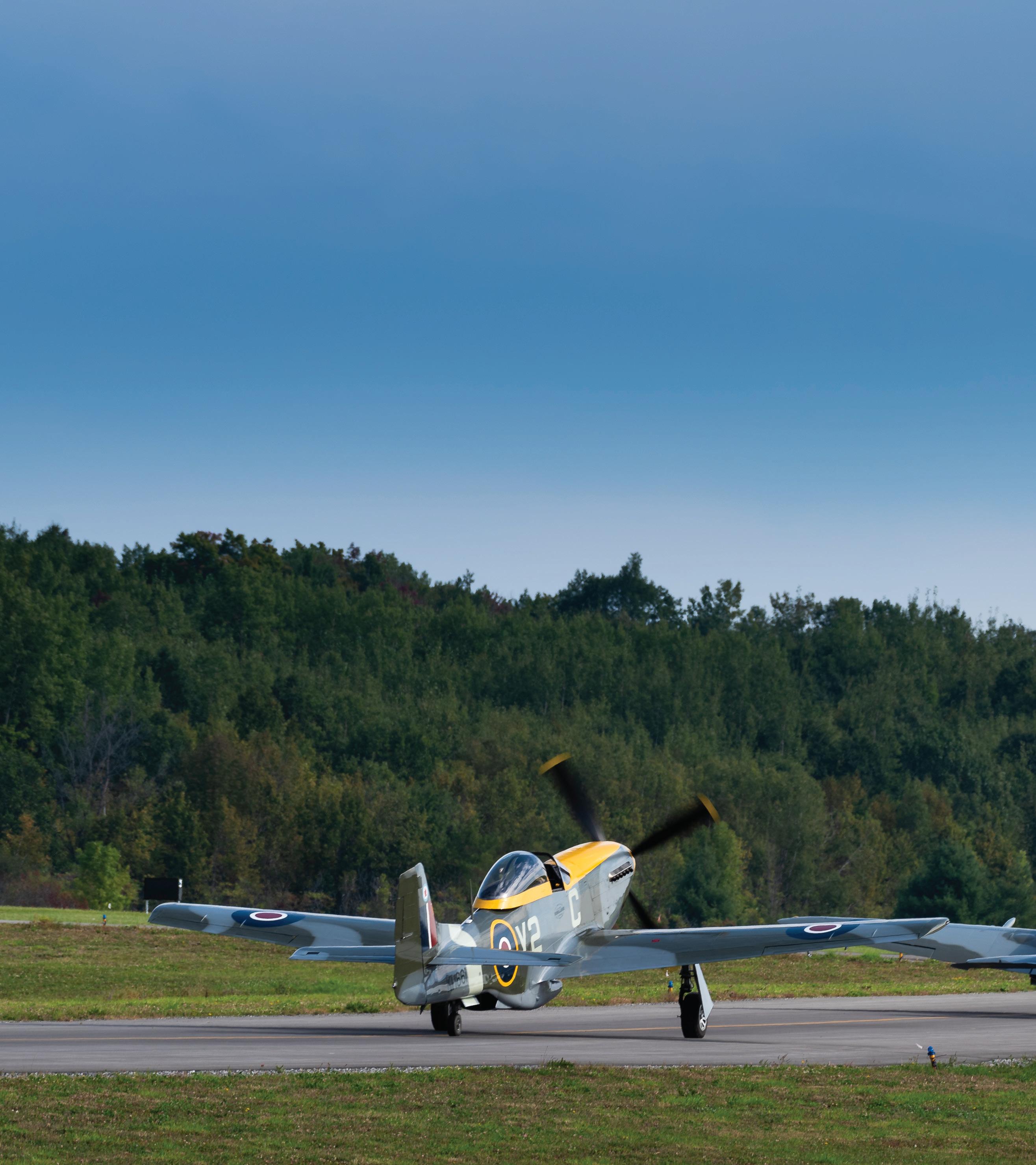
32 CANADIAN AVIATOR MAY/JUN 2024
PETER HANDLEY
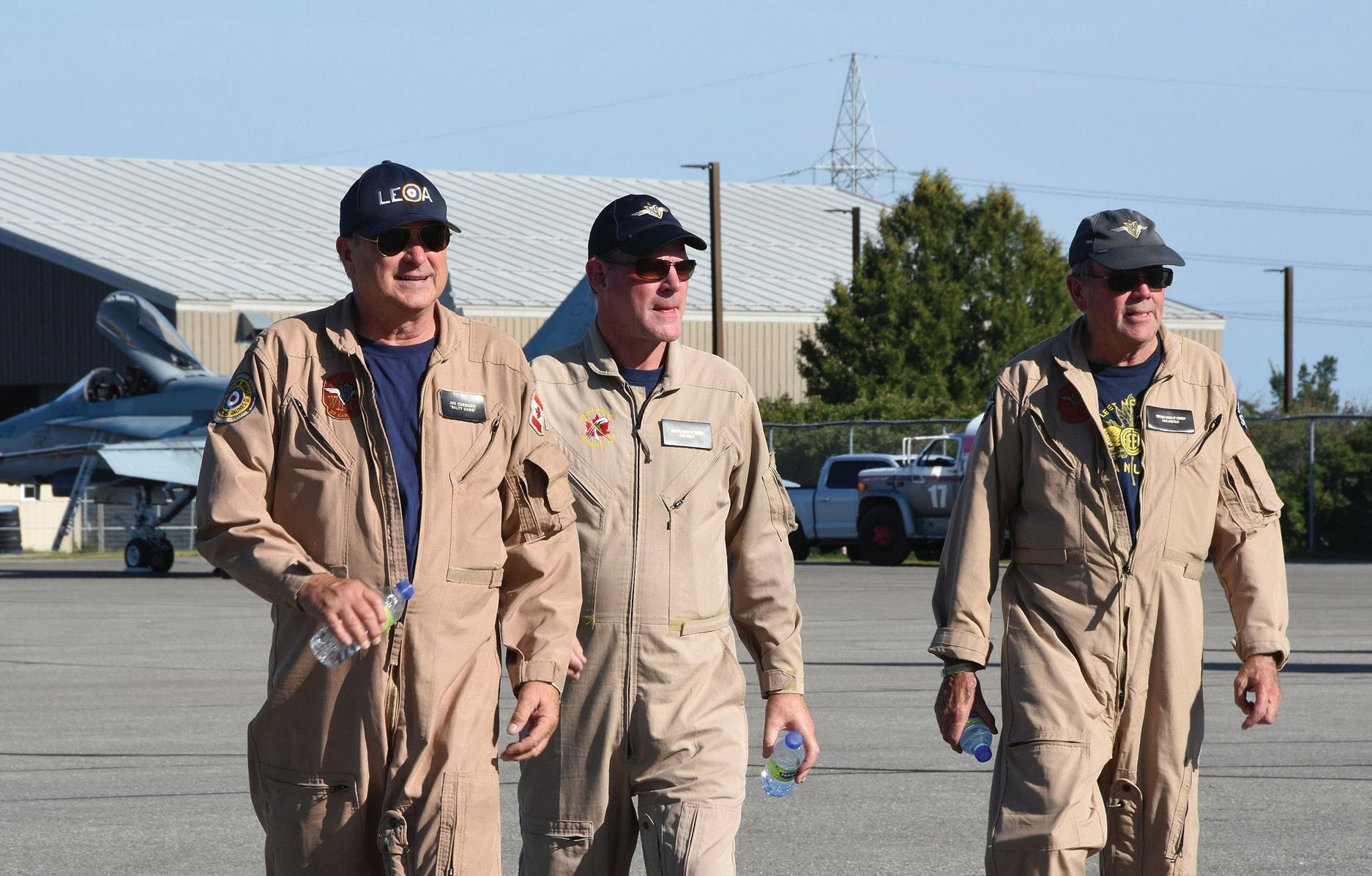
 PIERRE LAPPRAND
PIERRE LAPPRAND
CANADIANAVIATOR.COM 33
(L to R) Hurricane pilot Joe Cosmano, P-51 pilot Dave Hewitt and Spitfire pilot Dave Hadfield.

One by one the snags get cleared. It’s a normal process — Second World War fighters are complicated. Ground-tests are fine but only flying counts. I pass the Mustang to Dave and he solos it — happy new guy!
The whole point of this effort is to fly the fighters in formation. It’s hard to arrange. We need good weather, serviceable aircraft and available pilots. Those three things don’t come together very often. Forest fire smoke clogs the Ottawa skies in June and July. Then I get Covid. It isn’t until August that the stars align. The clock ticks. Our big show happens at Aero Gatineau on September 15. We need to be ready.
Our first formation trips are gentle workups. Joe is Lead because the Hurri is the slowest aircraft and he’s an old smoothie. Figuring out power settings
takes much experimentation. We don’t want to run the Mustang’s Merlin at low-boost (bad for it) or burn up the Hurricane’s Merlin (expensive). Sometimes the Mustang is on the inside of the turn, but it has the worst stall characteristics. How fast can we push the Hurricane? What power setting is acceptable for all three? The Mustang has combat flaps: can Dave fly the display with flaps at 10°? 20°? What are our spacing and line-up marks? The answers take time. Post-flight debriefings are greatly helped by my helmet-cam. We gather at the computer in the Flight Ops room and analyze. Egos are checked at the door.
We are all experienced — this is my 19th season here — but we’re flying totally dissimilar types. If Lead pushes the nose down without touching the throttle
PETER HANDLEY
34 CANADIAN AVIATOR MAY/JUN 2024
From top to bottom: Hawker Hurricane, Supermarine Spitfire and the North American Mustang fly in tight formation.
“THE SPIT AND HURRI COCKPITS ARE HOT, ALMOST VENTLESS — OUR FLIGHT SUITS BECOME SWEAT-SOAKED. THE FOCUS IS 100 PERCENT. THE TRUST IS THE SAME.”
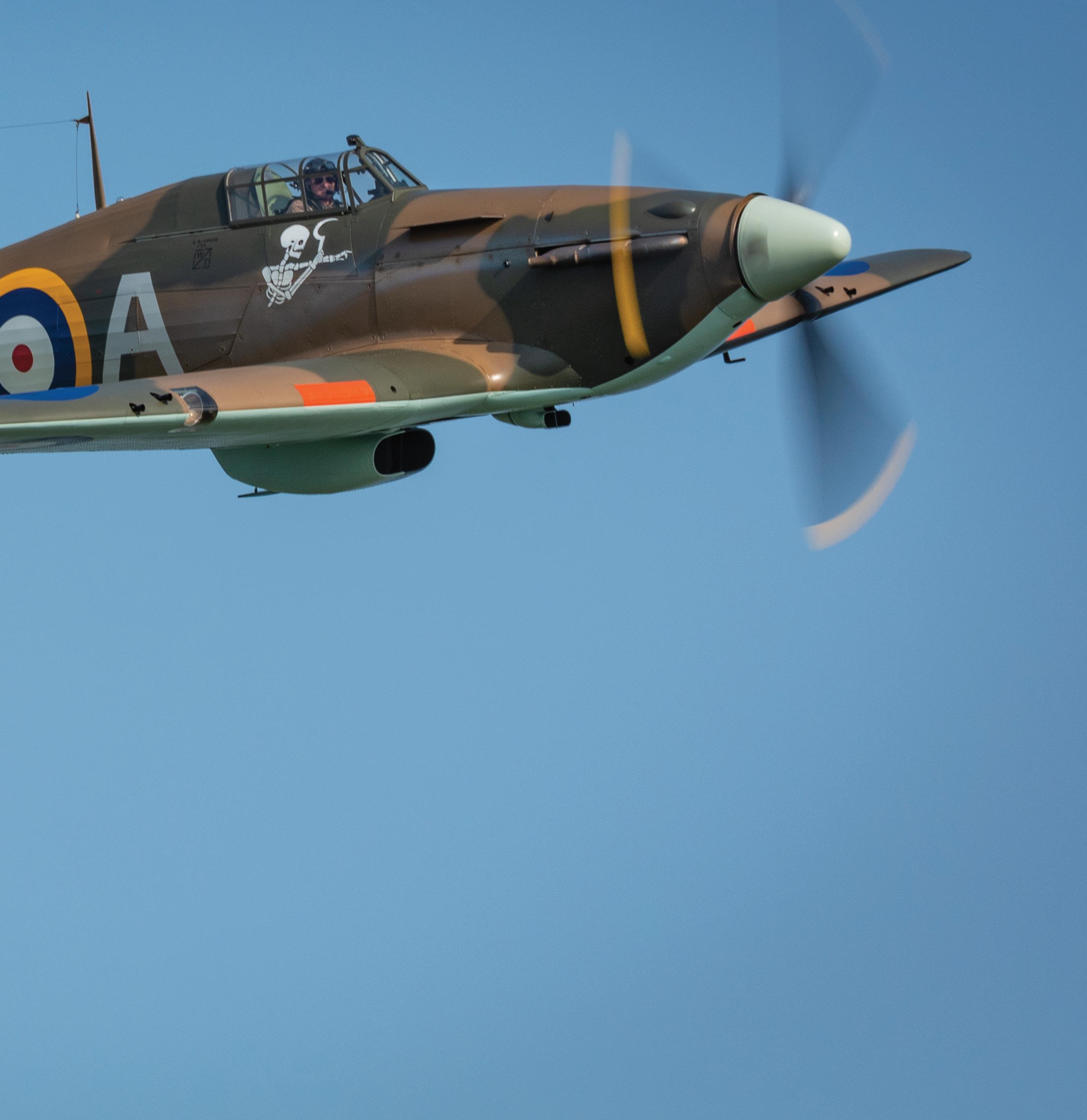
at all, the Spitfire and Mustang accelerate at higher rates and would overrun — we power back. And each has a great big 14-foot slicer-dicer on the front. Asymmetric and torque forces affect every speed and attitude change, unlike jets. Our feet are busy. Lead learns to be smoooooth, and think ahead – we learn how he flies, how he makes the Hurri move. We try to anticipate him. The radios are poor due to the huge cockpit noise. We’re always at low, bumpy altitudes. The Spit and Hurri cockpits are hot, almost ventless — our flight suits become sweat-soaked. The focus is 100 percent. The trust is the same.
My rejoins take too long. I don’t want to come in with too much ‘smash’ (closing speed) because there are no speed brakes on a prop fighter, and it’s very
hard on a Merlin to yank the power off and use the prop-gearcase-crankshaft to decelerate. Again, totally unlike a jet. So, I start out being too cautious, and end up getting ‘sucked,’ 200 feet behind and having to use climb power to catch up. Dave chips in with advice from his Harvard flying: “Geometry-geometry-geometry!” For a left-turn rejoin, I learn to put the Hurricane in my two o’clock, keep it there, maintain plenty of smash, pass underneath, bank hard to kill the speed and slide in, right echelon. “Two’s in.” (Too much caution is not precision.)
Finally, we think we have a handle on it. Let’s try a mission. What shall we do? Aviation magazines are asking for air-to-air shots of the new Hurricane. A photo mission requires briefing and planning similar
CANADIANAVIATOR.COM 35

“OUR CORRECTIONS MUST BE QUICK AND ACCURATE. I’M HARDER ON THE MERLIN THAN I LIKE BUT THERE’S NO CHOICE; WE’RE 100 FEET FROM THE UNFORGIVING EARTH. POSITION IS EVERYTHING.”
PETER HANDLEY 36 CANADIAN AVIATOR MAY/JUN 2024
to an airshow display — good choice. Mike Ruddick, chief pilot at Vintage Wings of Canada, will fly the Harvard; long-time volunteer/ photographer Peter Handley will take the back seat. Our early-morning briefing takes place in front of the whiteboard, formal and thorough, then we walk-through the mission on the hangar floor, rehearsing the movements and the calls.
Misunderstandings become blatantly obvious.
The Vintech guys arrive long before us to do the daily inspections and push the birds outside. As we join them, helmets under arms, heads buzzing with frequencies-altitudes-contingencies, I stop for a second, struck by the magnificent sight: three fighters glowing in the early morning light, and the blazing-yellow Harvard. So rare ...
The Harvard starts first — it’ll take longer to get to the rendezvous — and taxies away. Then the Mustang – it takes the longest to warm up. The Spitfire starts last — very poor cooling on the ground. We snake our way out to the runway, weaving to see around the long noses. ATC is cooperative and arrange a break in the busy Cessna 150 traffic. We take off in stream, not in formation — we can’t see ahead until the tails comes up, and if one of us blows a tire we don’t want to wipe out the airplane beside us.
Joe spots the Harvard doing its gentle 360 and leads us onto its wing. Peter has his camera up, canopy rolled back, body twisted hard left, and calls us with tweaks: “Spitfire up a bit.” “Mustang back 10.” We fly a big 360 twice to get the sun angles, then Peter calls us to “Break,” one by one, and we give him the peel-off views.
The results are superb. The photos indicate we’re getting there. Then, weeks rushing by, it’s time for Aero Gatineau, the main show. And — big score — the RCAF approves us to do a Heritage Flight with the CF-18 Hornet. Any of us three pilots. In any of the fighters. This is quite a remarkable acknowledgment, and we are very humbled by their confidence.
We show up days early and get some rehearsal in, surprising cows and farmers in the dairy lands east of Gatineau. The practice flight with the Hornet is mandatory. I cast around for opinions: who shall fly with the Hornet? The consensus is the Spitfire, which means me. (The stock joke from the other guys is, “Spitfire, it’s always the Spitfire...”) So, we figure out a sensible mission-plan with Air Boss Jean-Francois Sills, and Major Justin “Kinger” King of 425 Tactical Fighter Squadron. It goes like this: the Hornet takes off and does his display, then holds a mile
north. ‘Victory Flight’ launches with me in the Spit rolling last. The Hurri and Mustang depart the box and hold to the west. I get airborne, the Hornet joins on me, and I lead it through three ‘banana passes.’ On the last pass the Hornet breaks up and away. Joe and Dave are beetling back by then, and I rejoin as #2. The Hornet lands and we run in for our first pass in a ‘Vic’ formation of three. This keeps the airshow tight, eliminating dead air.
And that’s just how it works out. Oddly, one of the main things we have to offer is Sound. Our three Merlins make a unique, rumbling, supercharged growl, latent with power. The crowd really connects it to history. After the Friday practice we shift the timing to allow the Hornet to get shut down and quiet before we arrive on the show line. The announcers are very cognizant of that too and dial down the music and talking as we roar by.
As for the displays, they’re a workout. All I see is a brown hunchbacked aeroplane and fleeting glimpses of circus-tents. It’s bumpy, summertime air, and we’re continuously rolling and pitching. There is no smoothness. Our corrections must be quick and accurate. I’m harder on the Merlin than I like but there’s no choice; we’re 100 feet from the unforgiving Earth. Position is everything.
We’re quiet on the VHF: there’s only “Two’s in” from me, and “Showtime” from Lead during the Vic segment. Then we separate into a long line astern and beat up the airfield, flying big figure-8s, still in formation but with enough distance that an airplane is nearly always in front of the crowd. This is great fun. It’s unique to put the fighter ahead in your sights and keep it there as we twist and turn.
The landing sequence is also a show: Lead pulls up from a pass into the downwind and drops gear and flaps. Number 2 (me) extends, follows, but does not land — instead, I fly by Lead at 100 feet as he rolls through centre stage. Number 3 then lands behind Lead, and I land behind both. Then we taxi back in sequence and get the canopies open for some welcome cooling air, and to wave at the folks.
Taxi in, Lead extends his arm and fist where we can see them, and as he pulls down, we cut the mixtures and the big props chug to a stop. The flight is over, but the mission is not complete until we walk along the crowd line and shake hands with the little kids, then debrief back at the hangar.
“Next year, more please!”
CANADIANAVIATOR.COM 37
CF-18 PILOT TAKES US BEHIND THE SCENES AT AN AIRSHOW A HORNET
BY MAJOR JUSTIN KING, RCAF
Istrap in to the ejection seat, remove the pins, check the instrument panels to verify that all the switches are in the correct position, and start the APU. I hear the familiar and distinct groan of the CF-18 engines as they start up: the same sound that I have heard a thousand times before in my flying career. I monitor the gauges and follow through the checklist in my head. In a single-seat fighter jet, we train to memorize the entire checklist. Not once during flight, and the over 500 checks that I will perform, barring an emergency, will I reference it.
With over 10 years’ experience flying the CF-18 Hornet, I have frequently been asked what the start check sequence is. Interestingly, away from the cockpit, I struggle to recite it. However, in the jet, with my hands on the flight controls, my mind flows effortlessly through the start checks. Everything is going smoothly during the start today. However, as I look up to get the “all clear”

from my technician on the ground, I remember that this start is anything but a normal tactical mission start-up at home base. Today, there are thousands of people on the ground, watching my every move. I am participating in the annual airshow in Gatineau, Quebec.
I am not an airshow demo pilot; I am an operational fighter pilot. This weekend I have been given the privilege of performing the CF-18 tactical demonstration flight in the airshow. Making this even more special is that, apart from a slew of family and friends on the ground, two of the people watching are my wife and my two-year-old daughter. This is a part of my career they rarely get to see up close. Representing the RCAF fighter force for a weekend, demonstrating the professionalism that embodies our Canadian fighter pilot community, and displaying the capability of the CF-18 Hornet to the Canadian public is a rare experience for me, one which I will truly cherish and truly enjoy.
& 38 CANADIAN AVIATOR MAY/JUN 2024
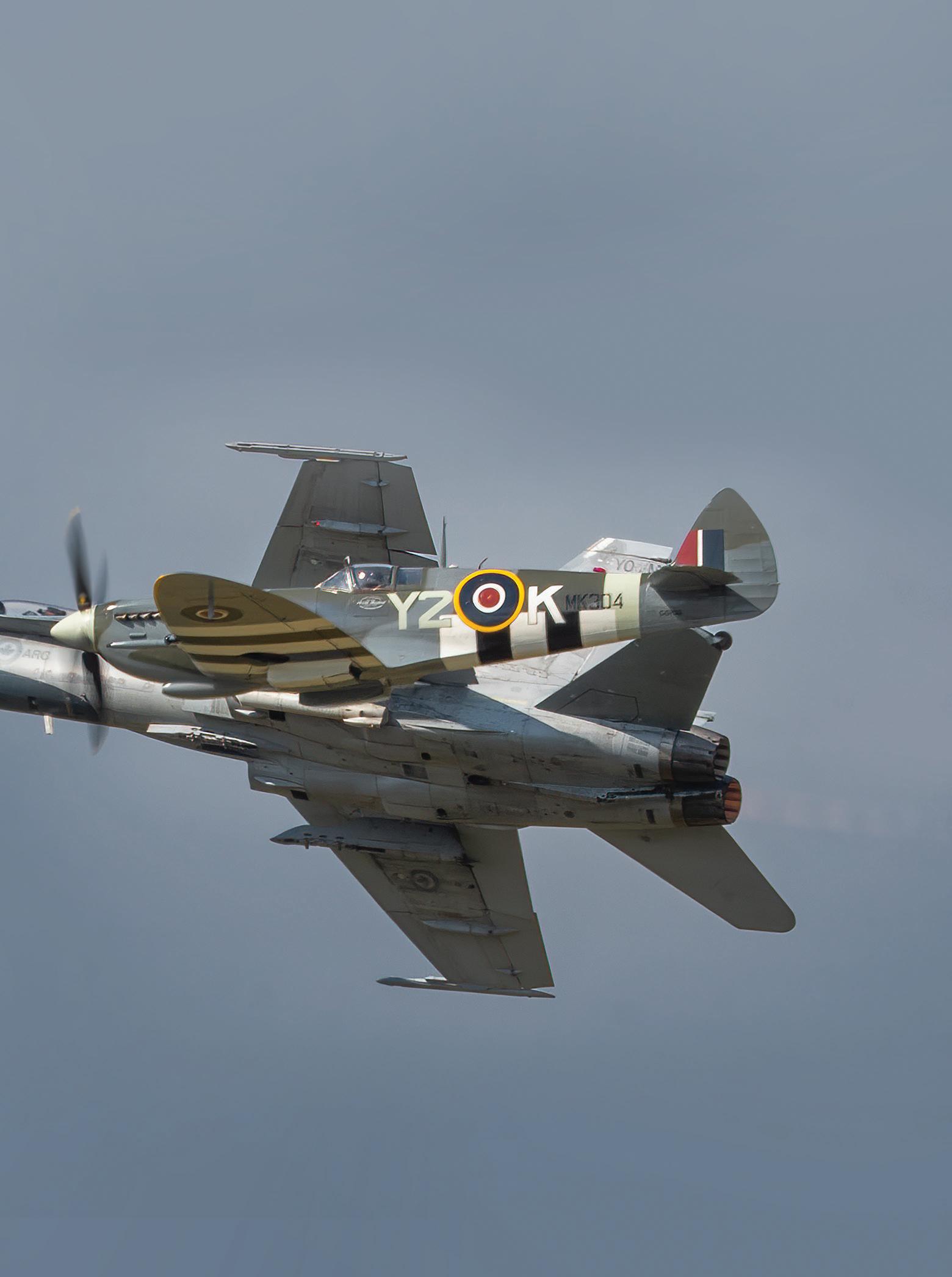
A SPITFIRE
LAVI AIR
CANADIANAVIATOR.COM 39
&
People might believe that a fighter pilot would be used to a crowd during the start-up procedure, as the jet naturally attracts attention. The reality is that operational fighter pilots train at bases where startups are done in relative isolation. It is simply the initial step in the pilot’s flight to the airspace where the tactical mission will be carried out. Apart from the dedicated maintenance team, no one is watching. As mentioned previously, it is on rare occasions that my family has had an opportunity to see me fly, even though a large part of my life has been dedicated to the art of tactical fighter aviation.
All RCAF fighter pilots dedicate their professional lives to learning and perfecting the skills of fighter aviation. After years of flying the jet, the awe of the aircraft alone wears off. The fighter pilot is left with the drive to achieve excellence in each and every mission flown, as well as an unwavering belief in the importance of our national defence. Long days and endless hours of flight briefs and debriefs, with the goal of achieving mission success, become the norm. There is simply no room in the work we do as fighter pilots for less than perfection.
For example, consider a North American Air Defence mission. A fighter pilot may be required to perform a scramble start in the middle of the night. The pilot will take off on an IFR clearance in any weather condition, switch to VFR while executing a mission in congested ATC regions, re-acquire an IFR clearance to get home or divert to a closer airfield, all while leading a formation of two aircraft and interpreting complex rules of engagement passed down through command and control. It is dynamic and intense. Yet what has just been described is one of the least complex missions for which a fighter pilot trains.
An operational fighter pilot becomes a member of a team. That pilot has bought into something bigger than him/herself. It is only in those rare moments, such as flying in an airshow with thousands watching, that you are reminded your daily work is not the norm for the general population. The experience is a welcome break from operational life and the daily routine of missions, qualifications and upgrades. Moreover, it acts as an opportunity to earn and maintain the trust and respect of the Canadian public, giving them a rare chance to ask questions about what we do and how we do it.
I now fast forward, 15 minutes into the airshow routine. I’m approaching my bingo fuel. I set up for my final high-speed pass, accelerating to Mach 0.95 as I reach stage centre at 500 feet. On a high-speed pass, I will start at a point 5 nm east of the airport and reposition approximately 5 nm past the airport: a routing which, days before my arrival in Gatineau,

“AFTER YEARS OF FLYING THE JET, THE AWE OF THE AIRCRAFT ALONE WEARS OFF. THE FIGHTER PILOT IS LEFT WITH THE DRIVE TO ACHIEVE EXCELLENCE IN EACH AND EVERY MISSION FLOWN, AS WELL AS AN UNWAVERING BELIEF IN THE IMPORTANCE OF OUR NATIONAL DEFENCE.”
40 CANADIAN AVIATOR MAY/JUN 2024
 Flying the Friday night sunset show in Gatineau.
Flying the Friday night sunset show in Gatineau.
CANADIANAVIATOR.COM 41
TERRY MCBURNIE
I had planned in my mission planning process. This routing follows Highway 50 from Buckingham to Hull. As my family is from this region, I’m very familiar with it. The route takes approximately 25 minutes when driving. Today in the CF-18 at high speed, it takes roughly 18 seconds. I can’t help but break my normal mission focus in the cockpit for a brief moment to chuckle at this time contrast.
I know very well the sound the spectators will hear on the ground as I pass stage centre with afterburners lit. Paradoxically, in the aircraft it is eerily calm and quiet. I reflect on my memory of watching an airshow as a young boy and seeing a CF-18 execute this same manoeuvre. I remember the thrill, the excitement and the overwhelming feeling of raw power. Those feelings drove me for the next decade to achieve my own goal of becoming a Canadian fighter pilot. I can’t help but wonder, will I have a similar effect on someone in the crowd today?
As I hit stage centre on my last high-speed pass, I immediately do a 6g pull vertical and start the climb to FL210. “Alouette 4, Ottawa Centre has cleared you to FL210,” I hear from the Air Boss as briefed. A climb from ground level to 21,000 feet in this condition will take approximately 15 seconds. I have a familiar moment in my peripherals which occurs during every

unrestricted climb, a feeling simply put as the ground disappearing at a startlingly fast rate. As I level off at FL210 I experienced one of the most peaceful moments of my career. Normally, when you are flying at FL210 over top of any busy ATC centre, let alone the National Capital Region, there is a constant chatter of ATC routing aircraft through the sky. Today, inside the show box at FL210 directly above the NCR, no one is talking to me. I’m on an independent airshow frequency. I’m completely alone with my thoughts. The jet is slow at the top of the climb. It is calm and quiet. I start slowly spiraling down to set up for my next manoeuvre. I smile as I take in the moment. I am able to see all the landmarks; National Defence HQ, Parliament Hill, Sussex Drive, the Ottawa River, Chelsea Dam, Gatineau, and Rockcliffe Airport to name a few. All places I know well, and all places that symbolically drove me to this very moment in my career. I can see the crowd of 10,000plus spectators below. It’s truly a moment of Zen. On a regular tactical mission, from takeoff to landing, a pilot’s focus is all-consuming. A moment such as this in tactical aviation is rare. This was a brief moment in my career as a fighter pilot that I will remember for a very long time.
At the end of the performance this year (2023), I was given the opportunity to fly in a formation with the Vintage Wings Spitfire, a bucket-list item for me as a fighter
ANDRÉ LAVIOLETTE 42 CANADIAN AVIATOR MAY/JUN 2024
“DURING THE SHOW I REJOIN TO CLOSE FORMATION WITH THE SPITFIRE, A PARTICULAR CHALLENGE IN THAT THE HORNET IS FLYING AS SLOW AS POSSIBLE WHILE THE SPITFIRE CRUISES AT 220 KNOTS.”

pilot. During the practice show the professional aviators of Vintage Wings were giving me advice on how to make my formation flying look ideal to those on the ground. As a tactical fighter pilot, close formation flying is viewed largely as a contingency to get through cloud when our radars are not working or arriving at the airport for an overhead break to land. It was amazing to listen to these lifelong aviators provide a different spin and viewpoint on close formation flying. During the show I rejoin to close forma-
tion with the Spitfire, a particular challenge in that the Hornet is flying as slow as possible while the Spitfire cruises at 220 knots. As we pass stage centre and as per the brief I am stepped up in the formation. This provides me with a view through the Spitfire looking down into the crowd. Again, I momentarily break concentration and remember that my two-year-old daughter is one of the faces in the crowd. The significance of that fact does not escape me.
As a Canadian fighter pilot, my experience includes 10 years of operational flying, five operational deployments, and the achievement of numerous tactical qualifications. However today, it is the privilege of flying in the airshow in Gatineau that will give my little girl a memory that she can treasure.

CANADIANAVIATOR.COM 43
Major King’s two-yearold daughter Mila King watches her father fly.
BOEING’S FLYING BOATS
The Aerospace Giant’s Pioneering Days in British Columbia
BY ED DAS

CLITY OF VANCOUVER ARCHIVES
44 CANADIAN AVIATOR MAY/JUN 2024
It was a clear, warm September afternoon in 1918 when RCAF aviator V.A. Bishop, flying in a recently purchased Hoffar H-2 flyer found himself in every pilot’s nightmare. Having lost power to his engine and nowhere to land, his plan to set the wooden seaplane in nearby Coal Harbour where its builders anxiously waited would be dashed when, out of both altitude and airspeed, his plane would bank, stall and spin into the roof rafters of the home of a Doctor James Farish, hitting the roof with such force that the engine would separate from the airframe, tearing a huge hole in the roof. The engine would subsequently bounce a second time to tear open yet another hole in the unfortunate doctor’s family home.
Luckily, the former military aviator would emerge relatively unscathed, and would recount that he couldn’t have selected a better place in which to have a fall, when the disoriented aviator was told he’d crashed in Vancouver. Its builder, James Hoffar and his brother Henry, both Vancouverites, had flown the aircraft on three occasions previously, and their locally built floatplane had just been accepted by the government to serve as a forestry surveillance craft. It was the first air crash in the history of Vancouver, but it would only harden the Hoffar brothers’ resolve to build a better seaplane. The British Columbia Forestry Department would wisely decide to wait for seaplane technology to progress a little more before dabbling in aerial reconnaissance again.
oping a highly skilled workforce whose expertise in wood construction and marine hulls would serve the company well in the construction of aircraft that could take off from, and land on, water. In 1925, the brothers would merge their boatyard with another local boatbuilder, to create the Hoffar-Beeching Shipyard Ltd. in Coal Harbour on Vancouver’s waterfront. The Hoffar brothers shared their passion for aviation with co-owner C.G. Beeching who, in 1920, had operated a fleet of passenger planes in Alberta, one of the first commercial aviation ventures in Canada. Soon the occasional aircraft alongside boats, began to emerge from the small factory.
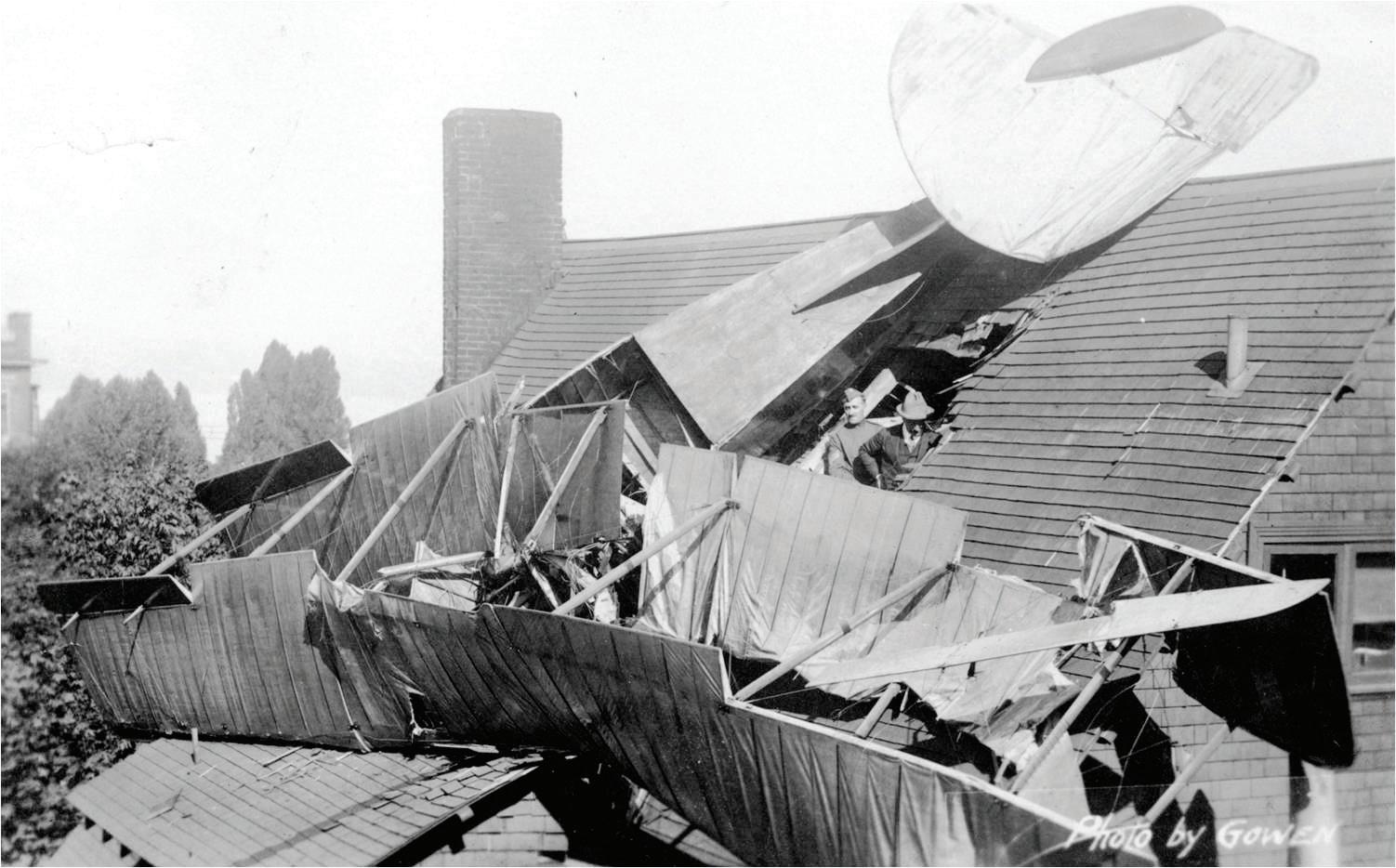
James Hoffar and his older brother Henry were the sons of a successful Vancouver architect, Noble Stonestreet Hoffar, who’d designed many of Vancouver’s prominent buildings in the last decades of the 19th century. The brothers were Canadian aviation pioneers and, in 1914, would build the first seaplane ever constructed in Canada. Building boats (starting in 1907 as the Hoffar Motor Boat Company) had been the main economic driver of their company through the 1910s and 20s, but the brothers were fascinated with airplanes and determined to expand their business into that quickly developing field.
During this period, the company built a steady stream of yachts, fishboats and tugs, gradually devel-
The brother’s first plane, the H-1, was a converted Curtiss JN ‘Jenny,’ which the boys had employed their boatbuilding skills on (squeezing its production over four months between boat builds) to construct a single float aircraft with outboard pontoons. Although neither knew how to fly, James, the youngest, won a coin toss to see who would pilot the experimental aircraft. The aircraft was a success and would see numerous successful flights before it was retired when the brothers grew concerned about slowly rusting support wires from the seawater in which it spent so much time. Other forays into aircraft construction would follow, including the ill-fated H-2 above, and a later refined version, the H-3, also another floatplane, which bore a close resemblance to a popular flying boat design of the day, the Curtiss HS-2L.
By 1930, a common sight in Coal Harbour would have been a newly christened luxury yacht built at the Hoffar-Beeching boatyard cum start-up aircraft factory. No expense had been spared on the lavish yacht by its famous owner, William Boeing. In its central parlour, fitted out with glowing fireplace, celebrities of the day, like Amelia Earhart and other titans of industry, would often gather, enjoying a dinner of fresh salmon prepared by the ship’s personal chef, and accompanied by toddies of vintage whiskies, a forbidden pleasure in its owner’s home country.
Boeing had loved sailing since he was introduced to it as a child and, like the Hoffar brothers, had even
The site of Vancouver’s first airplane crash. The house belonged to physician James Farish.
Left: Boeing Aircraft Co. of Canada’s flying boat production room showing construction of the C-204 Thunderbird flying boat and the 40H-4 mail plane.
CANADIANAVIATOR.COM 45
CLITY OF VANCOUVER ARCHIVES
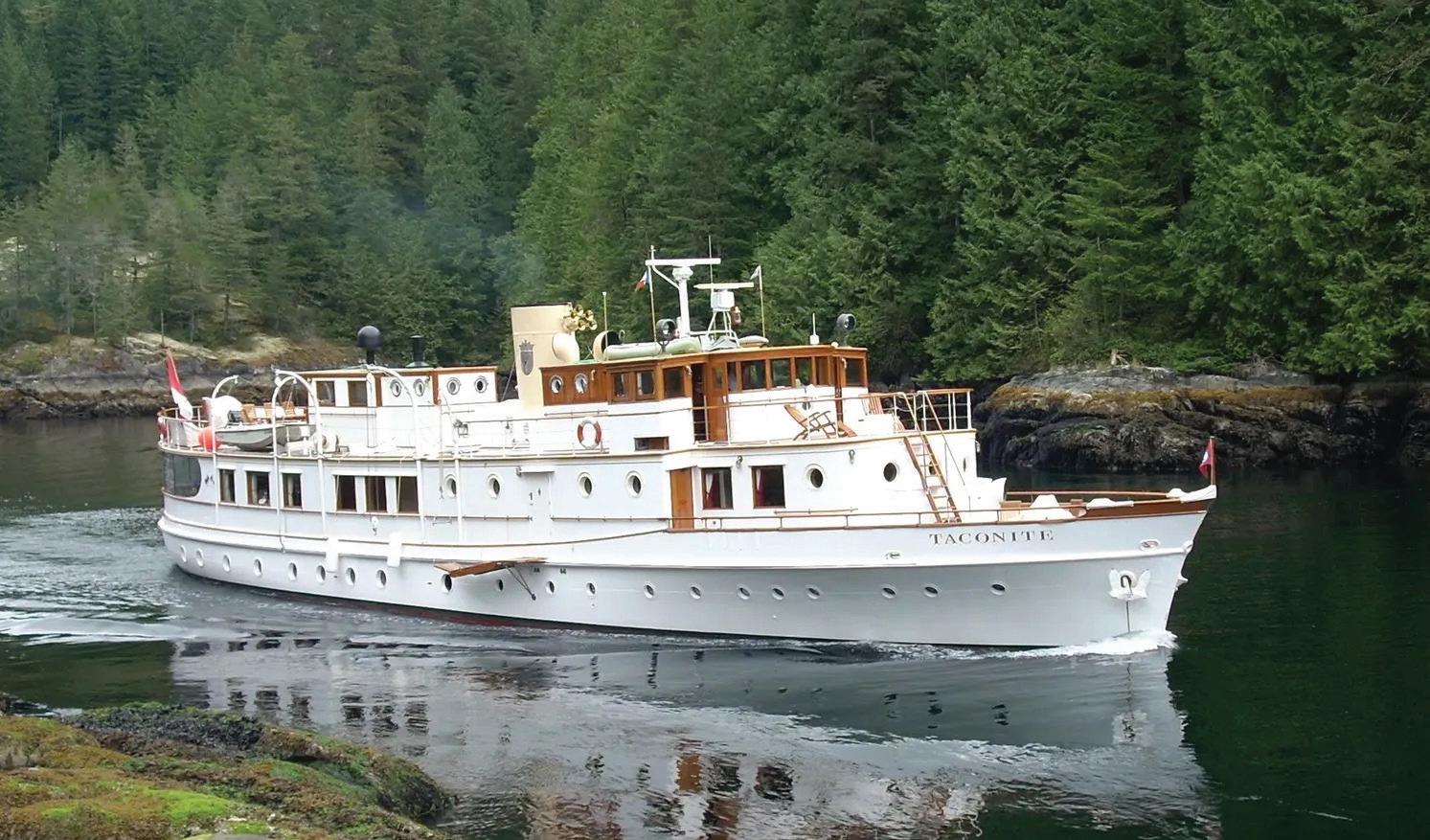
built boats at his Seattle factory. His speedboats were made especially popular by prohibitionist rumrunners. Boeing was no stranger to Canada, and Vancouver in particular. In 1926 he’d organized the first international mail flight from Seattle to Vancouver and back in an aircraft which would not have been unfamiliar to the Hoffar brothers who were, by that time, already experienced flying boat builders. History does not record how the brothers and Boeing met, but perhaps it was a shared fascination of flight that drew the like-minded trio together during one of Boeing’s frequent visits to the Vancouver area.
In 1929, Boeing would purchase the Hoffar-Beeching Shipyard and rename it Boeing Aircraft of Canada as a logical opportunity to expand his own complimentary aircraft business into Canada. Like everywhere else, the Great Depression had hit the Hoffar brother’s boatyard very hard, and its purchase by the largest aircraft company in the United States on the eve of the Depression ensured that the company would endure, at least in the short term. The construction of a large luxury yacht named Taconite (presented to his wife as a gift), had begun in 1929 shortly after Boeing bought the company in May of that year; with aircraft sales collapsing on both sides of the border, Boeing sought to retain his new acquisition’s employees with the construction of the large, 125-foot personal yacht. It seems that Boeing likely also wanted to take advantage of the opportunities afforded by operating a Canadian

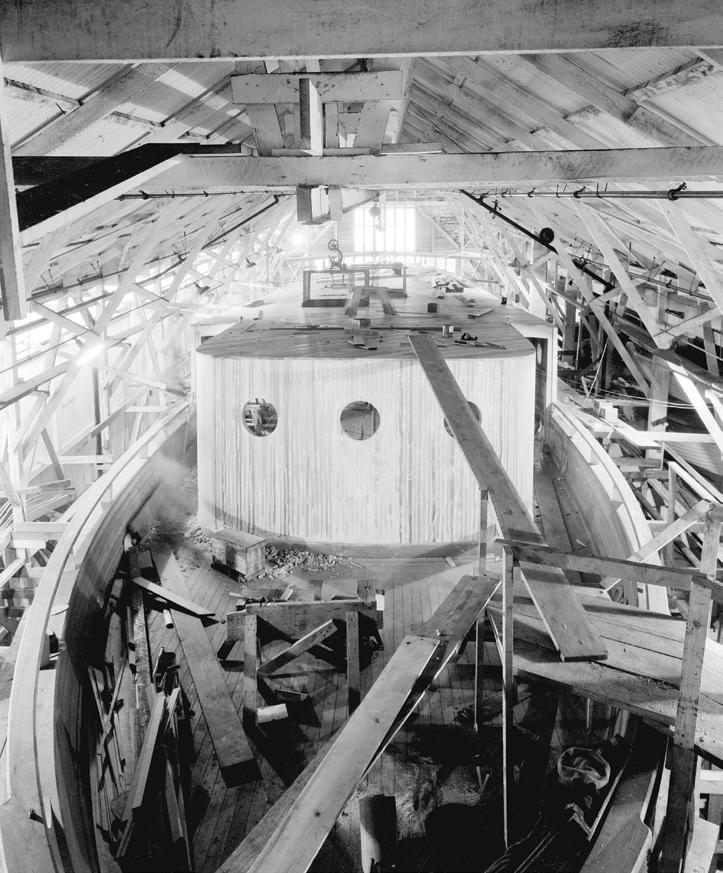
chartered company, not only for the construction of aircraft, but also a potentially diverse array of businesses including shipbuilding, forestry (both harvesting and manufacturing of wood products), quarrying and processing of minerals, training schools for pilots, electrical power generation and supply, air transport and the construction of any type of self-propelled vehicles, as opportunities permitted. In his granting of a Canadian Charter to Boeing Aircraft of Canada on May 29, 1929, the Registrar General of Canada acknowledged and authorized all these types of endeavours to the new company in an official government document, opening up a wealth of prospective business paths for the new company to pursue in addition to aircraft.
Boeing’s first commercial design aircraft had been the Boeing B-1 (also known as the Boeing Model 6), its design also heavily influenced by the Curtiss HS-2L floatplane which Boeing had built under licence during the years of the First World War. A floatplane was a logical choice for pilots operating in the largely inaccessible remote regions of B.C. In an April 1929 article in the Victoria Daily Colonist announcing the start of an aircraft factory, the writer observed that the B-1E would be the first aircraft to be built there in anticipation of a demand for this sort of aircraft. Boeing’s final version of this type of floatplane would be the Model 204, of which two would be built stateside, and a Canadian version, the C-204 Thunderbird (another Boeing first, as the company’s first named
Above left: W. Boeing’s beloved yacht Taconite spent most of its time in B.C. waters, where Boeing preferred to sail. In 1956 Boeing died aboard, and later his ashes were scattered off the B.C. coast.
Above right: Inside the boathouse on Vancouver’s waterfront where construction of the Taconite was underway.
Inset, left: Boeing Aircraft of Canada employees laying out the design of the new factory at Sea Island.
CLITY OF VANCOUVER ARCHIVES
CLITY OF VANCOUVER ARCHIVES
46 CANADIAN AVIATOR MAY/JUN 2024
CHAZ HITZ
aircraft model), of which four would be built as the first Boeing-produced aircraft in Canada (essentially a B1-E). Boeing had sold five earlier variants of the Thunderbird to Western Canada Airways, and which had been used primarily as fishery patrols along the coastline of British Columbia, so it seems likely that additional sales were anticipated. Construction of the Canadian-built C-204s started in the summer of 1929, with jigs and tools being brought in from the parent company but, unfortunately, with the onset of the Depression, only a few got built. Another floatplane, named the Totem, was also designed at the new company concurrently with the start of the Model 204, but only one example was built despite exhibiting good flight characteristics.
Along with the C-204 aircraft, Boeing also set up a production line in December 1929 to build their popular transport Model 40, the last iteration of which was the Model 40H-4, a variant which was intended to accept either wheels, skis or floats to make it attractive to Canadian bush pilots. It seems that this project also faltered after the construction of only a few aircraft, which were delivered to a New Zealand customer, again largely as a result of the economic downturn. Instead, the former Hoffar-Beeching boatyard, now Boeing Aircraft of Canada, continued to
construct a wide variety of vessels, including tri-cabin bridgedeck cruisers, patrol boats, tugs, ferries and fishing boats for which there was seemingly enough business still to keep the factory operational during the lean years of the Depression. At least for the first 10 years of its existence in Canada, Boeing Aircraft of Canada could have as easily been called Boeing Shipyard of Canada.
The next foray into aircraft construction for the satellite Boeing plant was the construction under licence of a large biplane from the British aircraft manufacturer, Blackburn Aircraft. With another war looming, in 1936 the Canadian government established its first Torpedo Bomber unit at landlocked Trenton, Ontario with the purchase of seven Blackburn Sharks which, for obvious reasons, was soon moved to British Columbia. Additional aircraft would be needed to patrol the immense coastline of that province, so two models of the aircraft were delivered to Boeing Aircraft of Canada in 1939 for copying and, by 1940, the company had built 17 of the aircraft before completing the production run. All RCAF Sharks (which were quickly approaching obsolescence) were removed from service by 1944 without a single confirmed U-boat sinking, although one did report an assault on a U-boat.
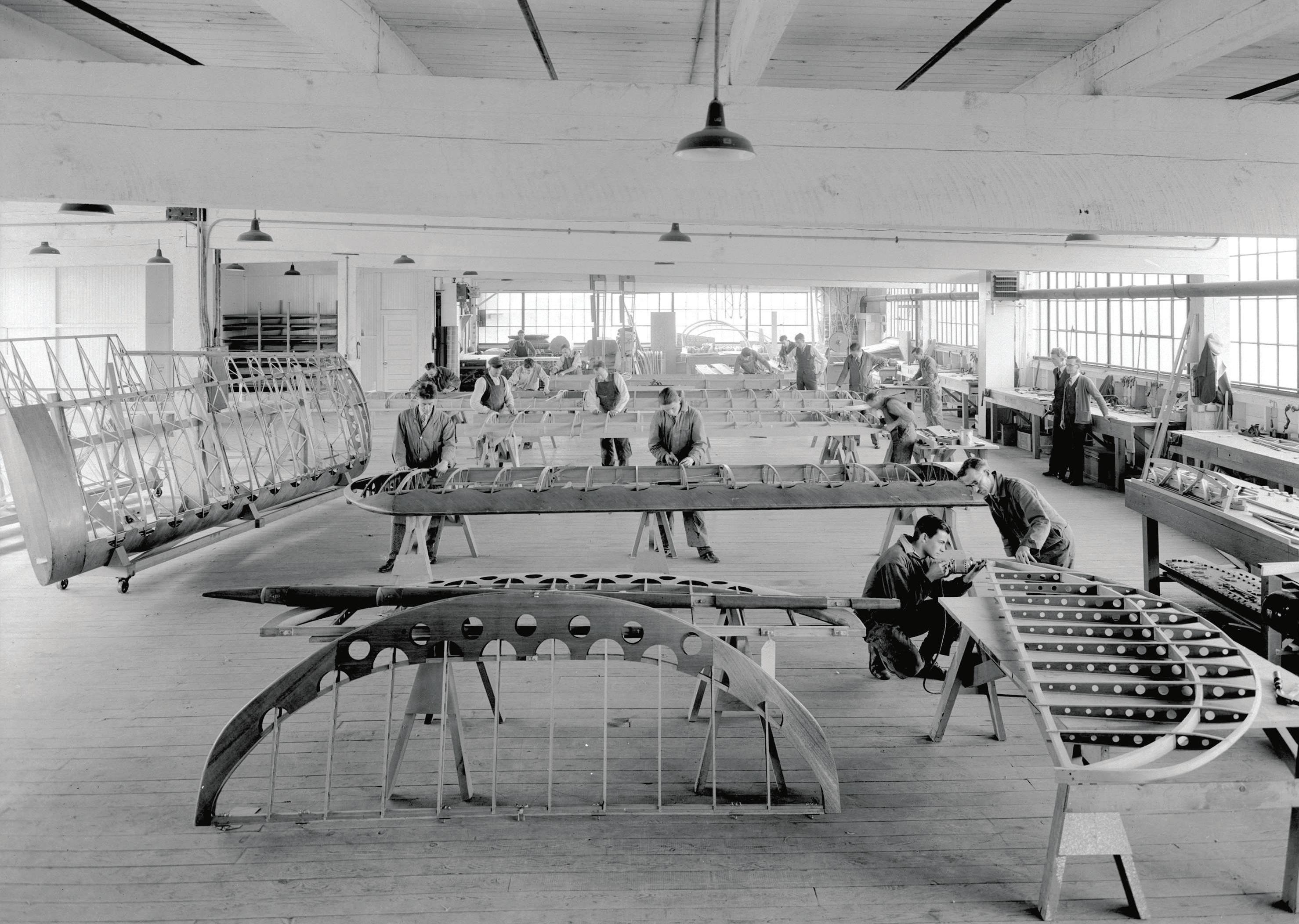 Below: Wing and other sub-assembly construction underway.
Below: Wing and other sub-assembly construction underway.
CANADIANAVIATOR.COM 47
CLITY OF VANCOUVER ARCHIVES

With the need for a much-improved coastal patrol aircraft capable of handling the demands presented by the new and very real threat of coastal attack, Boeing was given a contract in 1940 to build, along with Vickers Canada in Montreal, the amphibious Consolidated PBY-5A, named the Canso by the RCAF, a long-range patrol bomber (thus the ‘PB’ in its name). The company would go on to build 240 PB2B-1 variants as well as 67 PB2B-2 variants and 55 amphibious Canso As before production was completed in 1944. These aircraft had both the range and endurance required to counter the new threat posed by submarine warfare; six German U-boat kills were credited to RCAF Cansos over the course of the war.
At the war’s outset, it became apparent that a larger facility would be required to build the much larger PBY aircraft in production quantities, so the Hoffar-Beeching boatyard facility was vacated, and a new, modern facility built on Sea Island in nearby Richmond. It was soon followed by a second plant which operated as an overhaul shop. Numerous sub-assembly cottage factories also sprang up in short order across the province such as Victoria (floats, braces, bomb racks), Chilliwack (trailing edges), Nelson (anchor boxes, belt frames) and others.
The Canso was arguably the most successful aircraft Boeing built in Canada, the first of which rolled off the production line in February of 1942 and the last by 1944. As the focus of the war turned to the Pacific theatre, Boeing’s focus shifted to production of long-range B-29 bombers, which would be required to carry the anticipated fight to Japan in a manner that the Boeing B-17 could not. With a skilled workforce already on hand at Sea Island, Boeing Canada began manufacturing the mid-section of the massive bomber to help speed up U.S.

production in nearby Washington state. Completed bomb bay sections were trucked from Canada to the mother plant where they were subsequently paired with production B-29s in much the same way large aircraft are assembled via various sub-assembly contractors to this day.
Sadly, with the end of hostilities in 1945, there was no longer a need for large floatplanes such as the Canso as small floatplane manufacturers had replaced flying boats and dominated the market for remotely operated flying aircraft. With a shift of focus to large commercial aircraft, the factory at Sea Island became superfluous to Boeing’s operations and the decision was made to close the facility and lay off all its employees.
A lasting legacy of Boeing’s Canadian operations is the large airport, Vancouver International, that owes its existence to the industry Boeing Aircraft started there. Fittingly, it is one of the few large airports in the world to have a terminal for scheduled floatplanes.
Left: Boeing constructed a series of hangars on the south side of Sea Island. One hangar still stands today and serves as maintenance facilities for Harbour Air and Pacific Coastal Airlines.
Below: Dedication ceremony of the first PBY Catalina produced at the Sea Island Boeing Plant No. 3 (RCAF Canso 9751). CITY OF RICHMOND ARCHIVES
48 CANADIAN AVIATOR MAY/JUN 2024
CITY OF VANCOUVER ARCHIVES

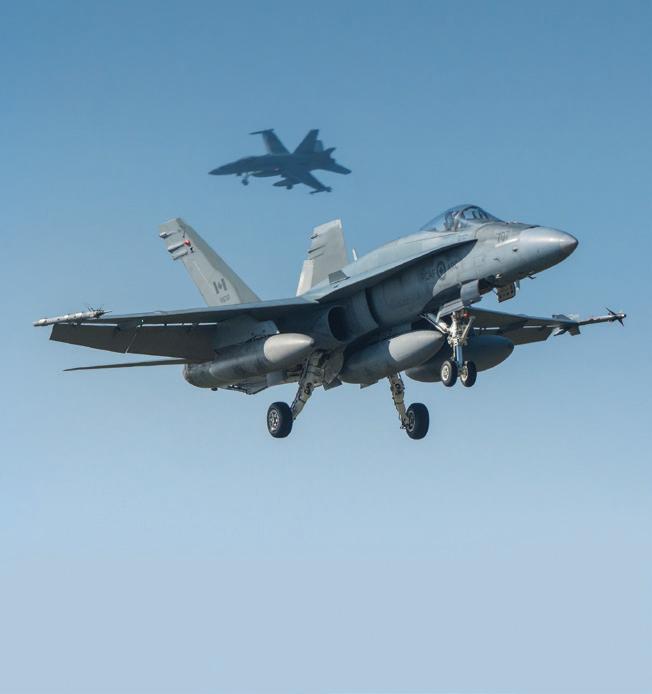
SUBSCRIBE AND SAVE ONE-YEAR SUBSCRIPTION ONLY $26* * TAXES MAY VARY BY PROVINCE. 1.800.656.7598 canadianaviator.com CANADA’S MOST POPULAR AVIATION NEWSSTAND TITLE JUL/AUG 2022 $6.95 DISPLAY UNTIL AUGUST 31, 2022 CANADIANAVIATOR.COM Fly-In Fun THE START OF MANY FLYING CAREERS Freedom Fighters Air Ambulance Journey SHOCK AND AWE IN THE NORTH MARSHALLING SIGNALS REFRESHER Taking Direction Aerobatic Contenders TEAM CANADA TAKES ON THE WORLD RCAF Boosts NATO CANADA’S MOST POPULAR AVIATION NEWSSTAND TITLE PHOTO: LUKE PENNER
The Your Source for Canadian Aviation Literature
NEW
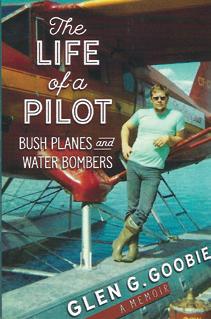
THE LIFE OF A PILOT
Bush Planes and Water Bombers
These are the adventures of retired pilot Glen Goobie, who flew countless missions in Newfoundland and Labrador and across Canada and the U.S. He completed his flying training in Moncton, New Brunswick, and his early flying career took him to Northern Ontario for a couple of years. Upon returning to Newfoundland, Goobie flew with Newfoundland Air Transport, Gander Aviation, and the provincial government’s water bombers until his retirement after 40 years as a pilot.
AUTHOR: Glen G. Goobie
PRICE: $26.95 (includes shipping)

AN ORDINARY HERO
Imagine you are a Spitfire pilot, shot from the sky, alone in enemy territory where no one speaks your language. It is winter and soon it will be dark. You could freeze to death, starve or be captured by the Nazis. And you are a Jew. This is the predicament of RCAF pilot David Goldberg, DFC on March 8, 1944.
AUTHOR: David S. New
PRICE: $29.95 (includes shipping)

HURRICANE PILOT
Harry Gill, of Fredericton, N.B., enlisted in the RCAF in 1940 at the age of 18. During his short but adventure-filled career, he flew a Hurricane fighter bomber over France, England and India and was awarded the Distinguished Flying Medal. He died in 1943 when his airplane was shot down over Burma (Myanmar). These are the letters to his parents and siblings.
EDITED BY: Brent Wilson
PRICE: $23.95 (includes shipping)
NEW

CAMOUFLAGED KILLER
RCAF Colonel Russell Williams commanded the largest Canadian Forces base in the country. He had personally piloted prime ministers and members of the Royal Family, and was one of the most respected and trusted soldiers in the military. He was also a rapist and a murderer. This is the disturbing true account of how one of Canada’s highestranking military officers became one of Canada’s most notorious criminals, including his ultimate capture, trial and conviction.
AUTHOR: David A. Gibb
PRICE: $37.50 (includes shipping in Canada)
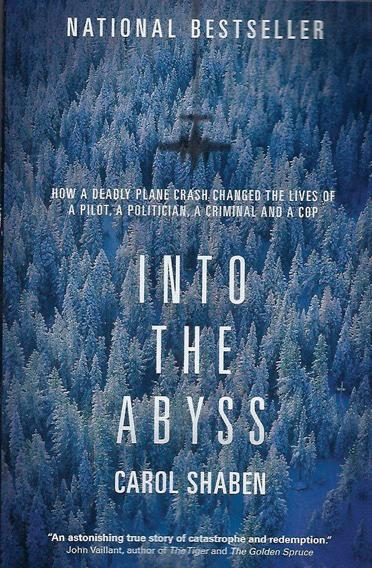
INTO THE ABYSS (NATIONAL BESTSELLER)
This is the riveting account of a deadly plane crash in northern Canada and its aftermath. Written by an award-winning journalist who is the daughter of one of the survivors, Into the Abyss is a dramatic true story of survival. This is a compassionate account of the journey of four men: the rookie pilot, a prominent politician, a cop and the criminal he was escorting to face charges — from the depths of tragedy to the riches of lives begun anew.
AUTHOR: Carol Shaben
PRICE: $39.95 (includes shipping)
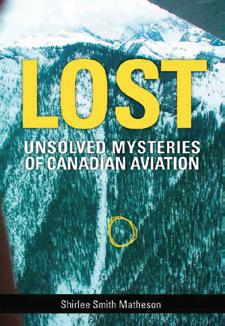
LOST: UNSOLVED MYSTERIES OF CANADIAN AVIATION
One of the themes that runs through this book is the enigma of aircraft that disappear, sometimes within miles of busy airports and crowded cities. Sometimes wreckage is discovered decades later. On other occasions the aircraft simply vanishes, seemingly forever. How can such disappearances be possible? The answer is that a downed aircraft, especially in rugged countryside, can be incredibly difficult to spot from the air.
Author: Shirlee Smith Matheson
Price: $28.95 (includes shipping)
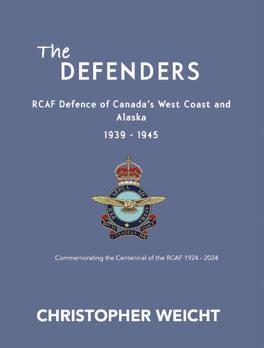
THE DEFENDERS
On June 2, 1942, when Japan launched an attack on US Navy facilities at Dutch Harbor, Alaska, the United States officially appealed for Canada’s help in the defence of the besieged Alaska and its Aleutian Islands, which were under attack and partially occupied by Japanese air and naval forces. Canada immediately sent 15 Squadrons of battle-hardened RCAF fighter and bomber reconnaissance aircraft. The Defenders tells the story of each RCAF Station or Detachment, both in Alaska and on the westernmost British Columbia coast.
AUTHOR: Christopher Weicht PRICE: $65.00 (includes shipping)
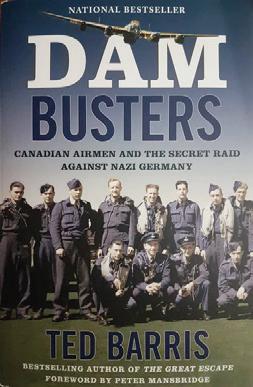
DAM BUSTERS
It was a night that changed the Second World War. The secret air raid against the hydroelectric dams of Germany’s Ruhr River took years to plan and included the best airmen RAF Bomber Command could muster—many of them Canadian. It was a military operation that became legendary. Based on interviews, personal accounts, flight logs, maps and photographs of the Canadians involved, Dam Busters recounts the dramatic story of these young Commonwealth bomber crews tasked with a high-risk mission against the enemy.
AUTHOR: Ted Barris
PRICE: $42.95 (includes shipping)

CANADA’S FIGHTING PILOTS
Cosgrove recounts the lives of Canada’s outstanding pilots and their exploits in the two world wars. From the brilliant individualists who flew in the First World War to the tough and dedicated bomber crews of the Second, this is the story of Canadian airmen and their remarkable contribution to the war effort. An essential book for any aviation and history enthusiast.
AUTHOR: Edmund Cosgrove
PRICE: $33.99 (includes shipping)
NEW 50 CANADIAN AVIATOR MAY/JUN 2024
GO TO FOR MORE AVIATION BOOKS
To order, visit aviatorsbookshelf.ca or call 604-999-2411
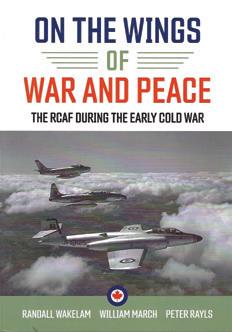
ON THE WINGS OF WAR AND PEACE
Bringing together leading researchers on Canadian air power, the book captures the history of the RCAF during the first decades of the Cold War – a period which marked the zenith of air force accomplishments in peacetime Canada. The volume covers topics that go beyond straightforward flying operations, examining policies that drove operational needs and capabilities and the personnel, technical and logistical functions that made those operations possible.
AUTHORS: Randall Wakelam, William March and Peter Rayls
PRI CE: $59.95 (includes shipping in Canada)
TALES FROM THE LAKEVIEW

This collection describes wilderness pilots, maintenance engineers, passengers and cargo hauled above Canada’s hinterlands in turbine air ambulances to radial-engine Noorduyn Norsemen. The solitary Junkers Ju 52 appears, and the author points out that this one-of-a-kind had a larger wing than Douglas DC-3s or Vickers Viscounts. During his 66-year, 20,200-hour career (and not finished yet, he claims), Grant kept notes and photographs from around the world.
AUTHOR: Robert S. Grant
PRICE: $26.95 (includes shipping)

AFRICAN SKIES
Readers of Robert Grant’s regular columns and occasional features in Canadian Aviator magazine know that his prose brings alive the environments he finds himself in. His 400-page book African Skies is no exception, as Grant recounts his experiences in Africa, from Algeria’s Sahara Desert in the north to the jungles of the Congo, from Sudan’s Darfur region in the east to Liberia on Africa’s west coast.
AUTHOR: Robert S. Grant
PRICE: $42.95 (includes shipping)

AVRO ARROW
Avro Arrow is a fascinating historical record with an extensive collection of rare colour photos, drawings and “found” diagrams. Using 200 images, the book traces the Arrow’s story from inception to rollout and flight test, including advanced proposals for the development of future versions. Diagrams offer stunning details such as the North American strategic defense zones and interception tactics proposed for bomber attacks. This book concentrates solely on the vision, design and technical excellence of the airplane itself rather than the politics of its demise.
AUTHORS: The Arrowheads
PRICE: $51.95 (includes shipping in Canada)

FLIGHT
Record-breaking flights, falling aircraft parts, balloon and helicopter trips and northern rescues are among the captivating true stories in this book. Early flight schools, animal obstacles, hijackings, and unique landing surfaces are also chronicled. Canadian pilots and aviation enthusiasts share stories of first flights, aerial skills, adventures, joys, perils, assistance, humour, tragedy and success in this salute to the Canadian aviation industry and its people.
AUTHOR: Deana Driver
PRICE: $27.95 (includes shipping)
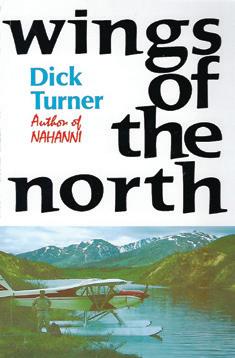
WINGS OF THE NORTH
From beside a fleecy cloud where the icy mountaintop hides a rising sun that will, in moments, bathe the little emerald lake with warmth and splendour, I dedicate this book to the ‘esprit de corps’ that exists among the bush pilots of the North. If there are any words in this book that will enable anyone now entering the world of aviation to become better and safer pilots, if it brings interest others, then I will be well satisfied that I have not failed in my objective.
AUTHOR: Dick Turner
PRICE: $25.95 (includes shipping)

PACKTRAINS & AIRPLANES: MEMORIES OF LONESOME LAKE
Born in a remote homestead at Lonesome Lake in southwest B.C, Trudy Turner was raised in true pioneer fashion, without running water, electricity or cars. (Trudy learned to fly a plane in her twenties but didn’t get her motor vehicle driver’s licence until she was in her sixties.) Her parents began their homestead in 1912. When she was 24, Turner started her own homestead, building a home with the most basic hand tools. Published in 2012 when she was in her 80s, Turner reflects on her unusual life.
AUTHORS: Trudy Turner
PRICE: $49.95 (includes shipping)

THE SPITFIRE KIDS
For decades films and television programs portrayed our allied heroes as grown-up men and women. However, the Battle of Britain was, in the main, fought and won by teenagers. Based on diaries and memoirs, this book tells the story of the Spitfire through the voices of the teenagers who risked everything to design, build and fly her. This isn’t a story of stiffupper lips, stoical moustaches and aerial heroics; it’s a story of love and loss, a story of young people who won a battle that turned a war.
AUTHOR: Alasdair Cross
PRICE: $38.95 (includes shipping in Canada)

LADY ON A PEDESTAL
Gordon Bartsch recounts from a pilot’s perspective how he created an airline serving the Big Dipper Route in the Yukon Territory. The story’s heroes are a converted DC-3 (CF-CPY) and a young woman who earned the right to fly the Big Dipper Route from the left seat. Dawn and Gordon Bartsch shared a great adventure with a great airplane. Today, CF-CPY sits atop her pedestal in Whitehorse, turning into the wind, a testament to the Yukoners who did, and continue to do, what others said couldn’t be done.
AUTHOR: Gordon Bartsch
PRICE: $52.95 (includes shipping in Canada)
NEW NEW NEW CANADIANAVIATOR.COM 51















SERVICE CENTRE PILOTMEDICALS.CA Dr. Stephen Cooper SCAN, CALL, FLY! Virtual Renewals Anytime, anywhere. In just 10 minutes. Fully insured Professional Engineering Firm APEGGA Permit to Practice Number P10042 info@jetpro.ca • 780-966-5902 #234, 3–11 Bellerose Drive, St. Albert AB, Canada T8N 5C9 Does Your Airport Need Instrument Flight Procedures to Improve Access & Marketability? Canada’s largest developer of GPS instrument approaches. > Over 150 airports in Canada use our approaches and departures. Canada’s leading WAAS designers. > Over 100 airports and 200 approaches, including mountainous approaches to date. Complete turnkey solution, from runway survey to flight checking, including WAAS flight checking. Customized procedure design, including aircraft performance tailoring. ADVERTISE IN THIS SECTION C ontact KATHERINE KJAER 250.592.5331 katherine@canadianaviator.com airbly.com 888-747-4565 AutomatedAircraft Logging,Tracking, andMore MadeinCanada Established 1974 LOG BOOKS Journey Log “Spiral Wound” Tech Log Binders Prop, Engine, Airframe, Mod Logs Seat Track Cleaners Klear to Land Window Cleaner Aircraft Cleaners and Solvents ACCESSORY OVERHAUL Starter Generator Specialists 59 Eagle Drive, Winnipeg, Manitoba R2R 1V4 | Tel 204-783-8512 | sales@gouletaircraft.com | www.gouletaircraft.com CELEBRATING 50 PT6 100HR O’Ring Kits PT6 Fuel Nozzle Gaskets PT6 Igniter Gaskets 52 CANADIAN AVIATOR MAY/JUN 2024

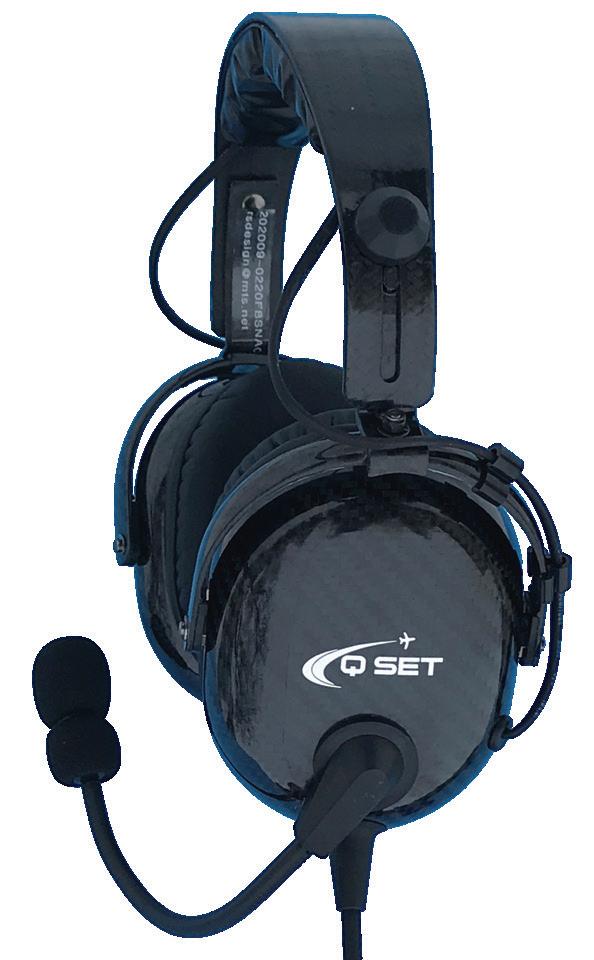


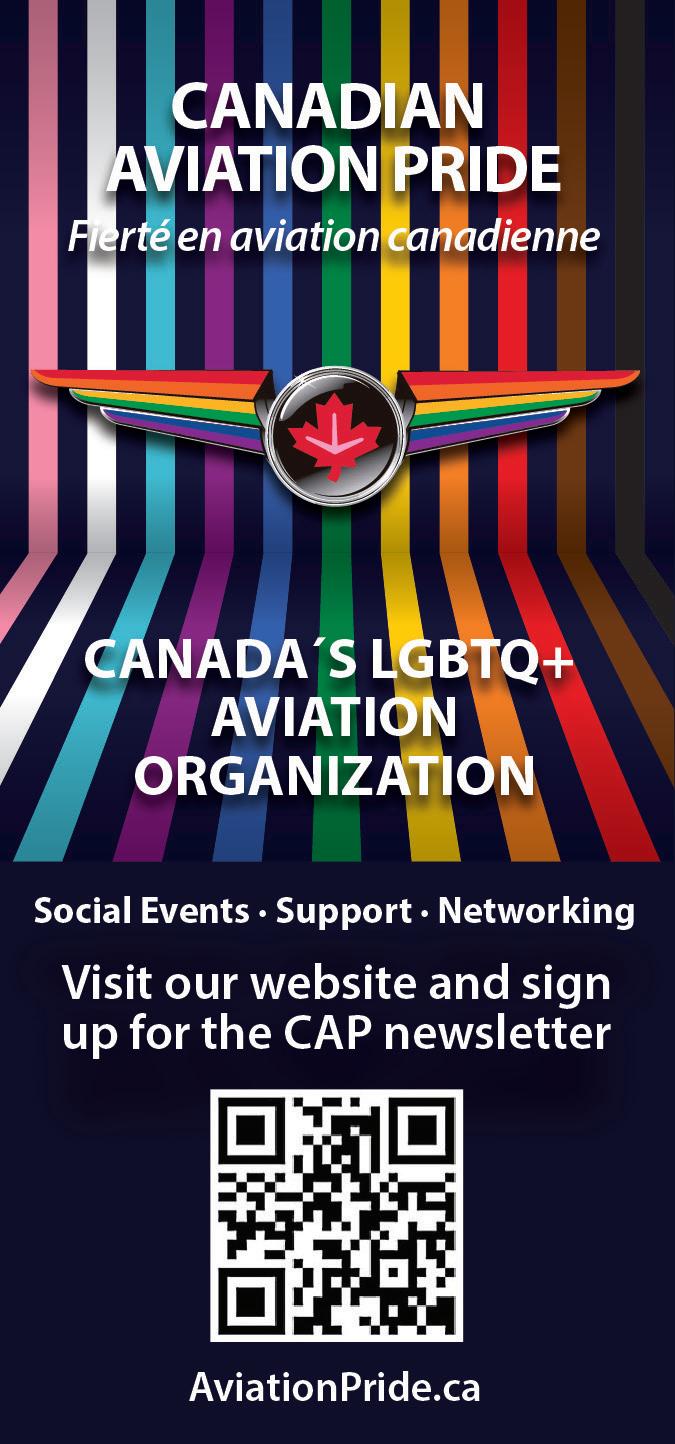
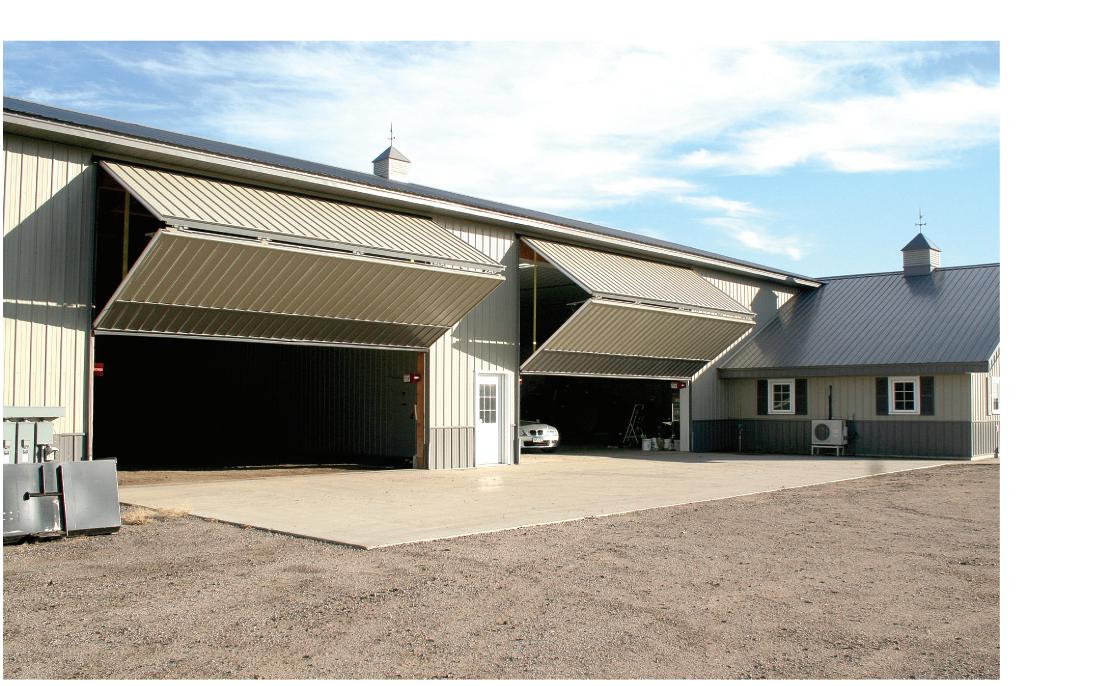

To advertise, contact Katherine Kjaer / 250.592.5331 / katherine@canadianaviator.com HERE’S WHAT WE CAN DO FOR YOU: • Architectural & Engineered Drawings • Municipal Applications & Permits • Airport Applications & Approvals • Transport Canada & NavCan Applications • Complete Construction If you already have a design or drawings, send it along in CAD or PDF for an estimate to: steve.secco@secandco.com QUESTIONS? Phone 519.857.7639 or visit www.secandco.com PNR $425 ANR BT $785 eatherlight CarbonFiber Tried & True Learn more at AVIATIONHEADSETS.CA 800-667-8140 HEADSETS@PRAIRIEFLYING.COM *COPA MEMBERS RECEIVE EXTENDED WARRANTY. HELMETS ANR BT $980 COMPLIMENTARY PILOTS WALLET THERE’S A REASON PILOTS USE Q SET CANADIANAVIATOR.COM 53
Aviation Crossword Puzzle — Lockheed Models — Refresh Your Memory
Lockheed Models
Within this puzzle are the names of 10 Lockheed aircraft models (clues marked with an *). All other answers are aviation related.
Within this puzzle are the names of 10 Lockheed aircraft models (clues marked with an *). All other answers are aviation related.
BY GRAEME PEPPLER
1) Though adapted to national and regional borders, the standard width of a time zone is
a) 60° of longitude.
b) 15° of latitude.
c) 15° of longitude.
d) 15° of longitude at the equator, reduced to 0 degrees at the poles.
2) What is the purpose of an RSC NOTAM?
a) To advise of rain or snow conditions in areas where the NOTAM is active.
b) To advise of runway surface conditions at a given airport for which the NOTAM is issued.
c) It is a replacement NOTAM indicating that the sky is clear of previous weather phenomena.
d) It is an advisory for rain from stratocumulus cloud in an area for which the NOTAM is active.
3) The first flight of the F-16 fighter jet prototype was noteworthy for what reason?
a) It was a planned taxi test that went awry forcing the test pilot to take off rather than damage the aircraft.
b) A fuel leak forced the aircraft to make an emergency landing at the base from which it took off.
c) The drag chutes failed to deploy upon landing.
d) The aircraft’s manual override switch to disable the horizontal stabilizer flight limiter failed.
4) The letters in the “PAVE” checklist for flight risk assessment stand for what?
a) Prepare, activate, verify, engage.
2 Used to correct airspeed (abbreviation).
4 A landing gear configuration.
9 Son of Jupiter.*
12 An older type of gauge found in aircraft.
15 1 ampere flowing across a resistance of 1ohm.
16 “A long time ago in a _____ far, far away...”*
17 System to allow projection of instruments on a windshield.
18 Goodyear flies one.
19 A bird of prey.*
23 Plural of 16-across.
25 Max founded an airline.
27 A one-time Minnesota governor.*
Murphy Models
MAR/APR ANSWER KEY Murphy Models
28 An American spy plane.*
29 Types of airplane controls.
1 Menace to aircraft turbines, especially at altitude.
3 Provides ground power to an airplane.
5 A group of visible stars.*
6 Two-seat PA-22 trainers.
7 USAF F-15.
b) Preparation, awareness, vigilance, evaluation.
c) Pilot, aircraft, environment, external factors.
d) Perceive, assess, verify, exchange.
5) Winglets serve two primary roles which are
a) to reduce induced drag and improve fuel efficiency.
b) to improve stability in yaw and in roll.
c) to increase the wing’s wetted area without increasing its length.
d) to reduce load forces on the controls and to counter yaw upon power application.
6) Which of the following statements about a weight and balance calculation is true?
a) The datum always lies aft of the engine at the firewall.
b) The datum moves forward as more weight is added towards the rear of the aircraft.
c) At the datum, the arm is zero.
d) The datum is the centre of gravity of the empty aircraft.
7) What is the power of a received GPS signal?
a) 10-16 watts.
b) 1 watt.
c) 10 watts.
d) 10-5 watts.
1 2 3 4 5 6 7 8 9 10 11 12 13 14 15 16 17 18 19 20 21 22 23 24 25 26 27 28 29 ACROSS
DOWN
FLIGHT BAG
Within this puzzle are the names of Murphy Aircraft models (clues marked with an *). All other answers are aviation related. 1M 2 I 3T 4B 5 L 6O S C A R 7O X 8 I D A T I O N O E U C S N S 9R E N 10E G A D E 11K G S 12E 13T N A L O E R 14D A V I D 15P I P E R S A I T O O 16I M C 17R E B E L 18R E N O L A I A U S 19O 20E L E V A 21T O R D 22T A X E R 23D U T 24Y T T T I 25O E U 26A I R B U S 27M A V E R I C K W A E O 28A S S E M B L Y 29R E G I O N
8 Betelgeuse is a member.* 10 Thunder is often a result.* 11 Can be a leading edge component. 13 A nocturnal bird.* 14 A spinning instrument, for short. 20 Lines of position (e.g., from a VOR). 21 Canadian version of 8-down.* 22 Divided by two. 24 Secretive Lockheed division (first of two words). 26 A New York-area airport. 1. c 2. b 3. a 4. c 5. a 6. c 7. a 54 CANADIAN AVIATOR MAY/JUN 2024

CALLING ALL PILOTS

Give Hope Wings retur ns for 7th annual
The Give Hope Wings Expedition will provide the opportunity for pilots to experience views of some of Canada’s unique aviation sights while making a lasting difference in the lives of Canadians who must travel to access vital medical care far from home. This year will feature three unique routes in Western Canada, the Prairies and Eastern Canada with stops in large city centre airports and Hope Air patient communities.
Lear n more at hopeair.ca/GHW2024

WARRANTY.
CARE COMES WITH A 5-YEAR COVERAGE ON ALL PARTS AND THE NEW BOSE A30 AVIATION HEADSET.


AUTHORISED
*In the Americas, Rotax Care is only available upon purchasing a new 912iS or 916iS engine. Due to legal & insurance requirements, a warranty upgrade after purchase and delivery is not possible. Bose A30 headsets are included with Rotax Care for a limited time only.
ROTAX DISTRIBUTOR THE NOCOMPROMISE
ROTAX































































 PIERRE LAPPRAND
PIERRE LAPPRAND






 Flying the Friday night sunset show in Gatineau.
Flying the Friday night sunset show in Gatineau.








 Below: Wing and other sub-assembly construction underway.
Below: Wing and other sub-assembly construction underway.








































